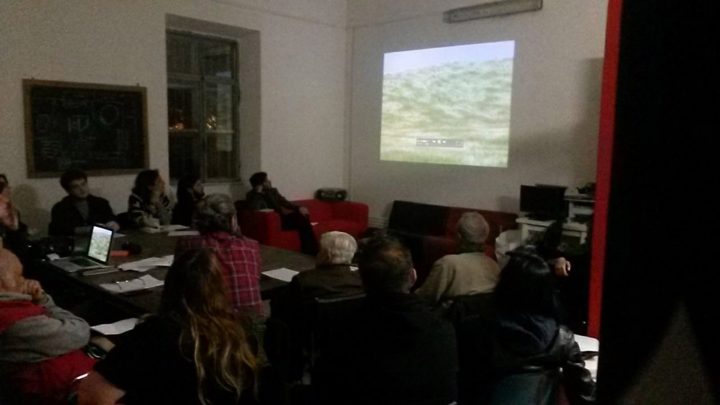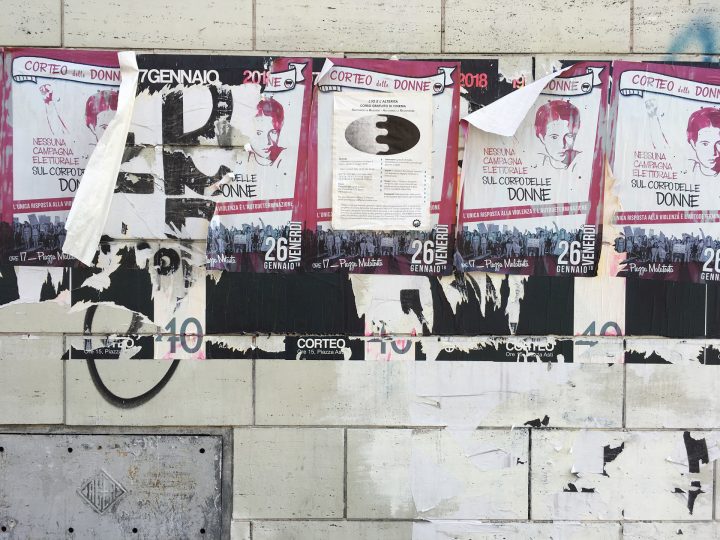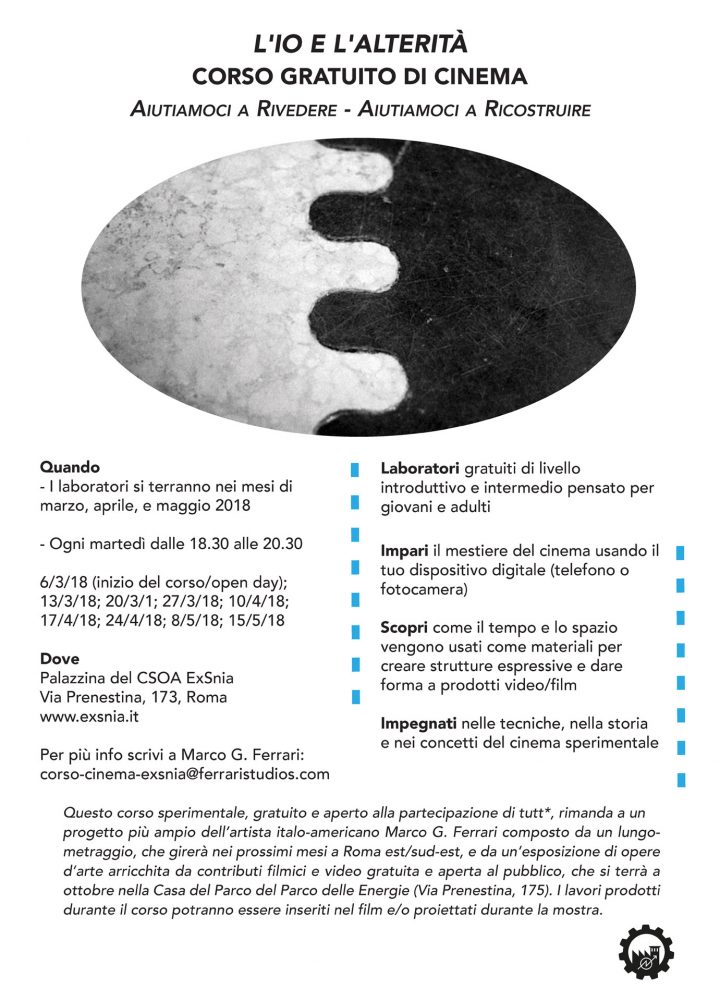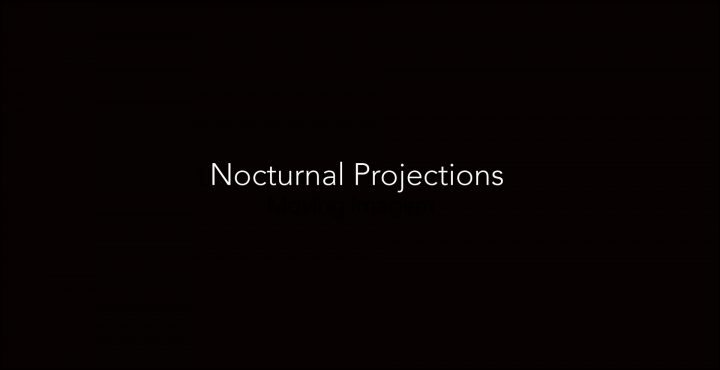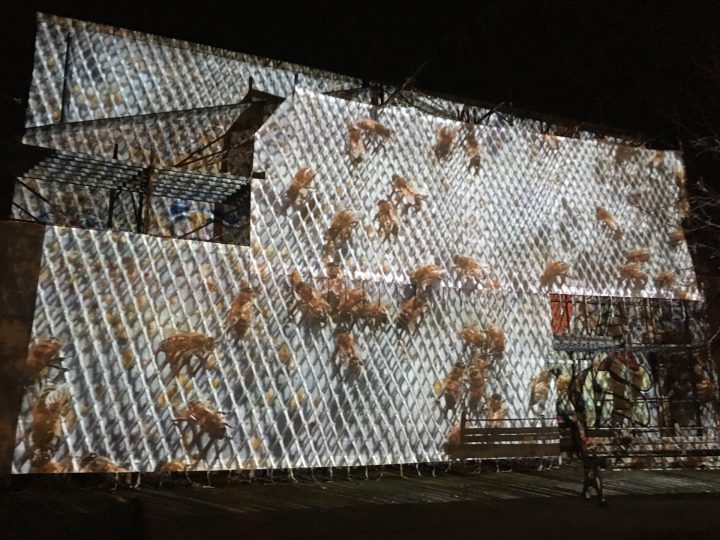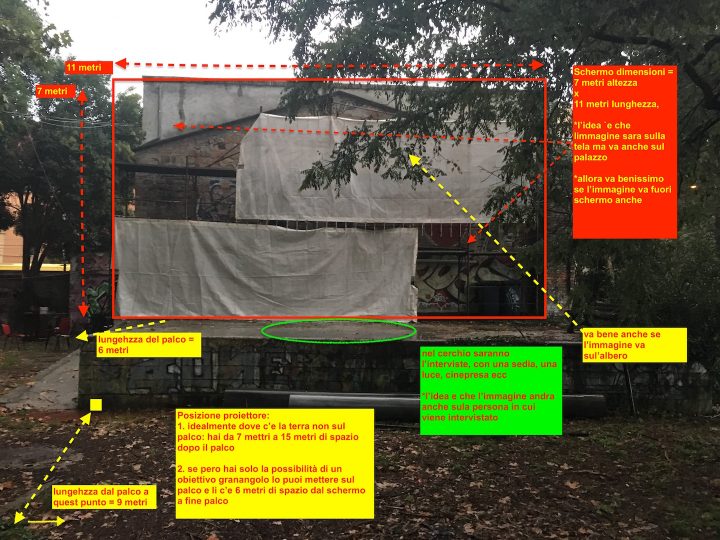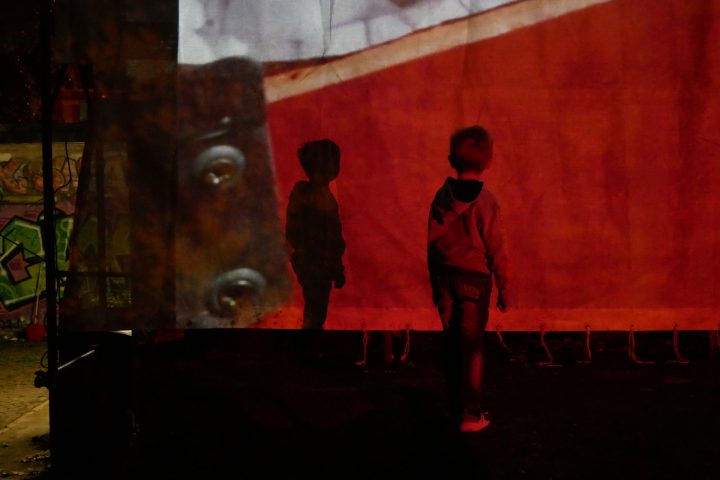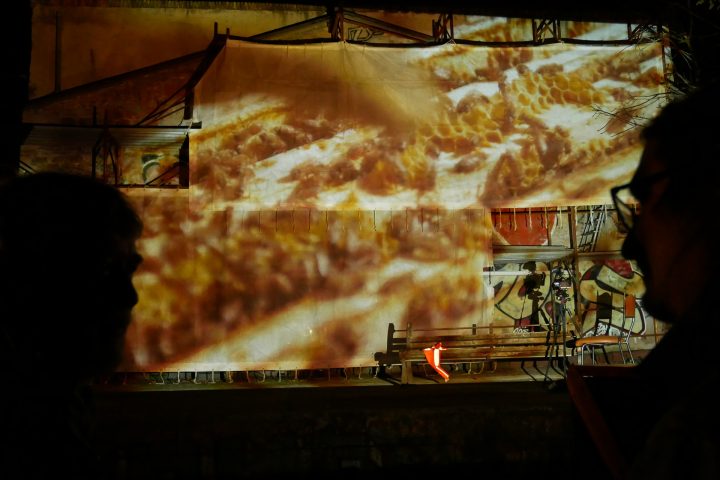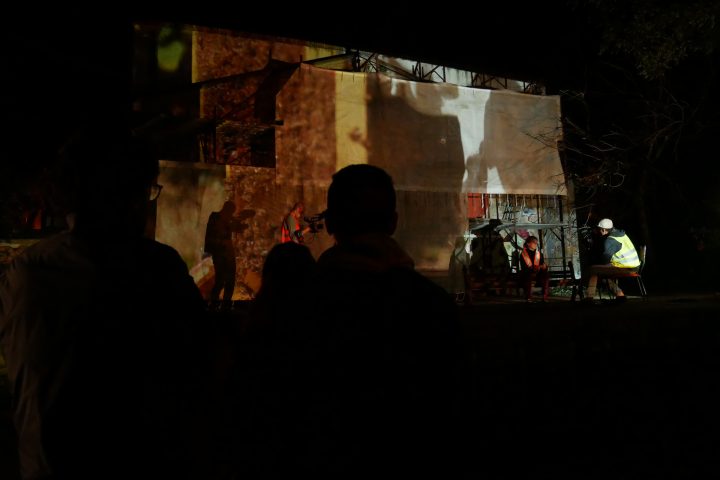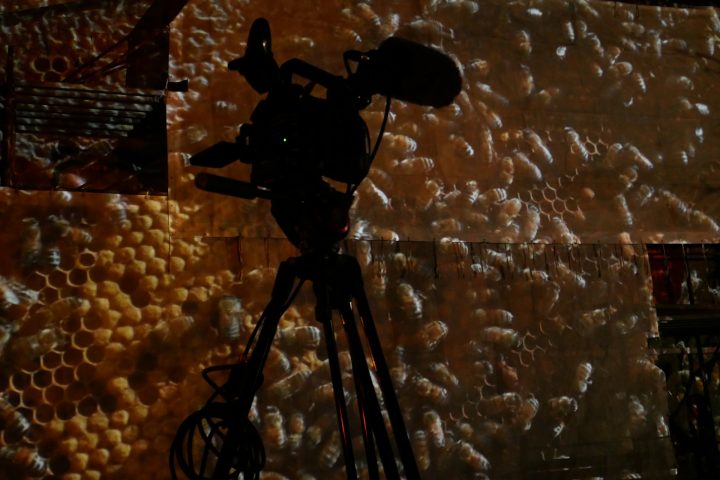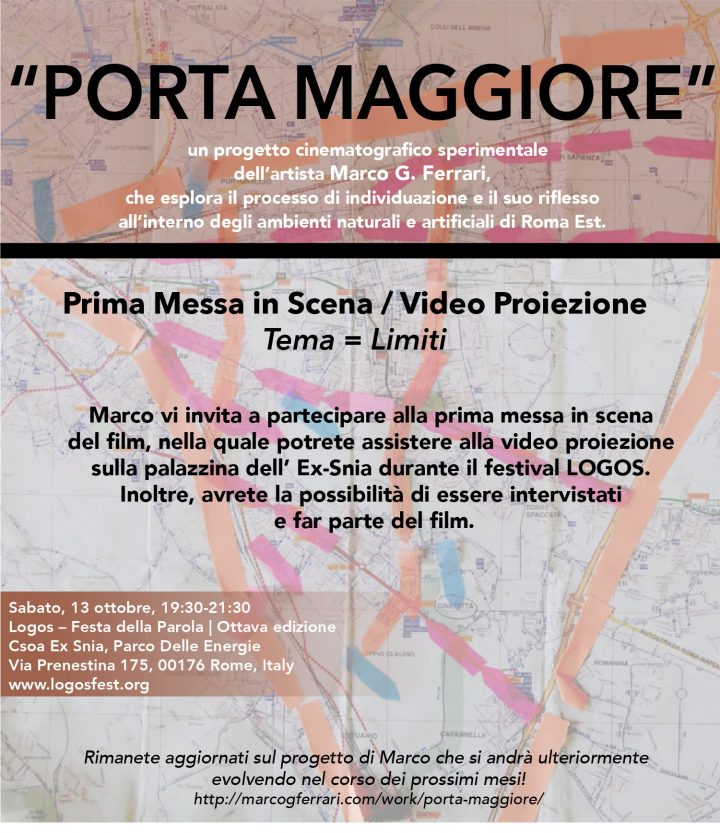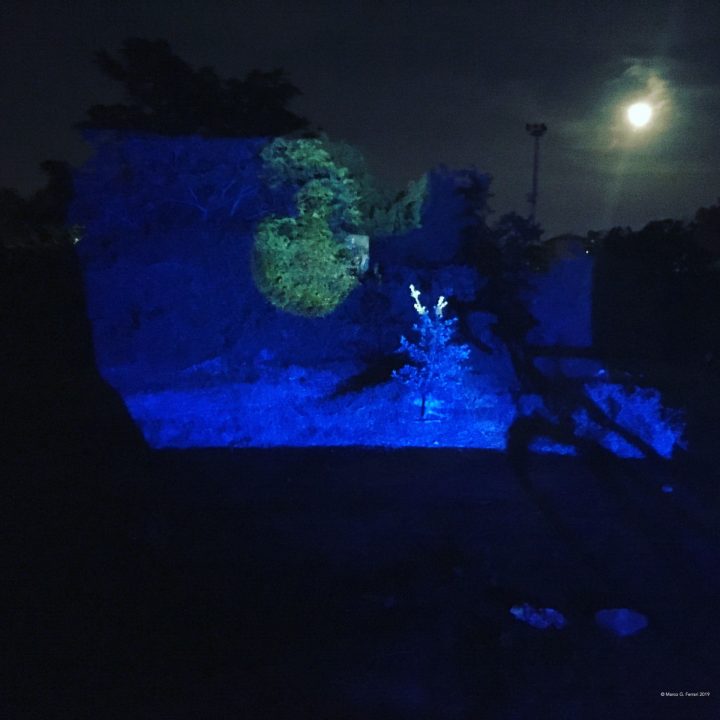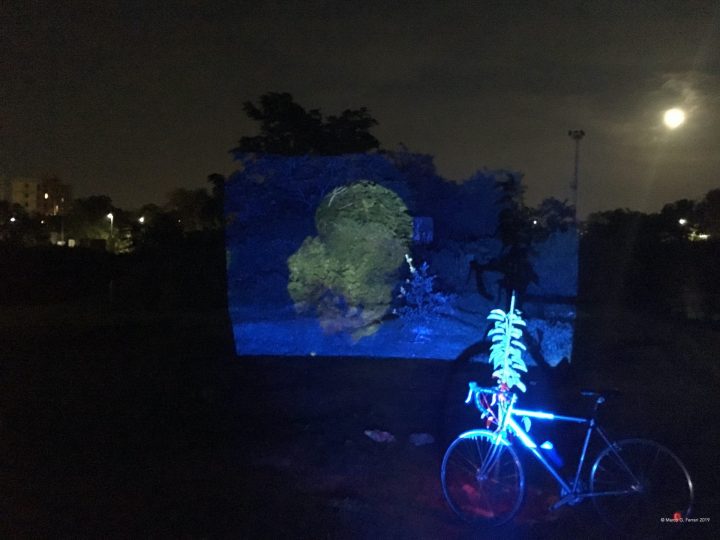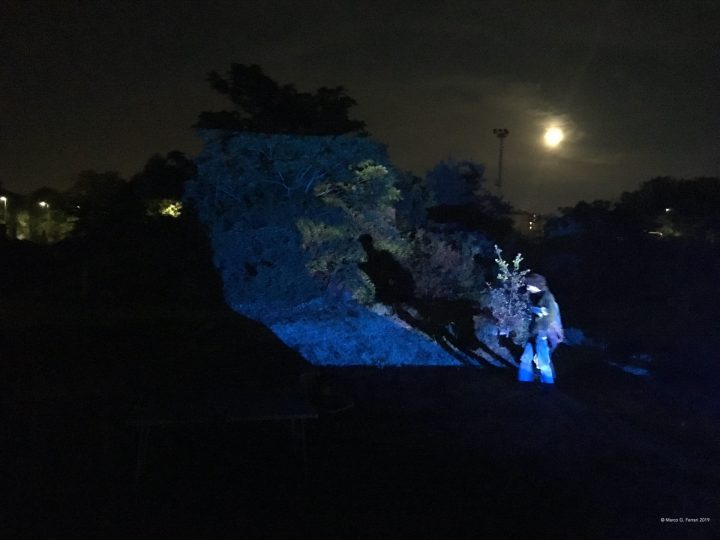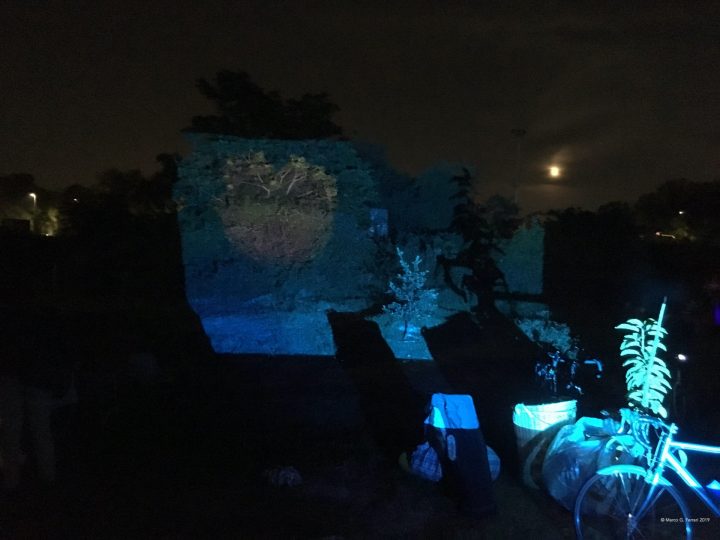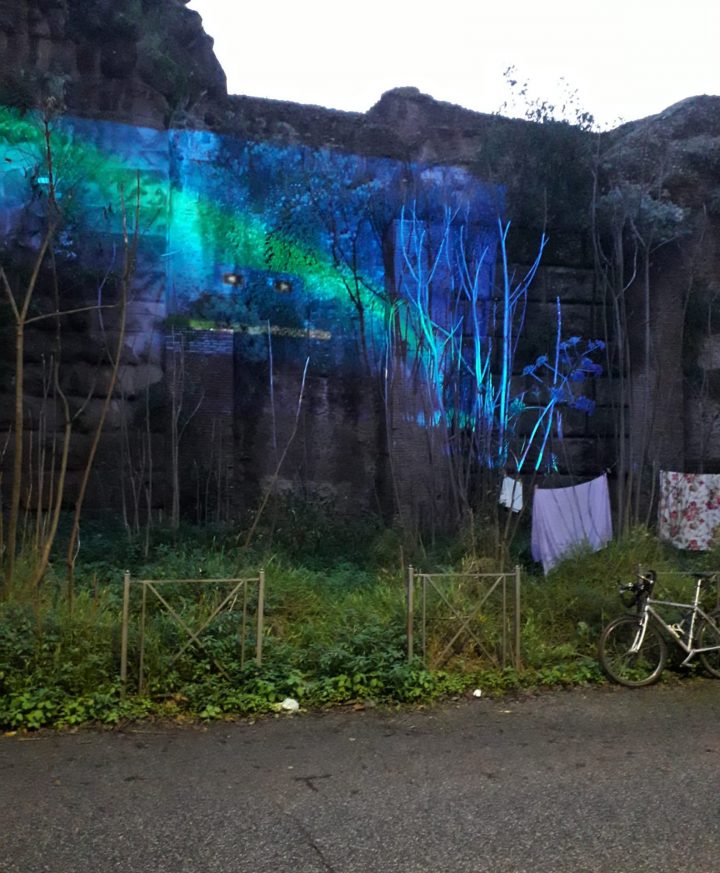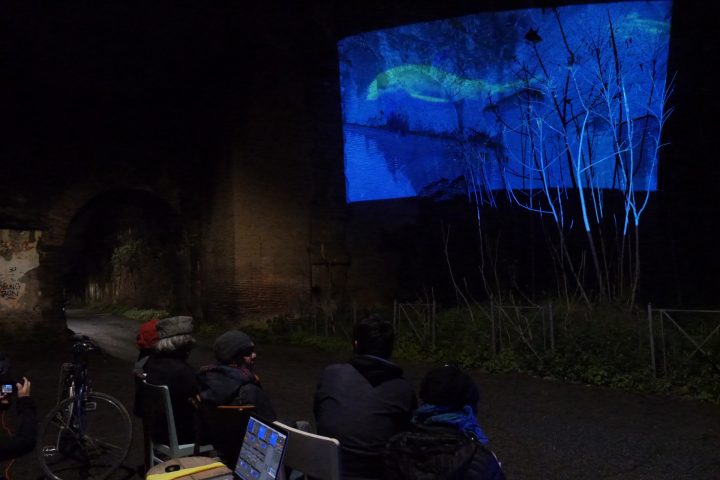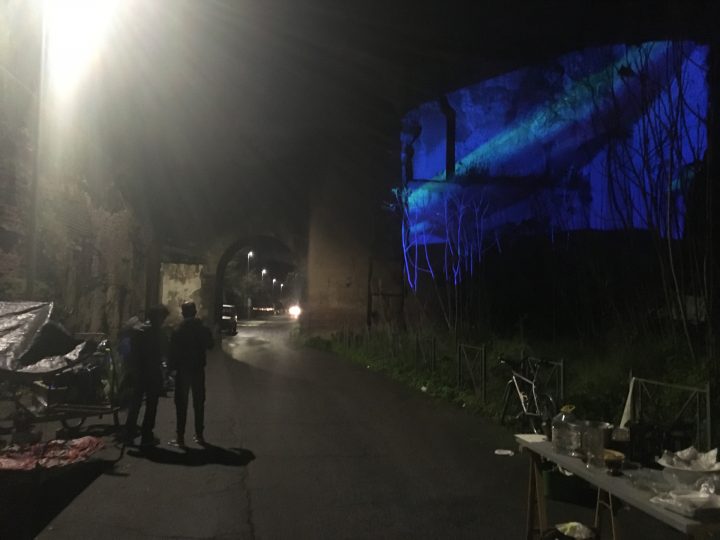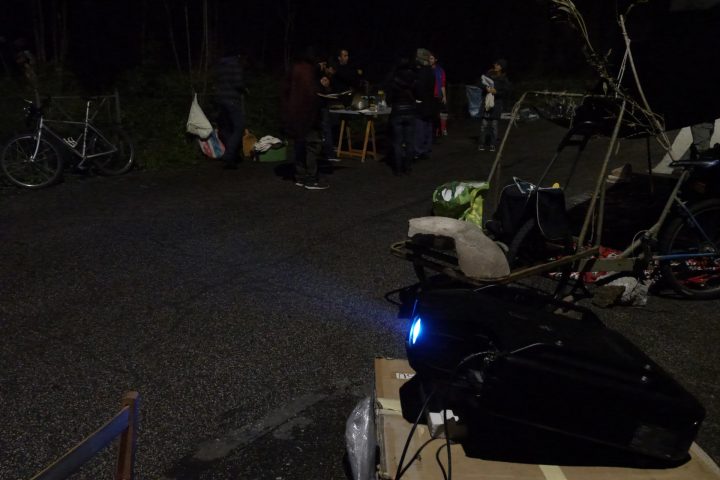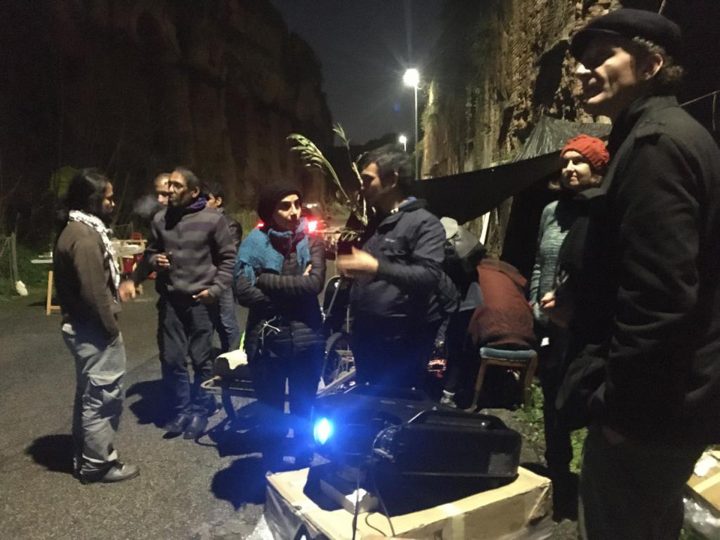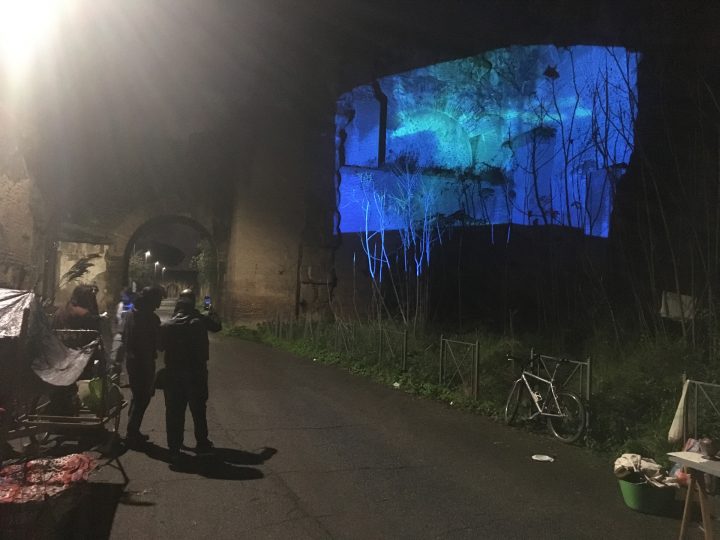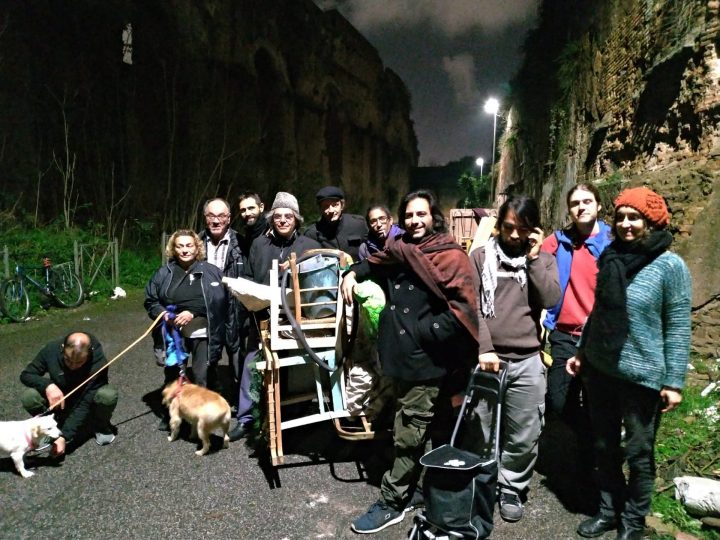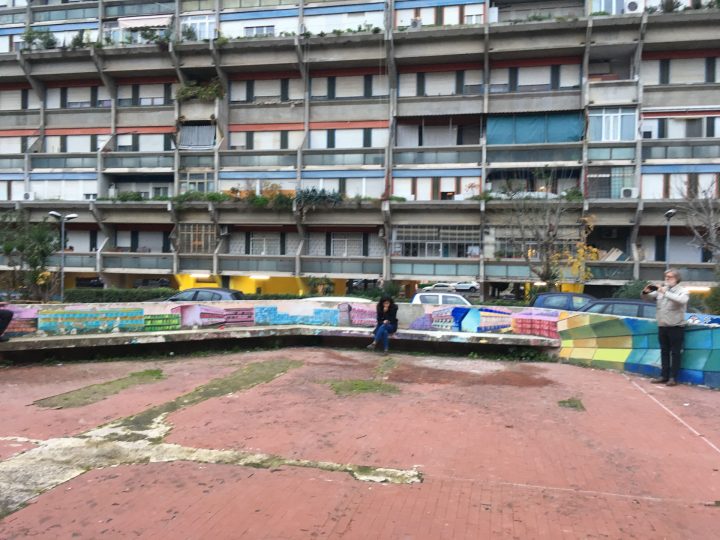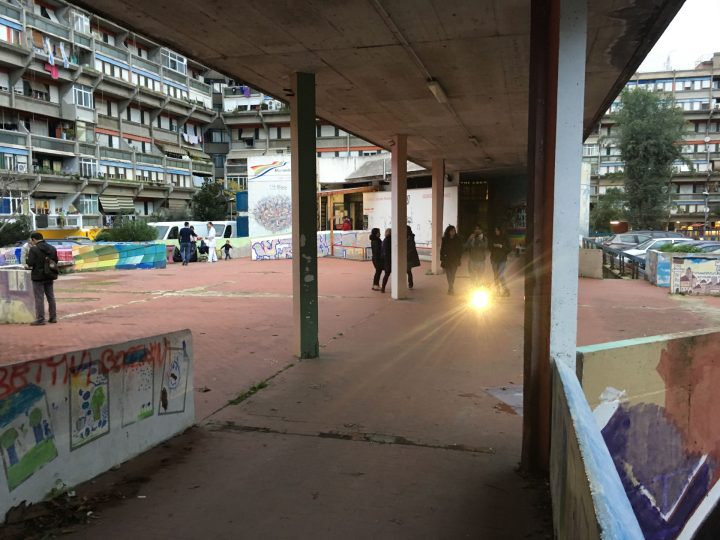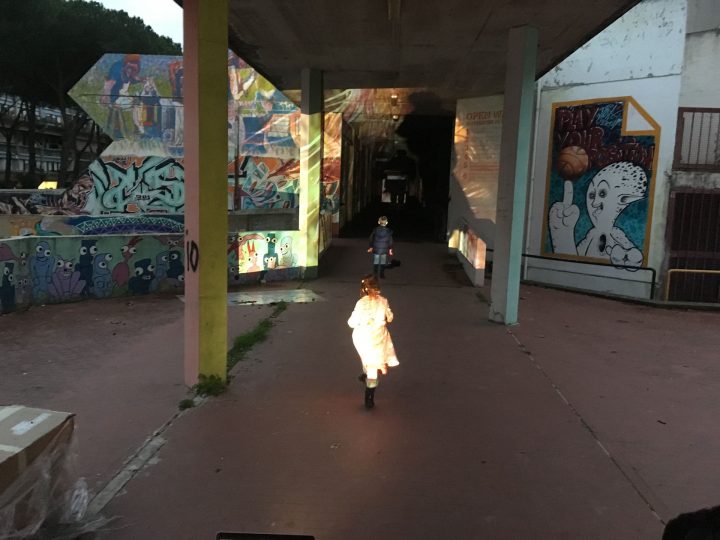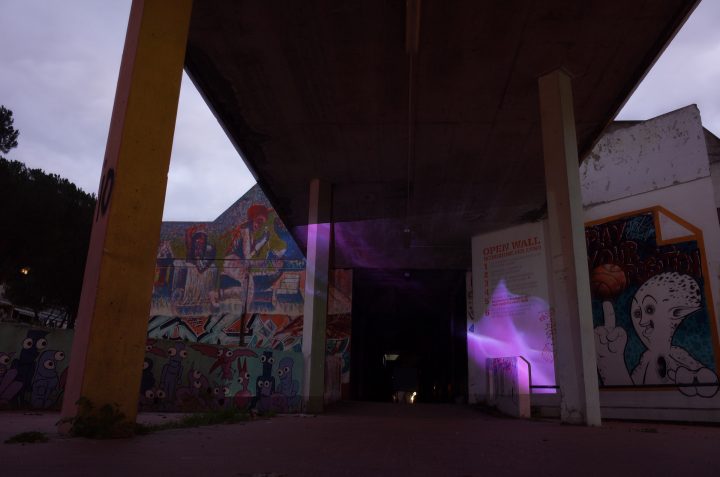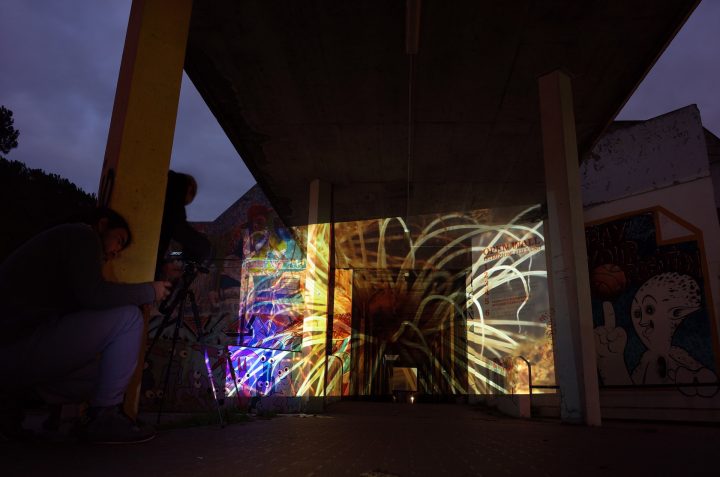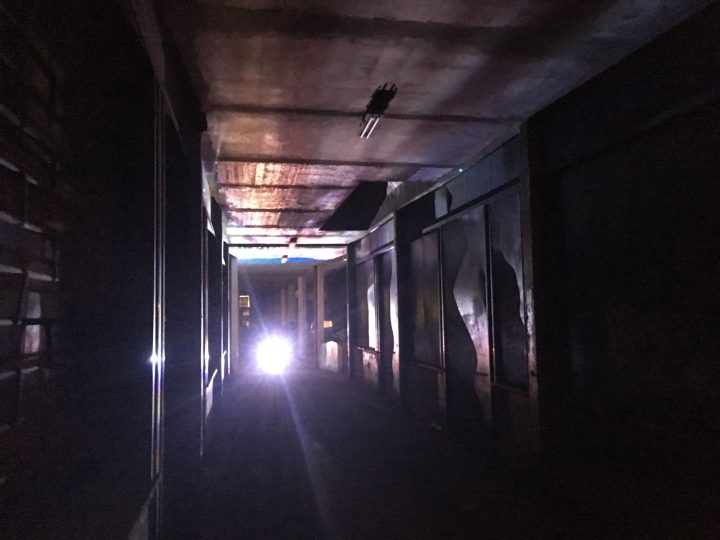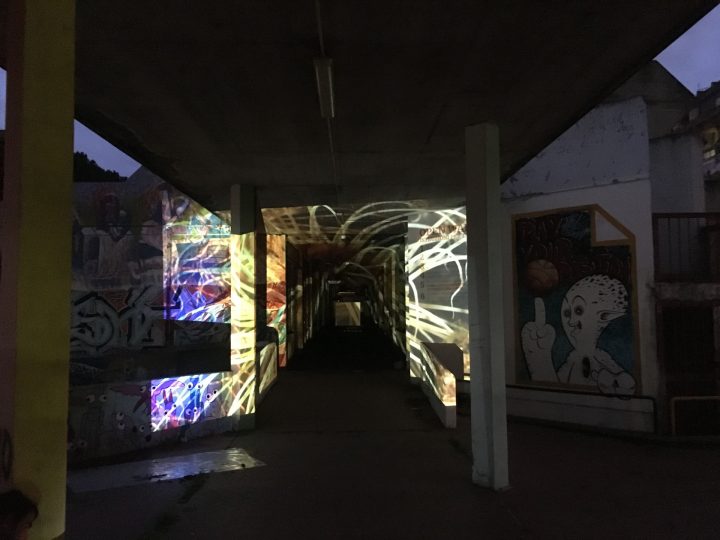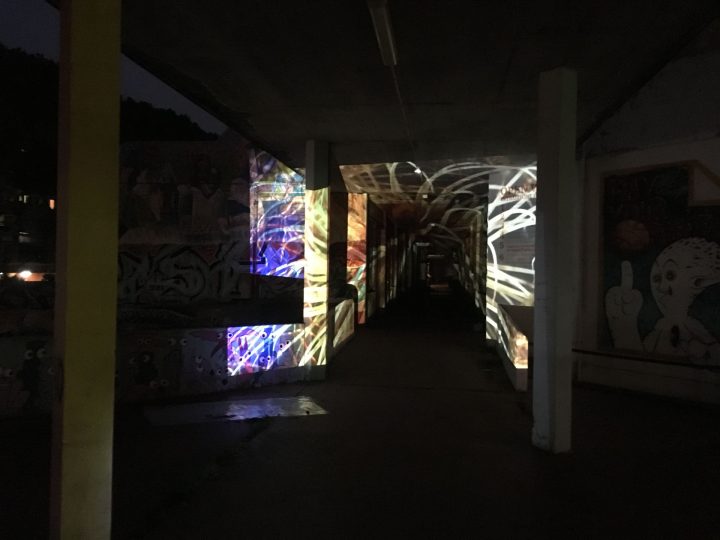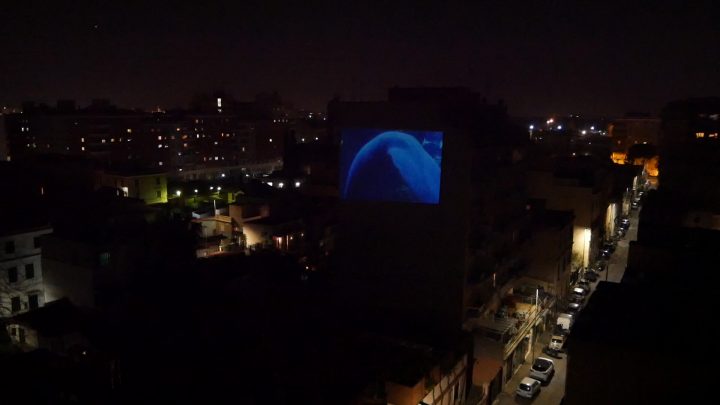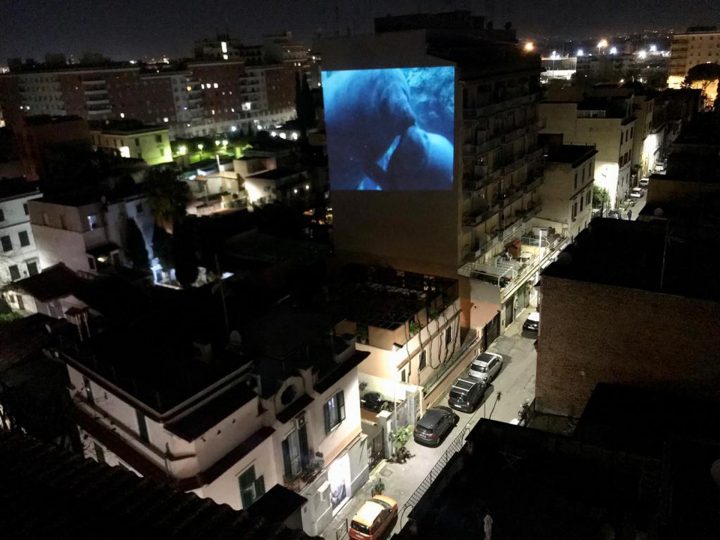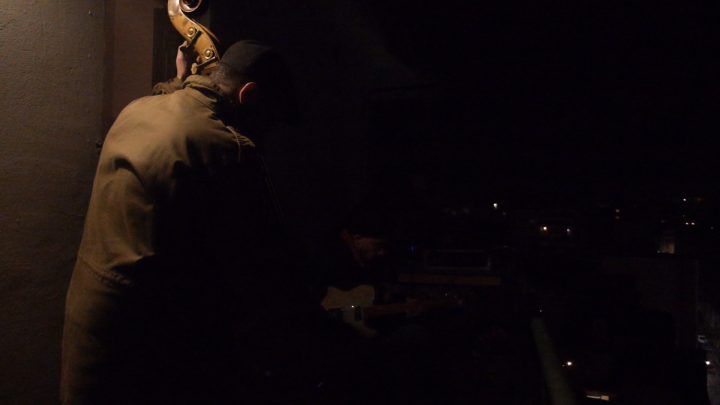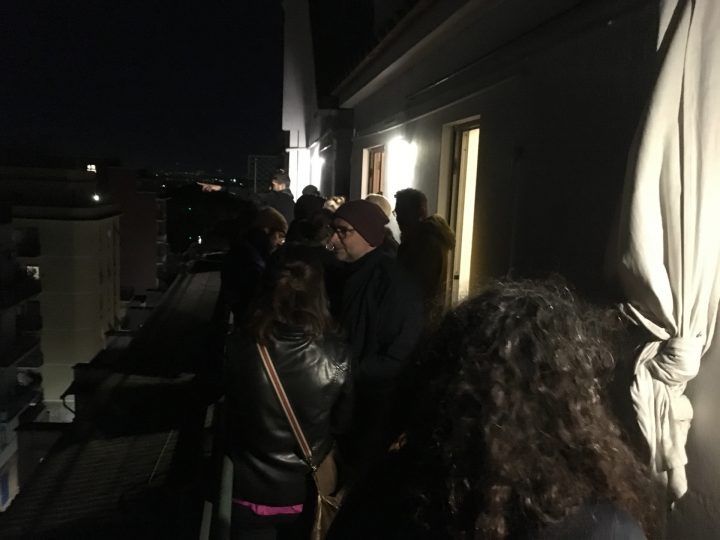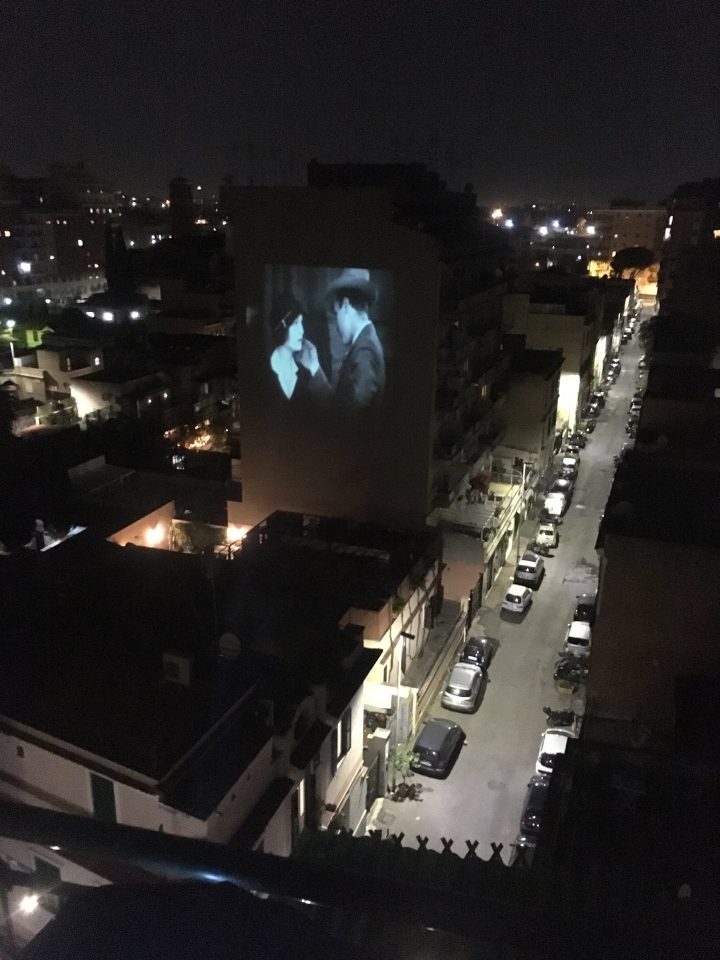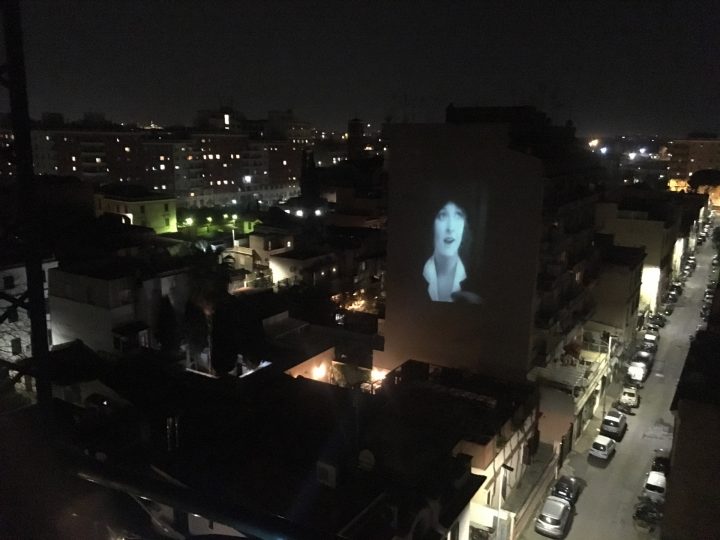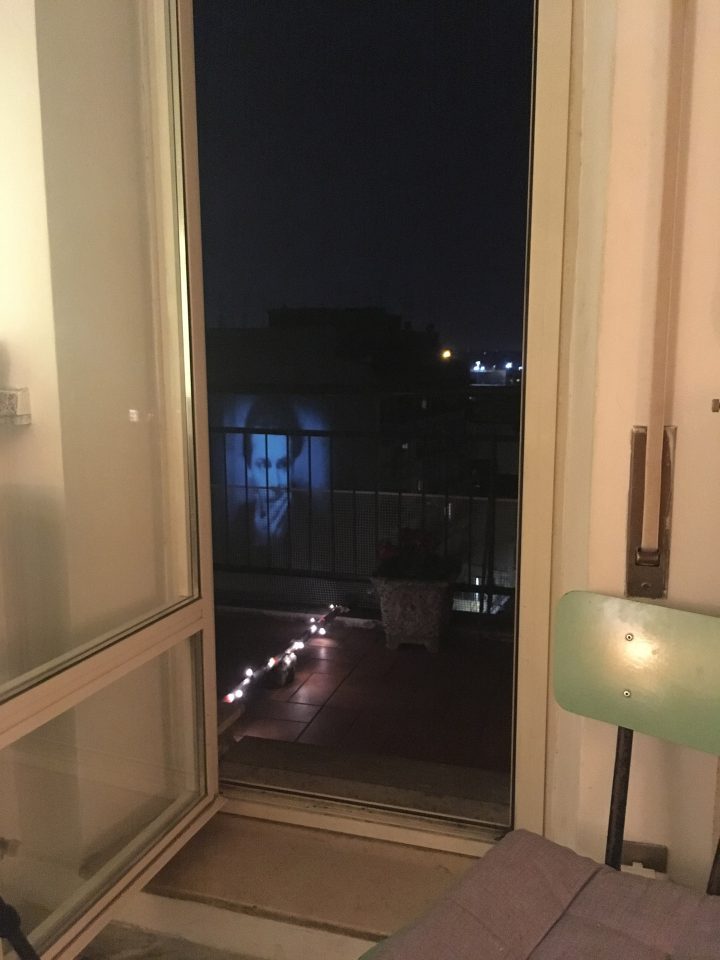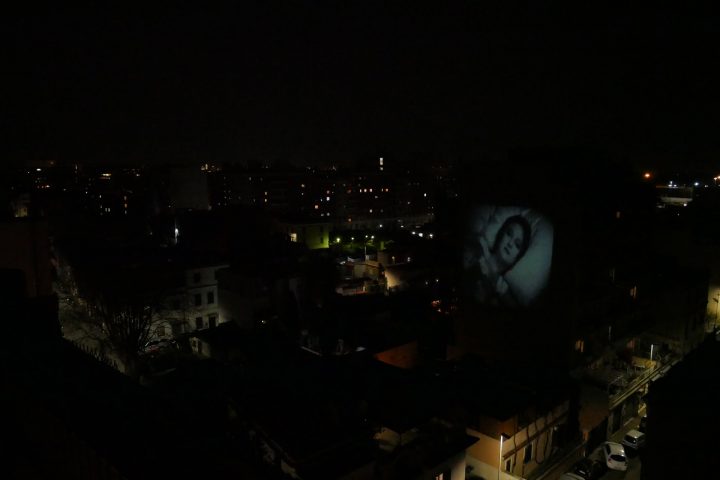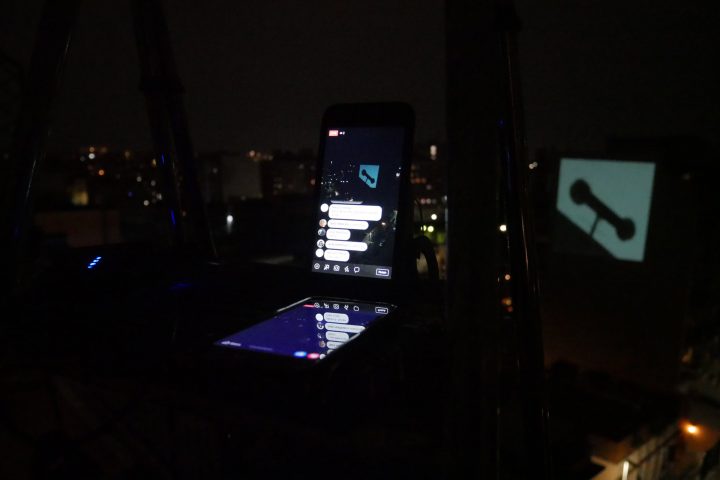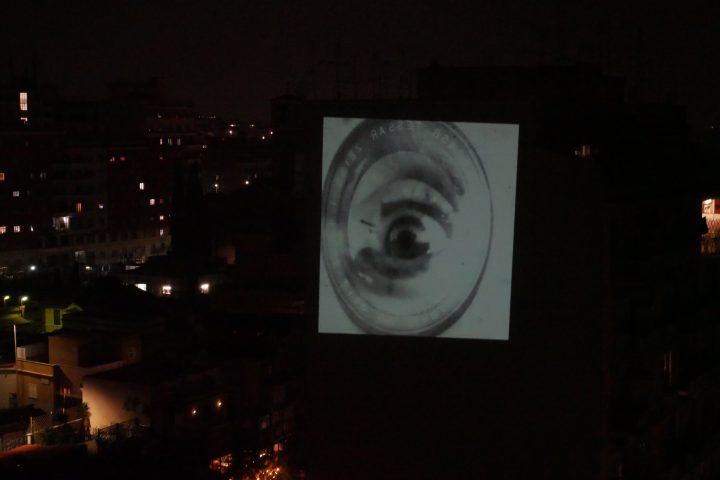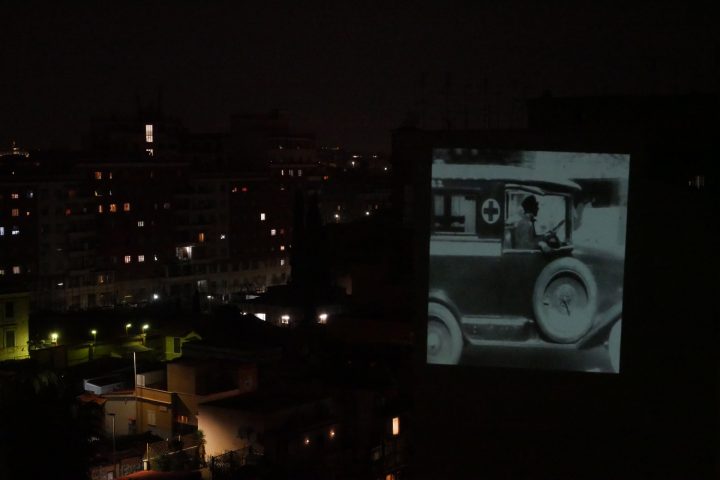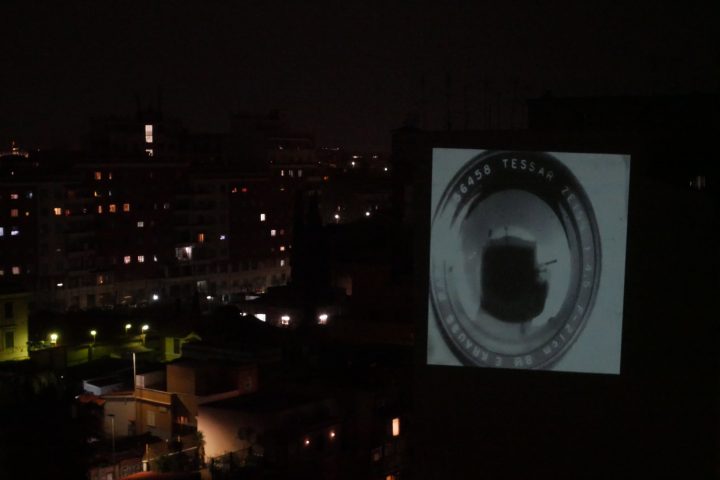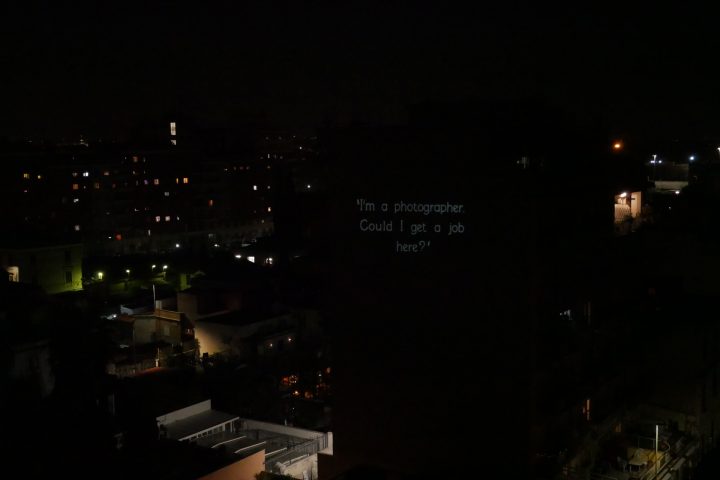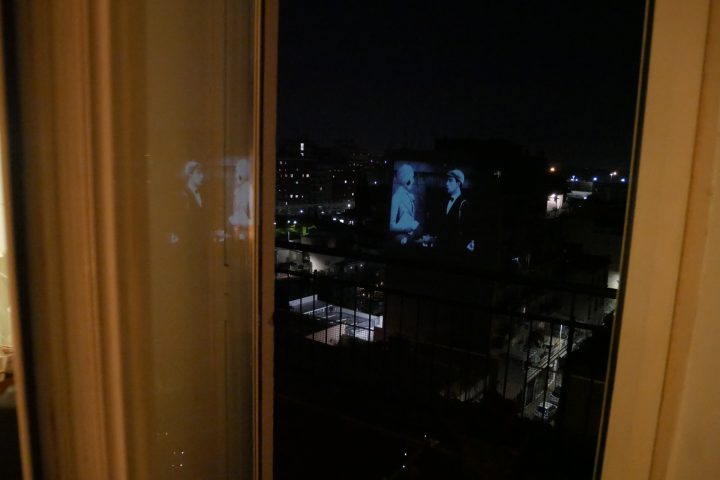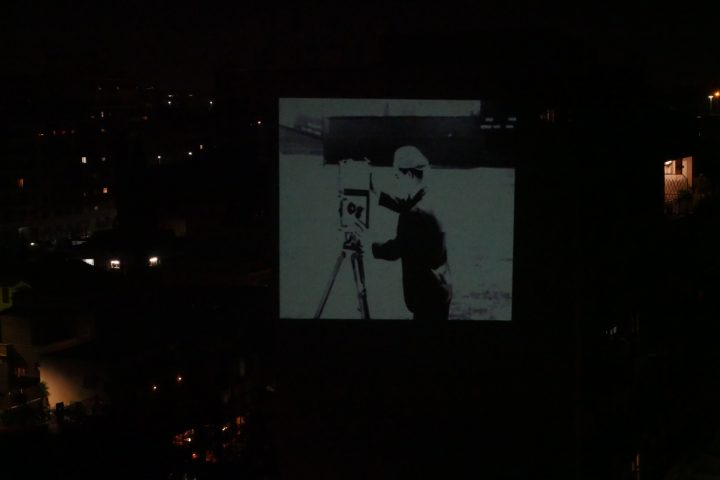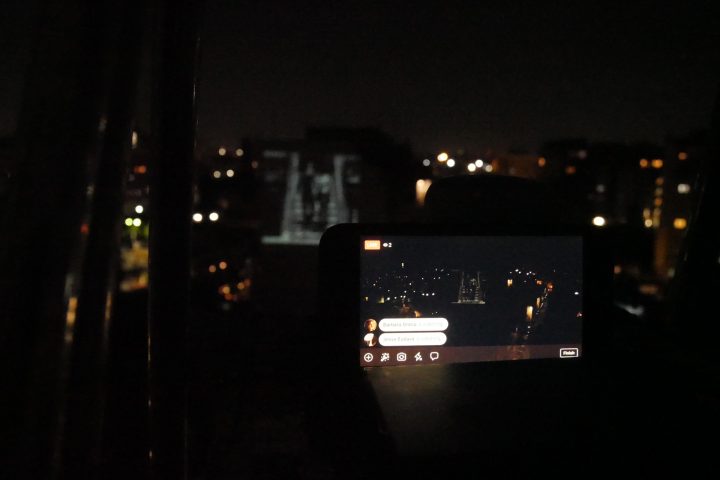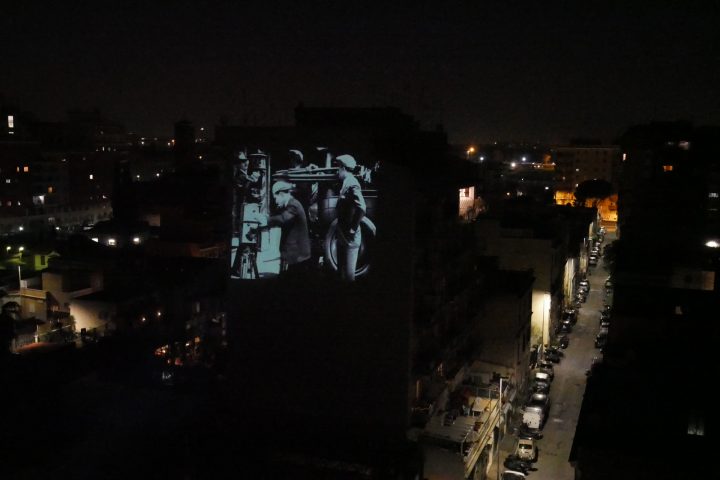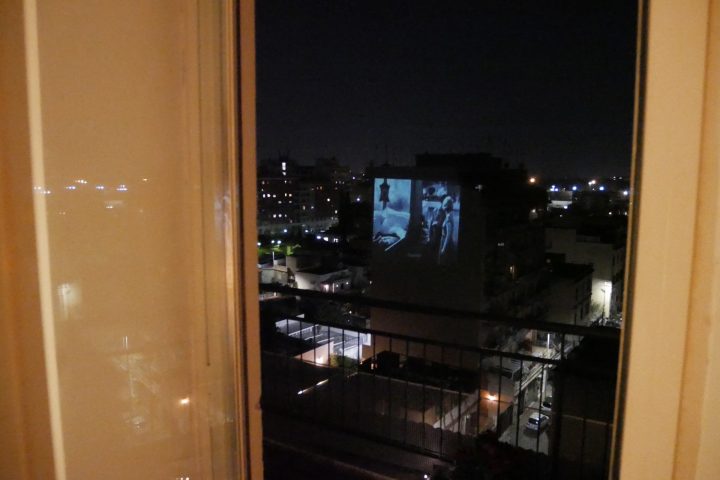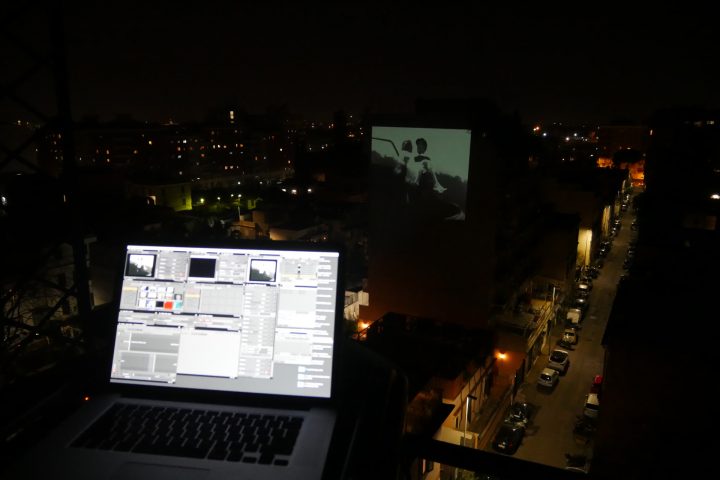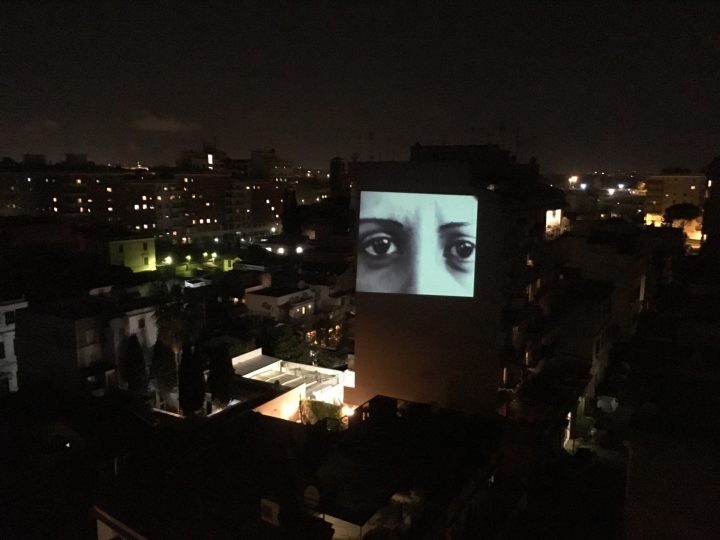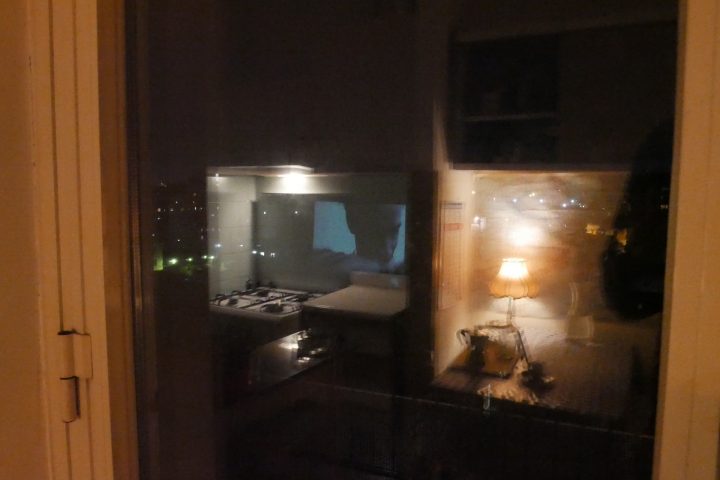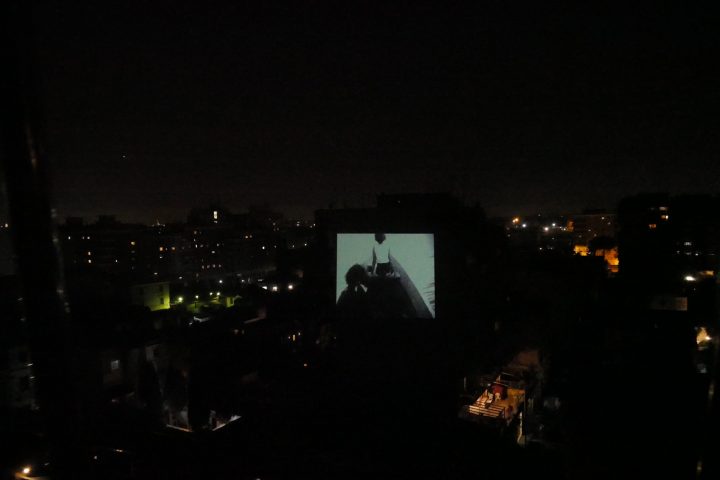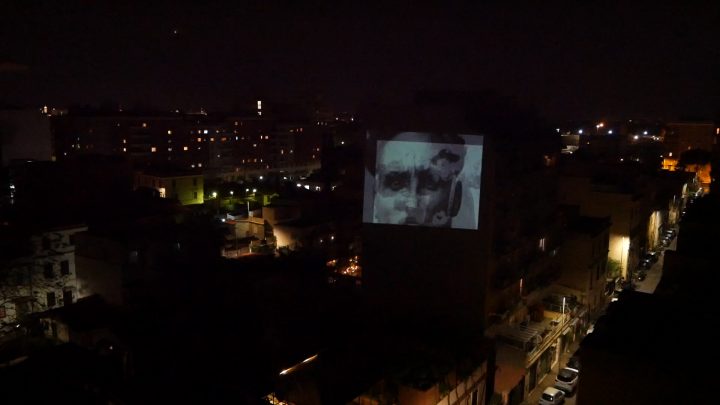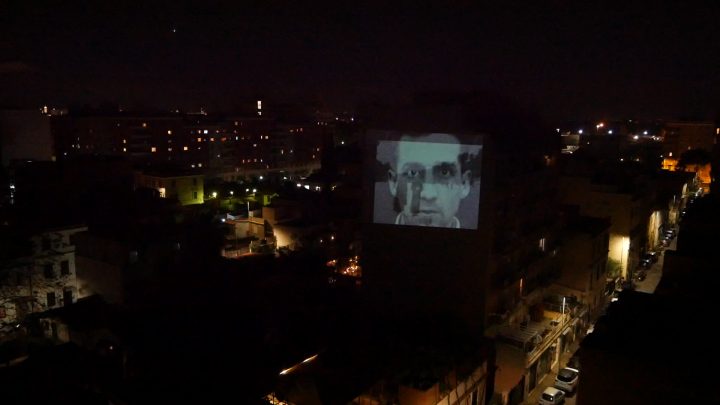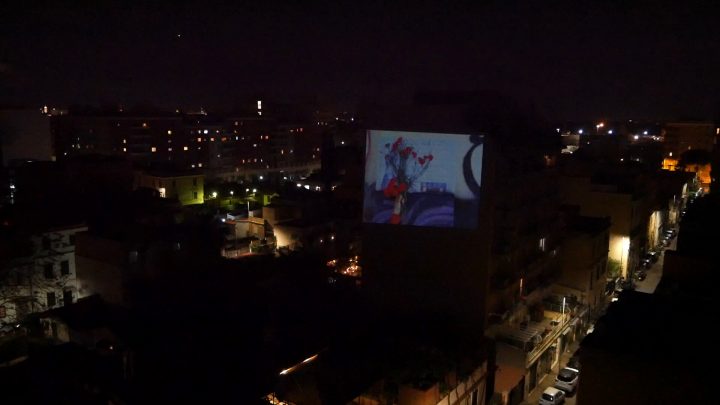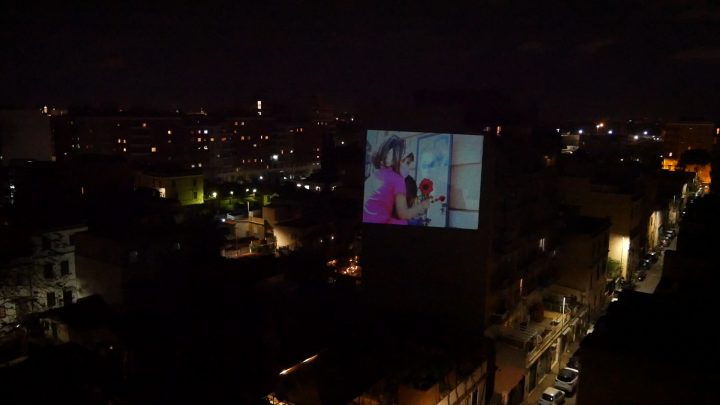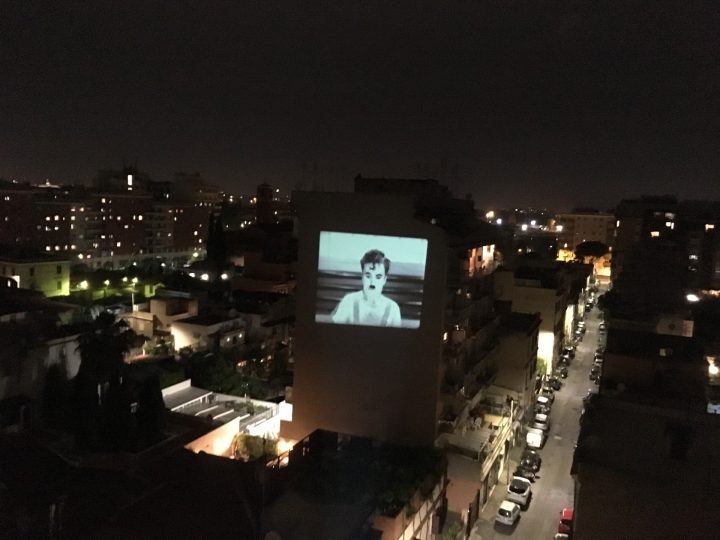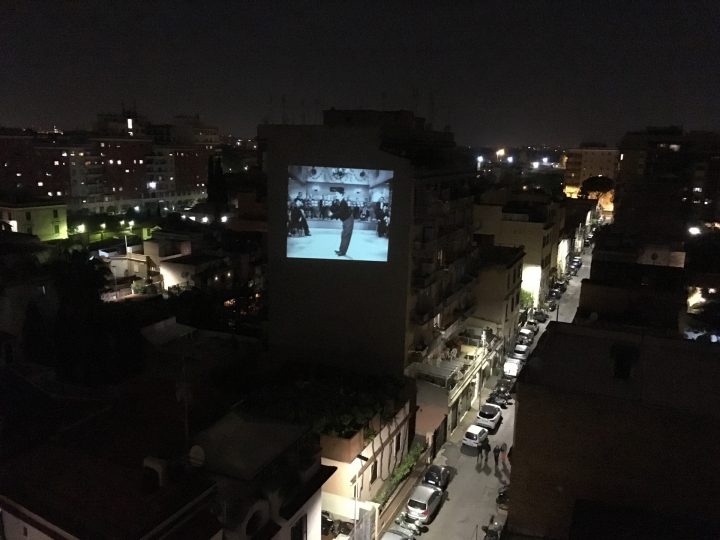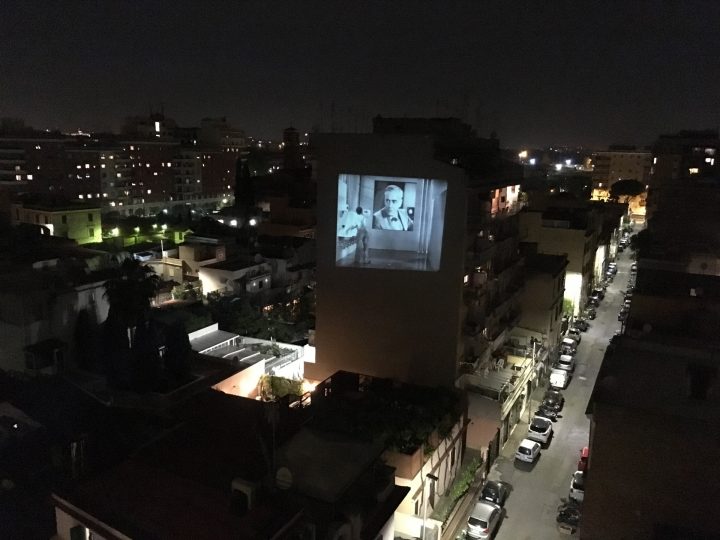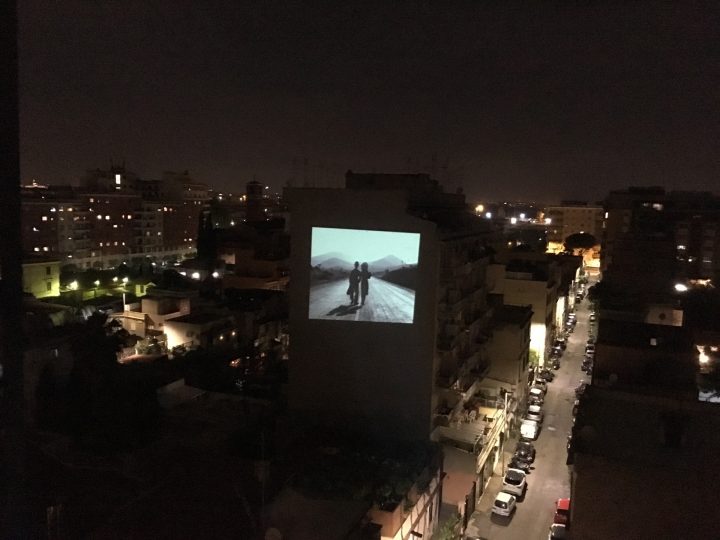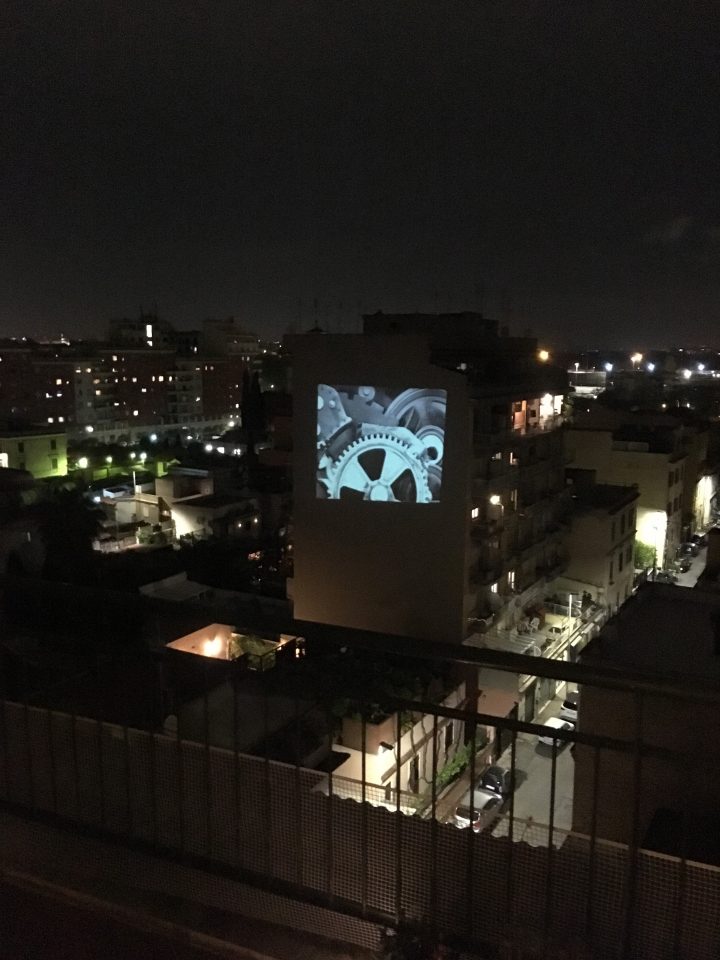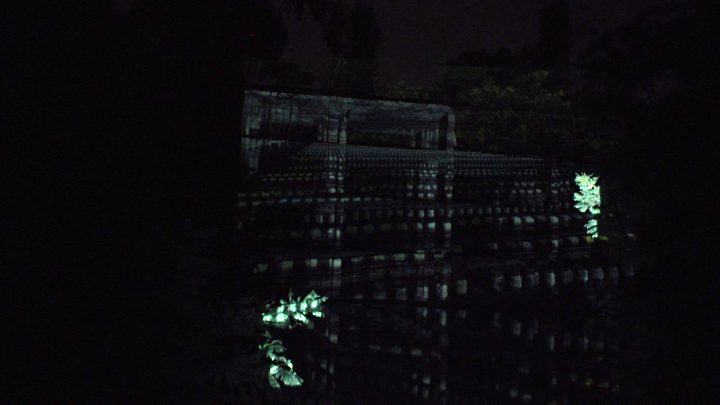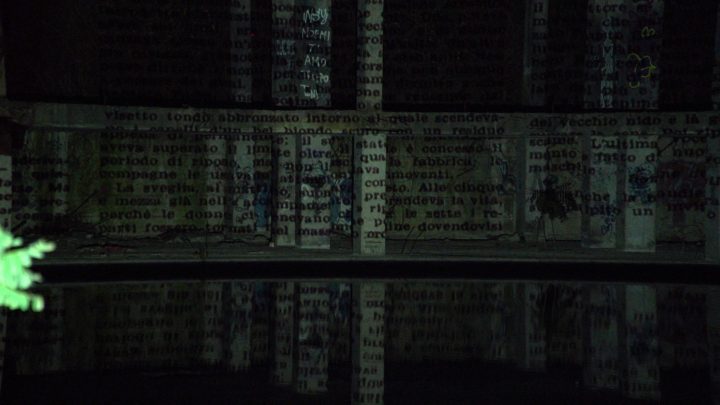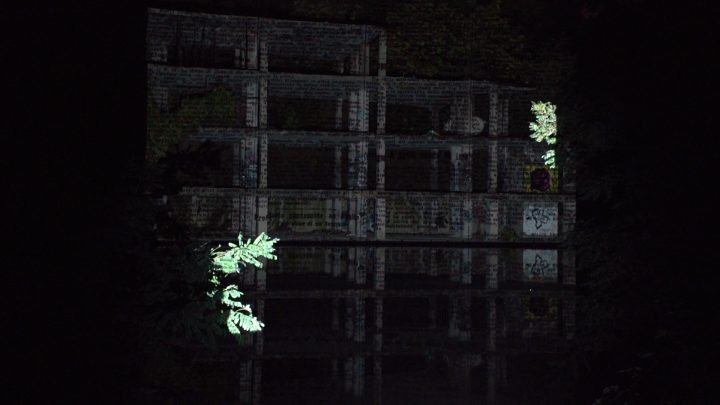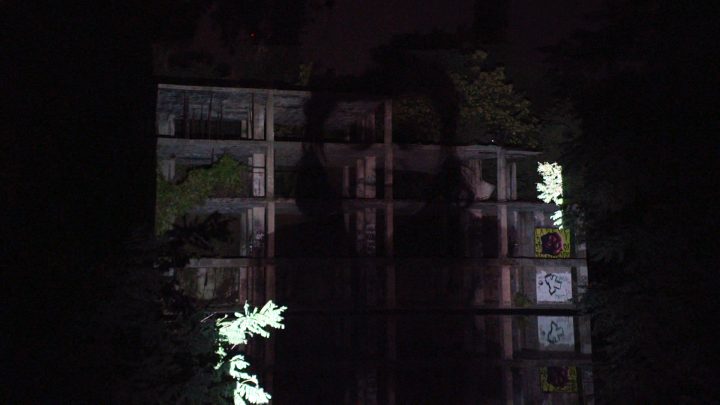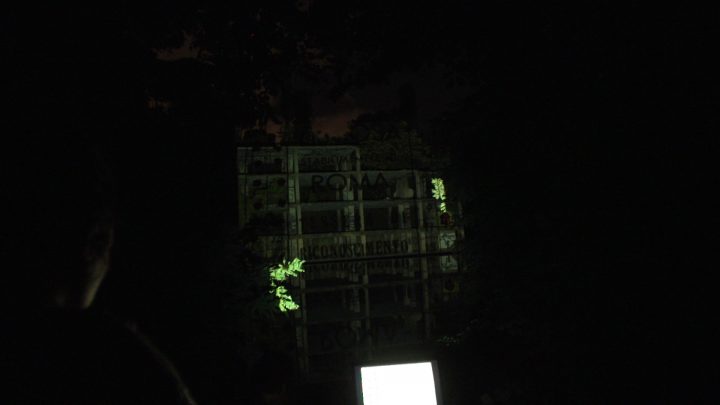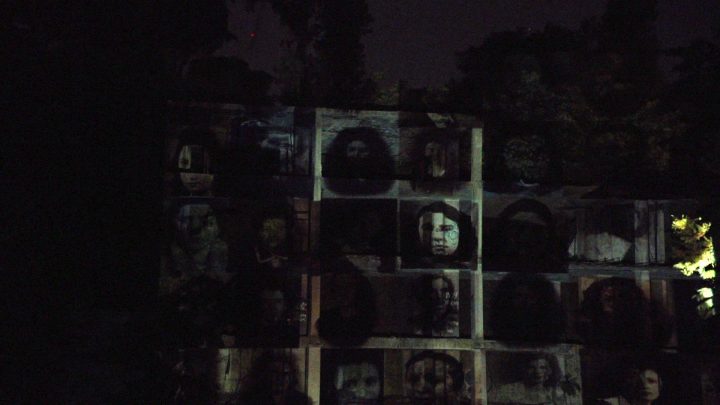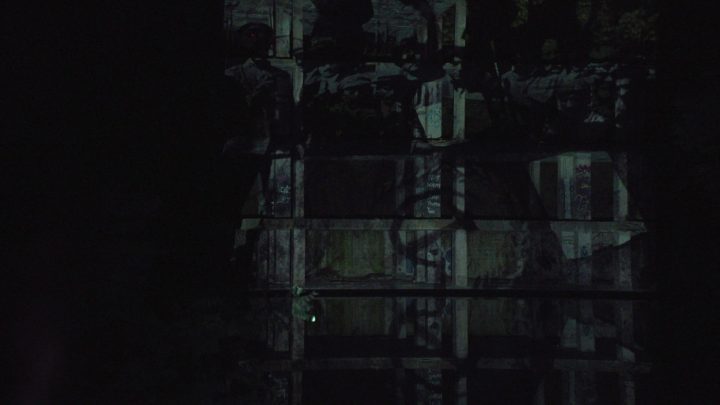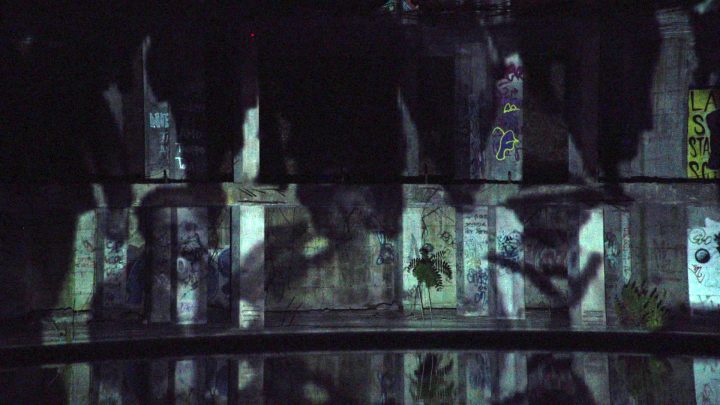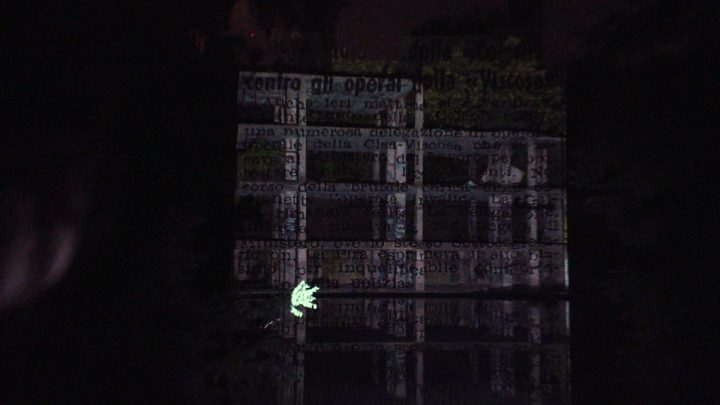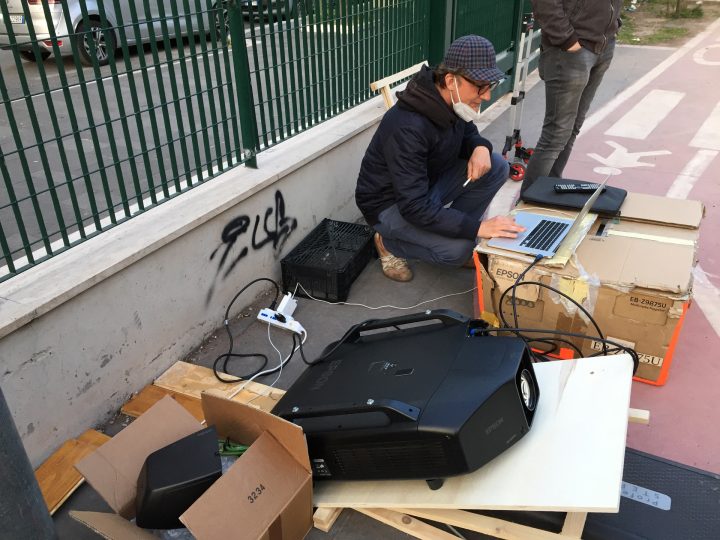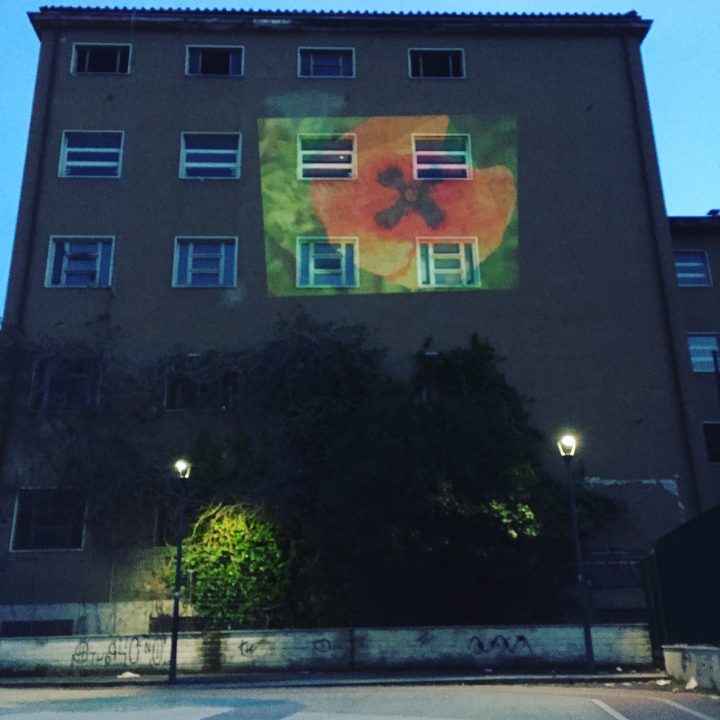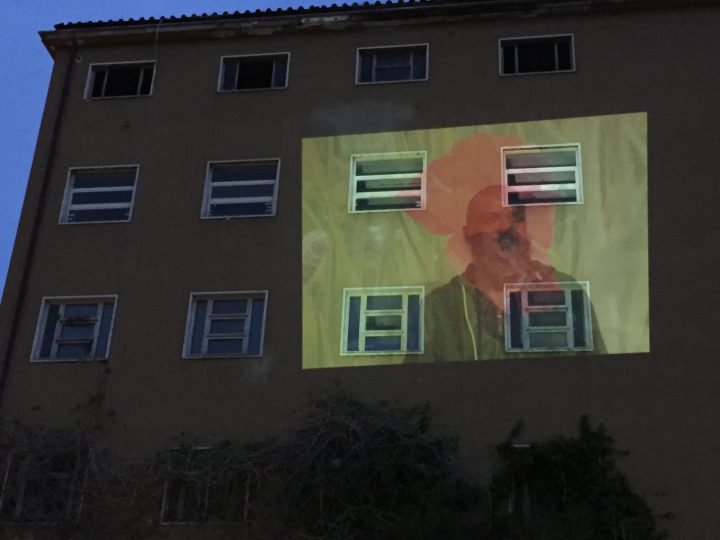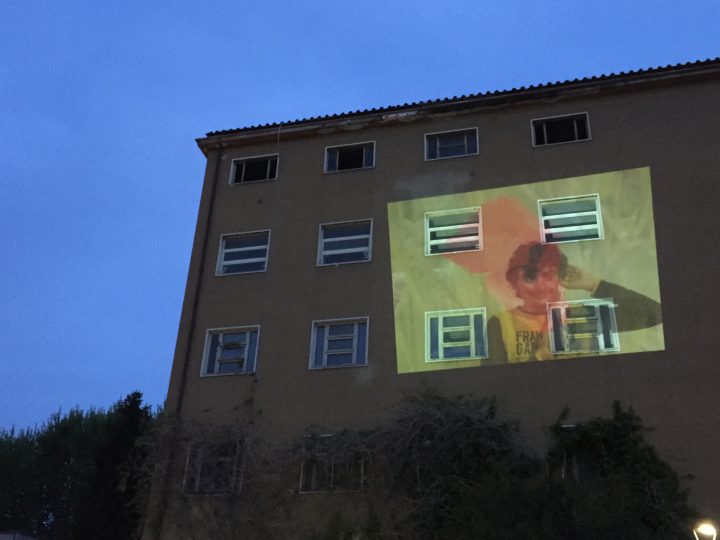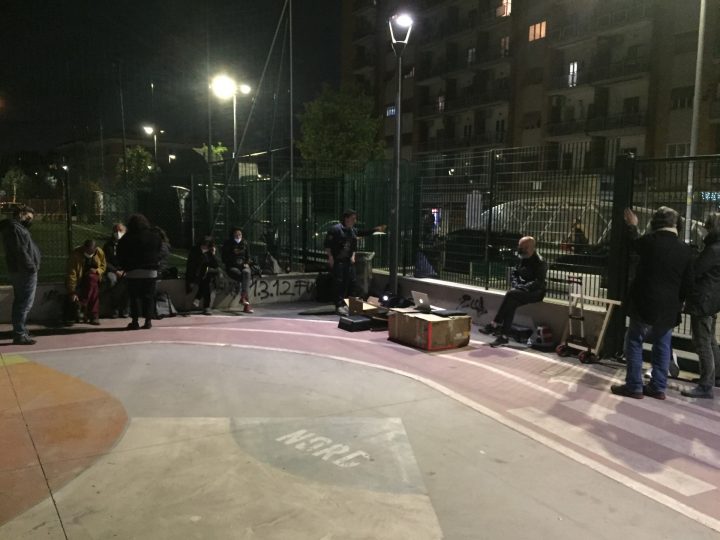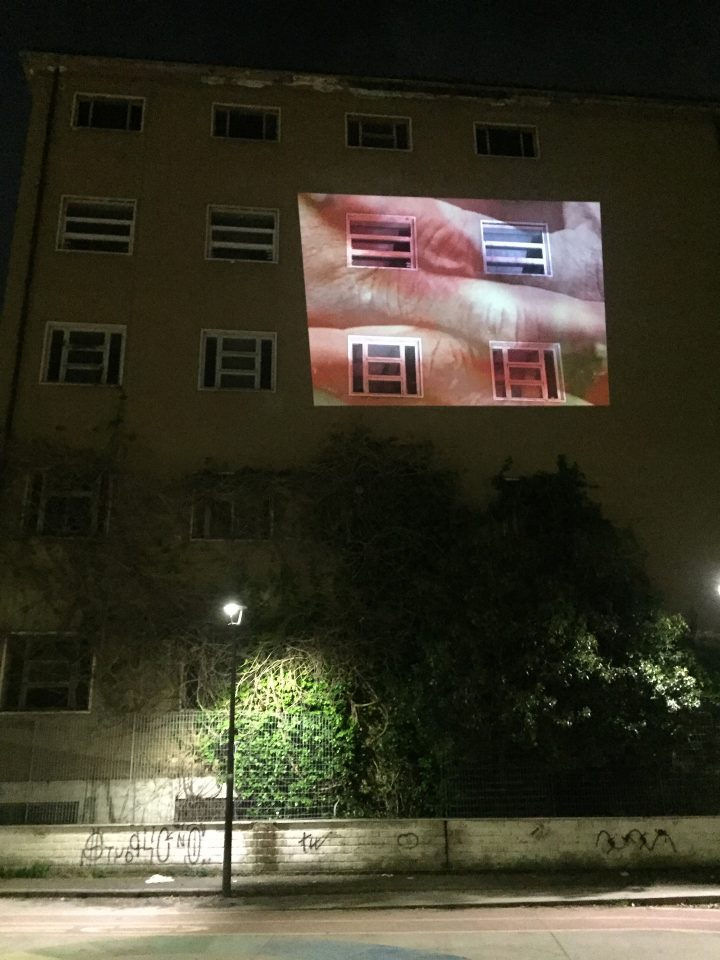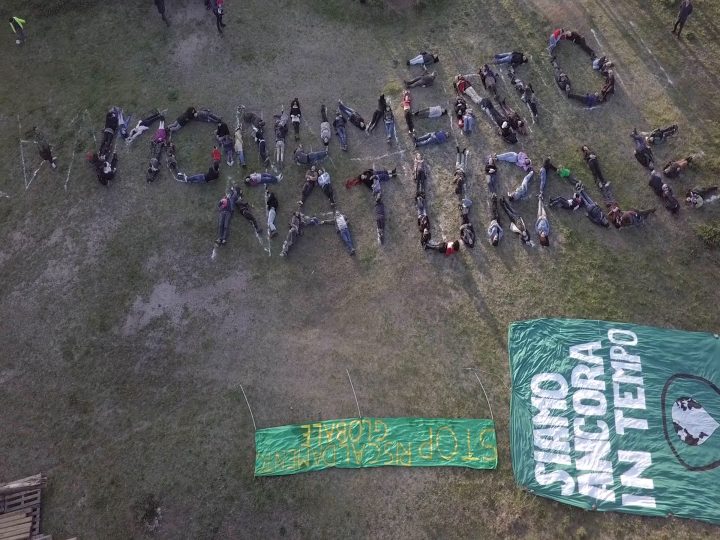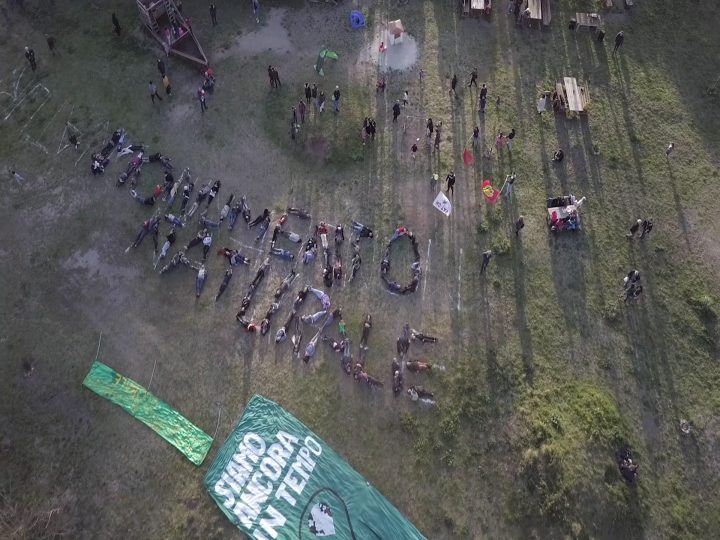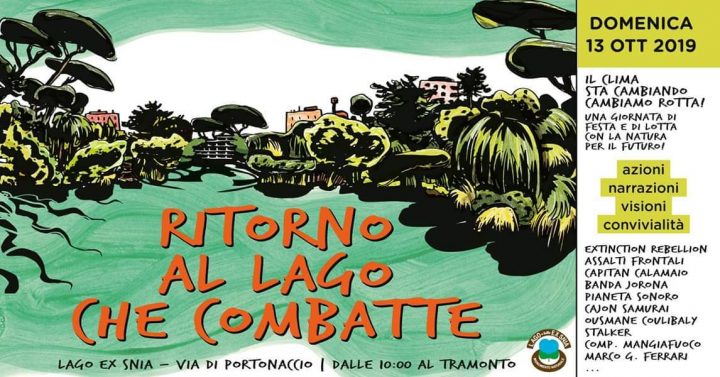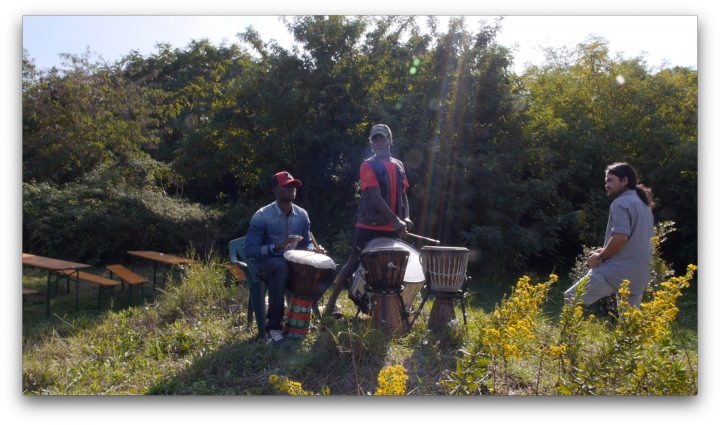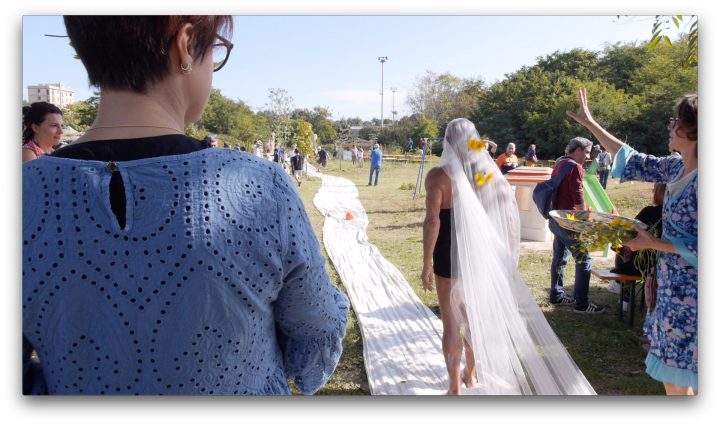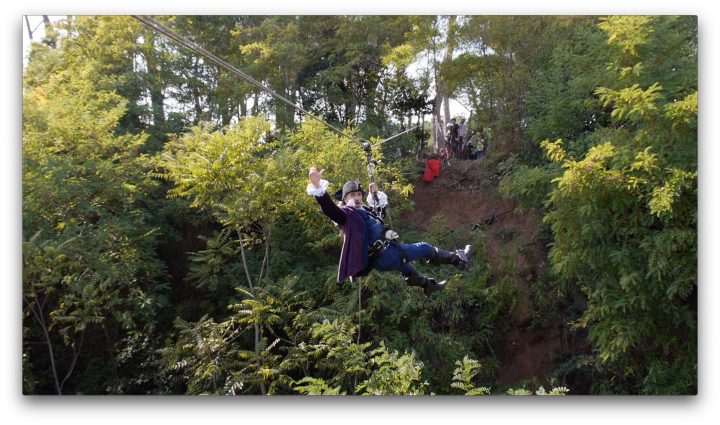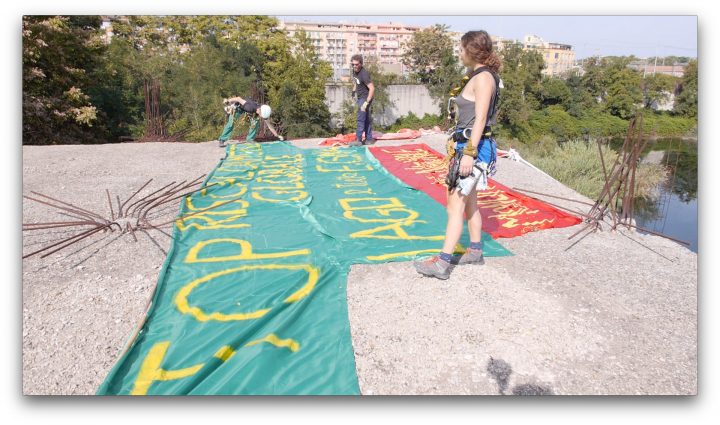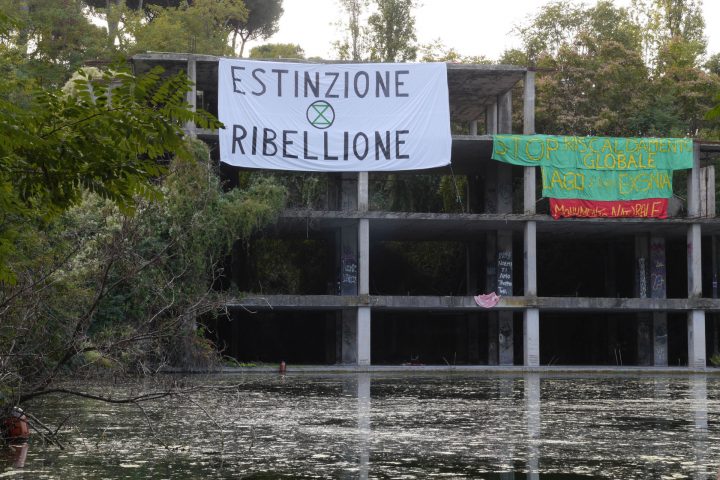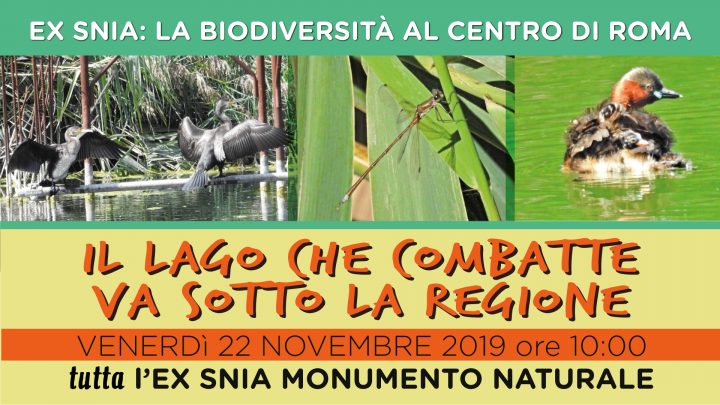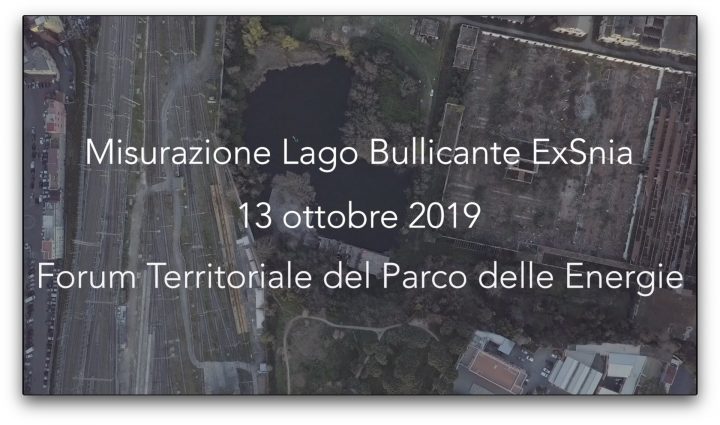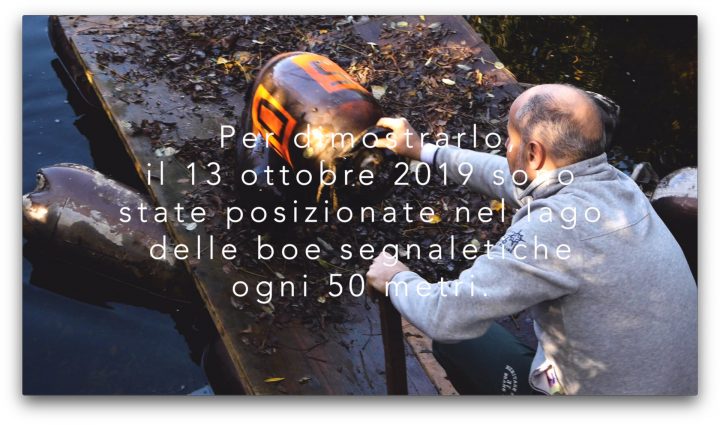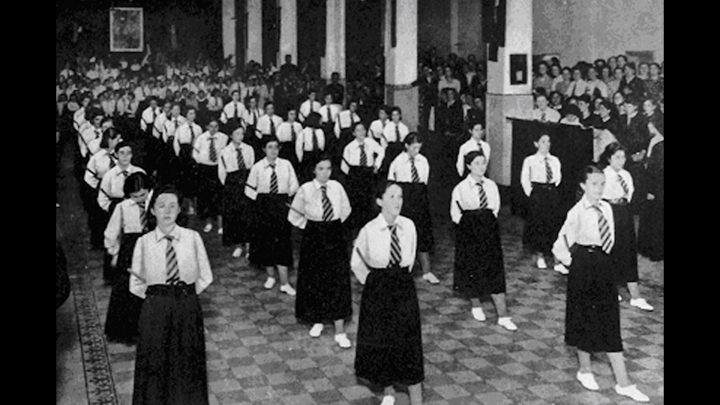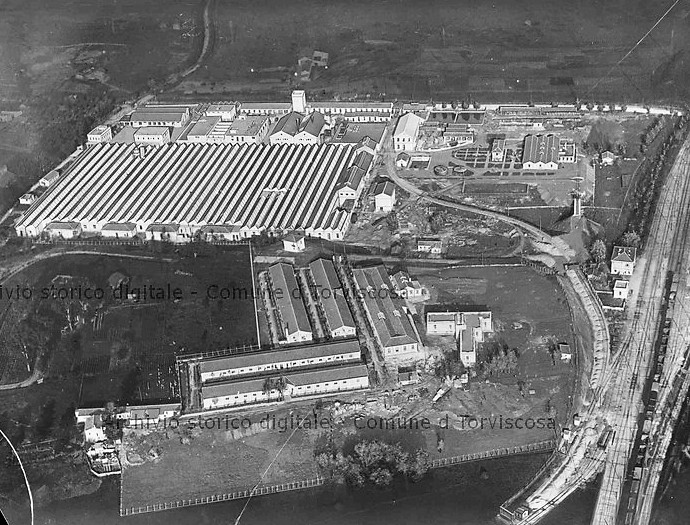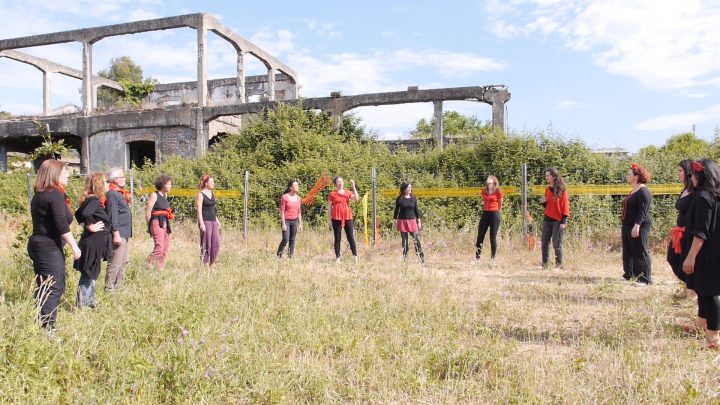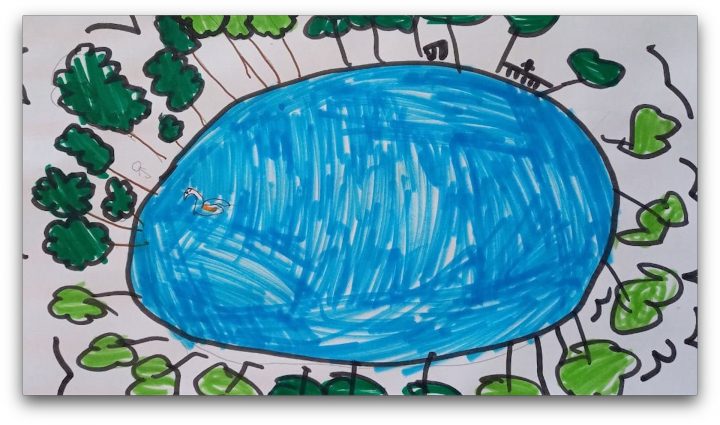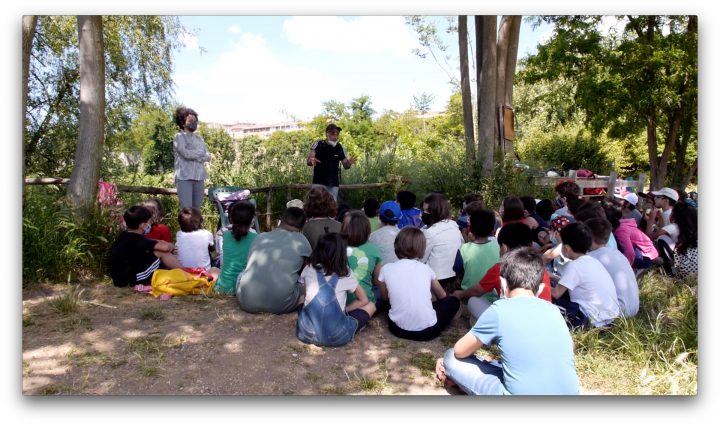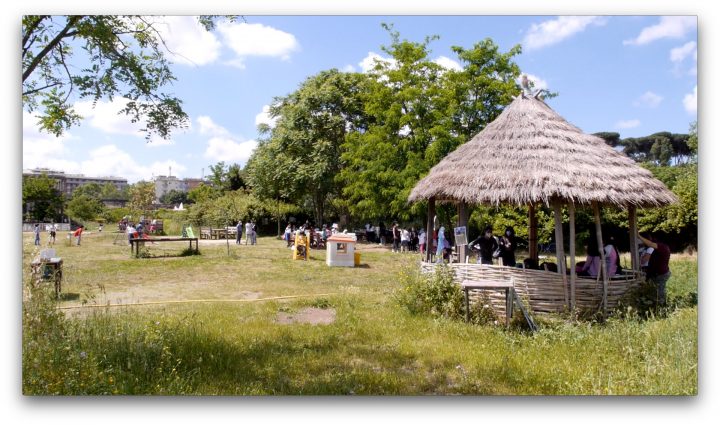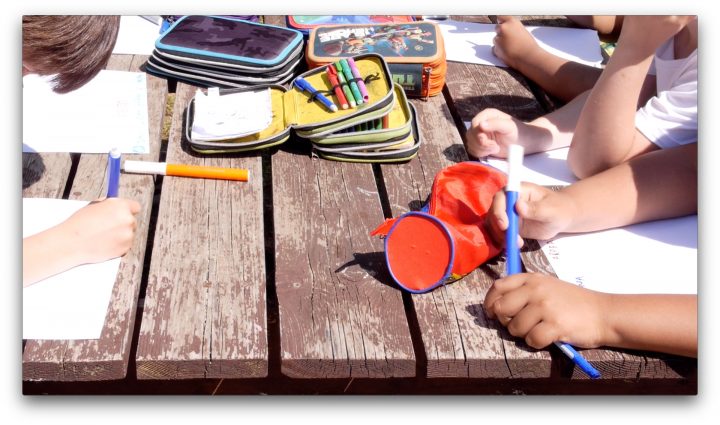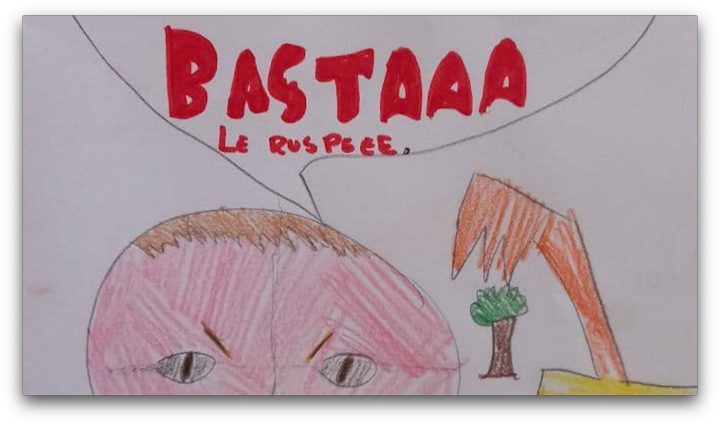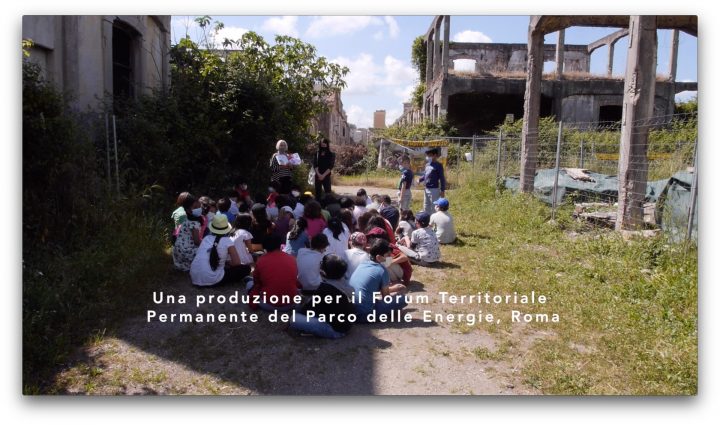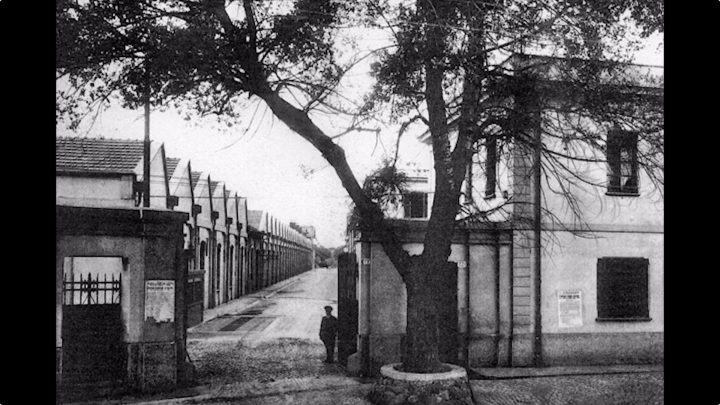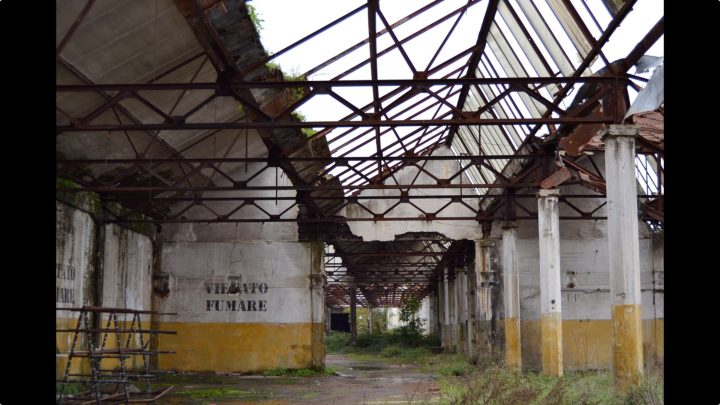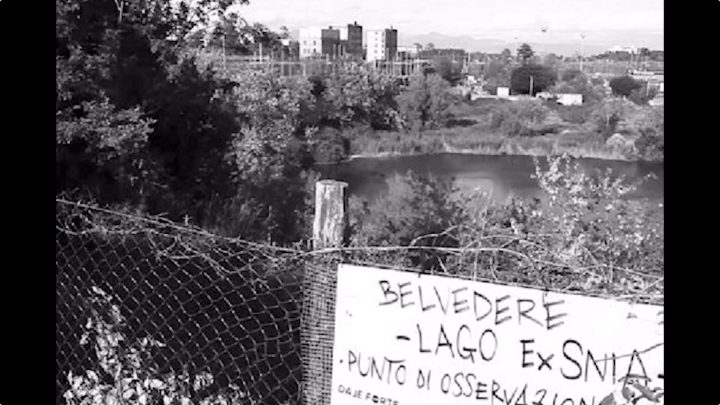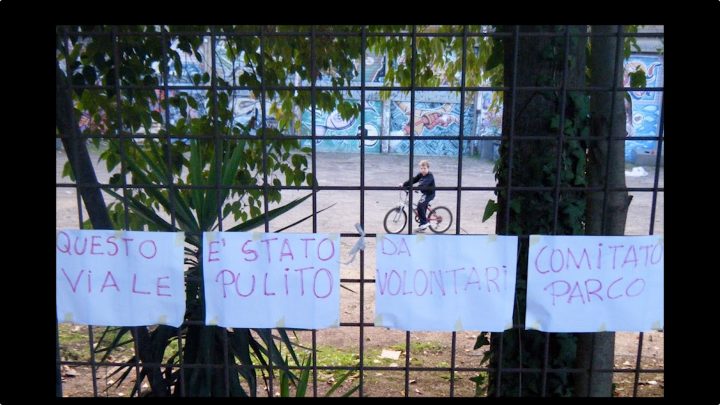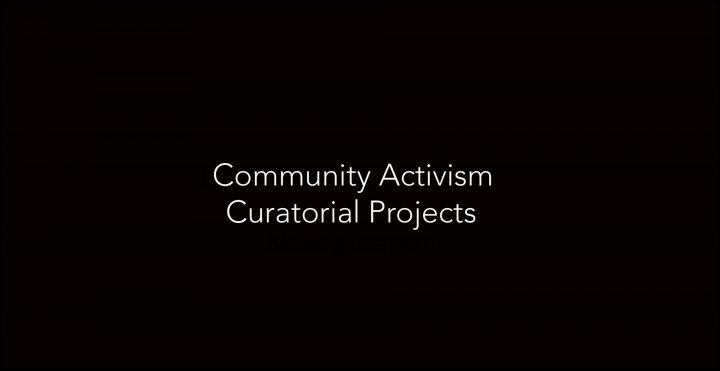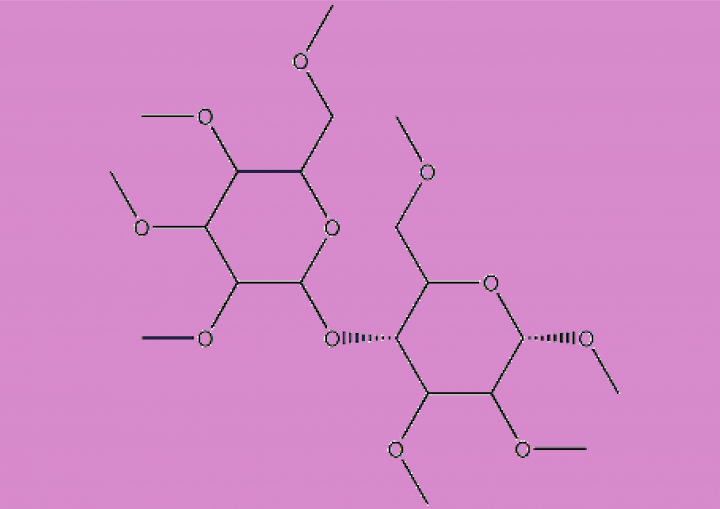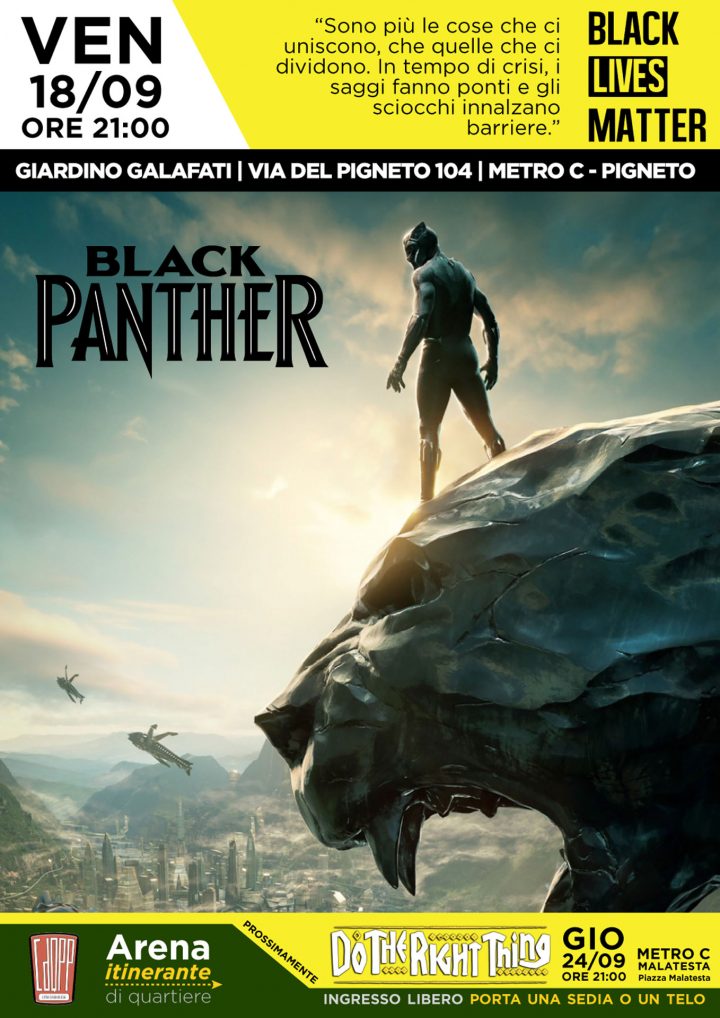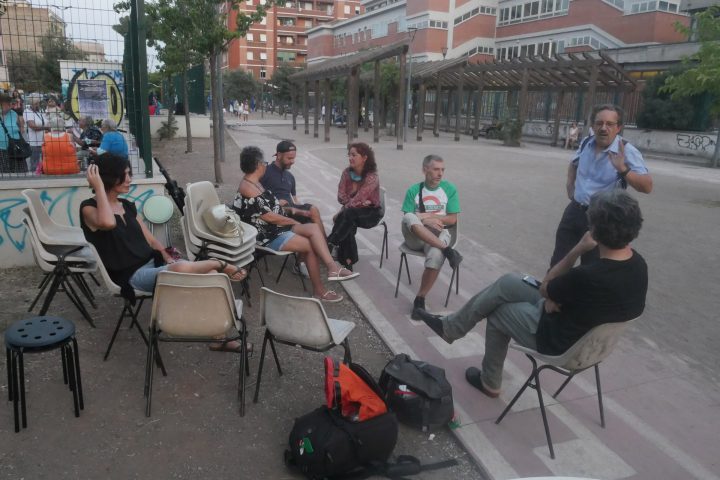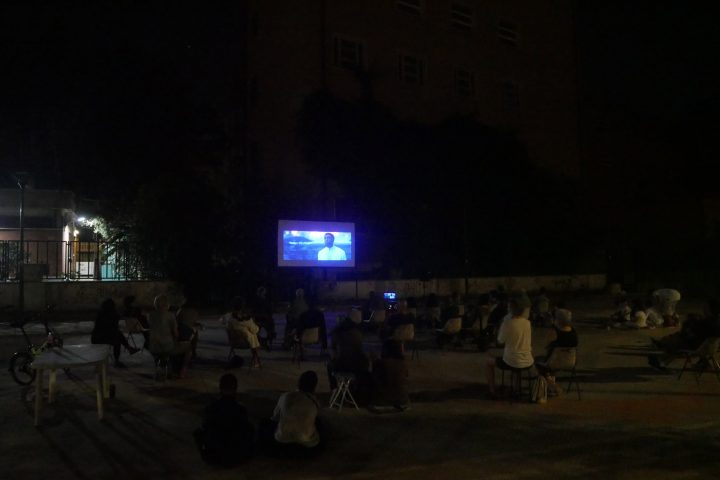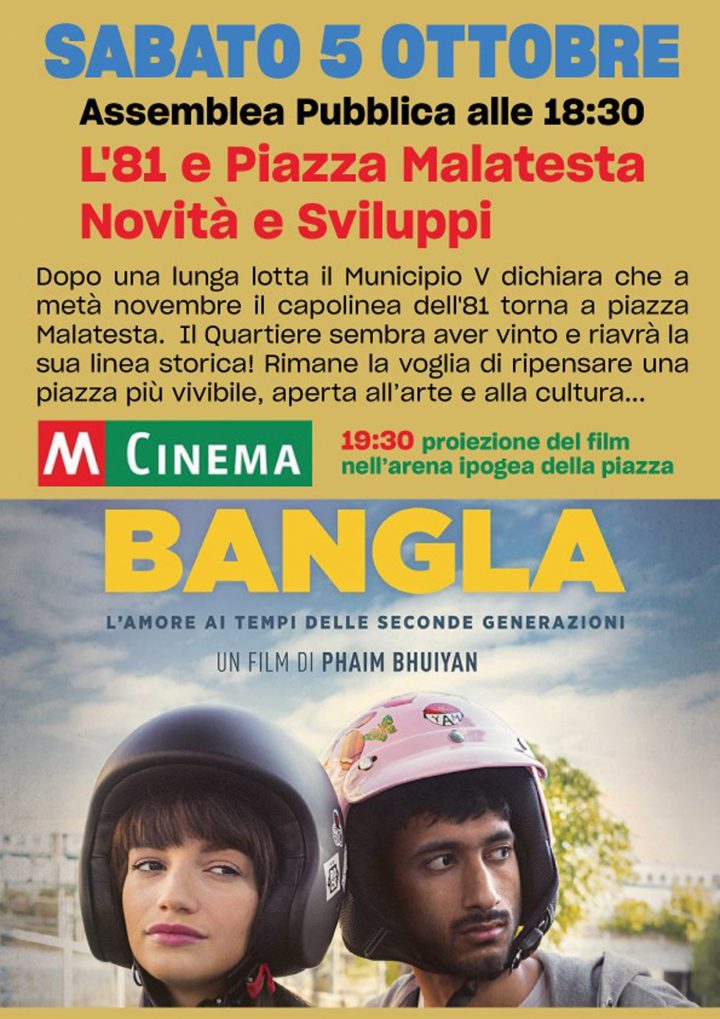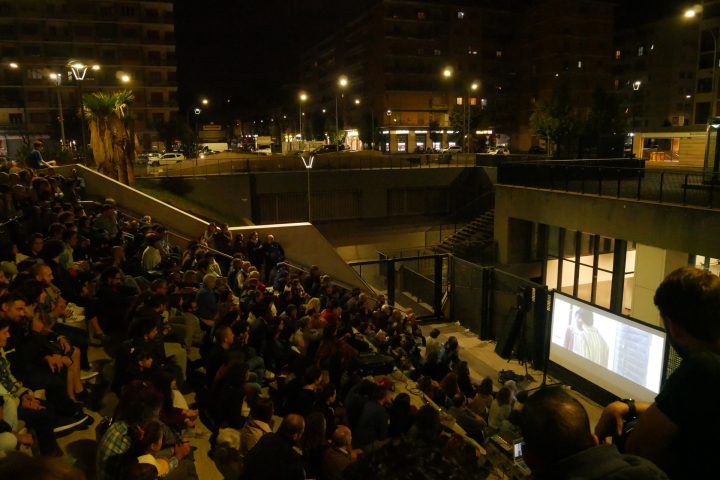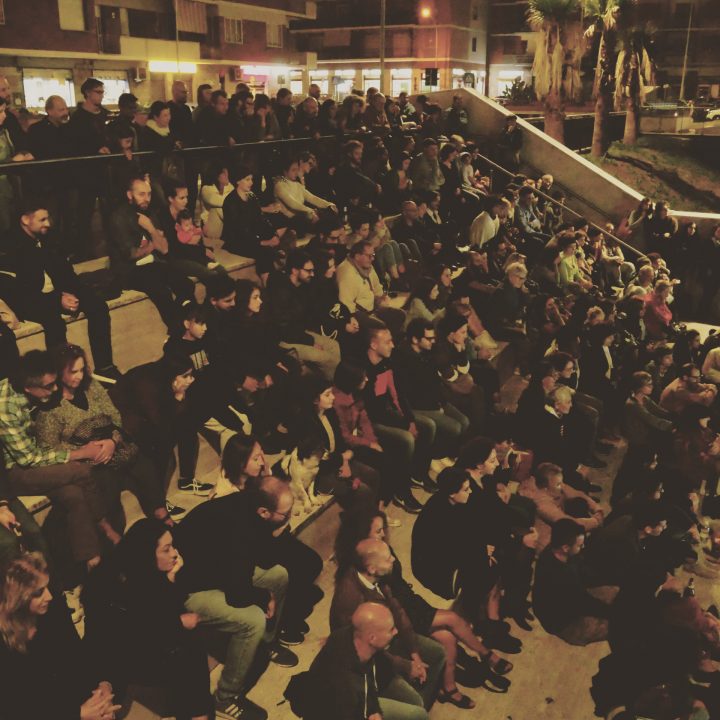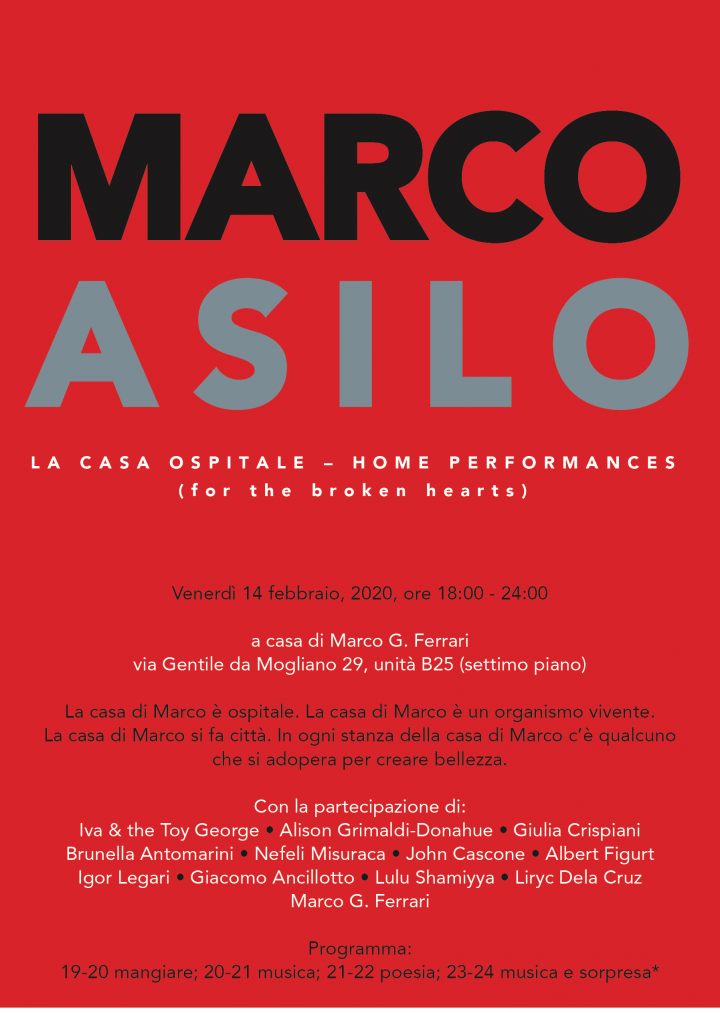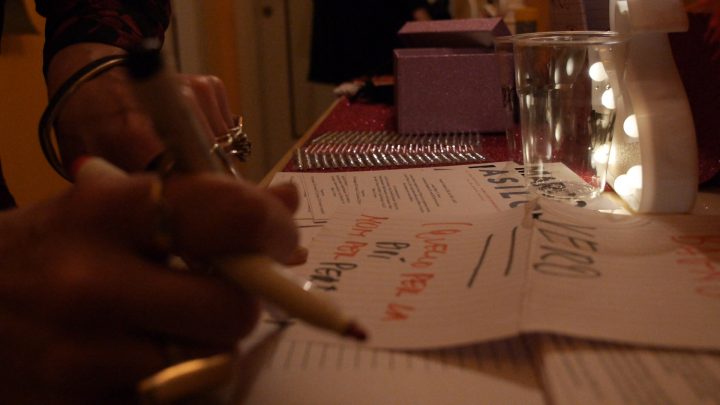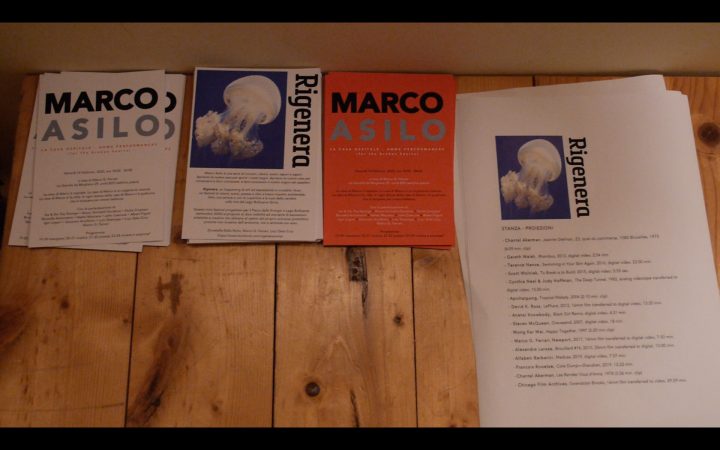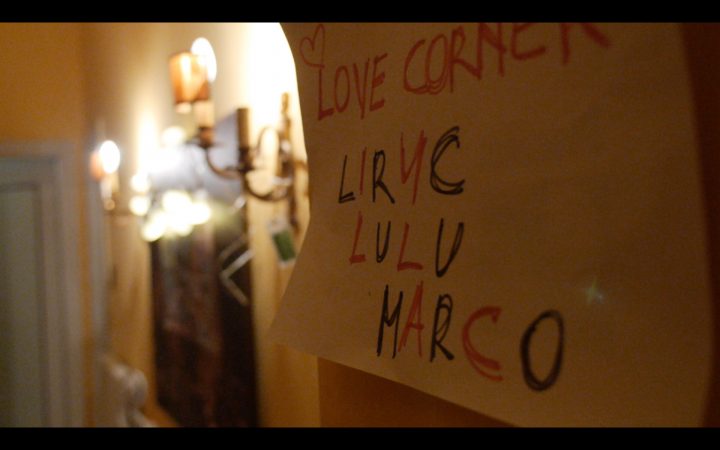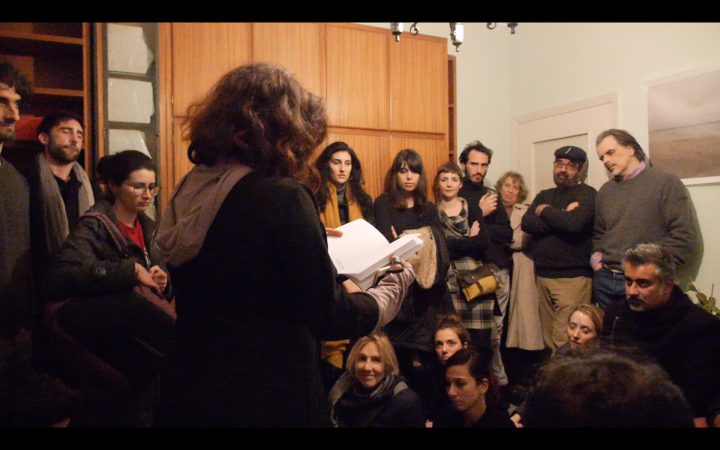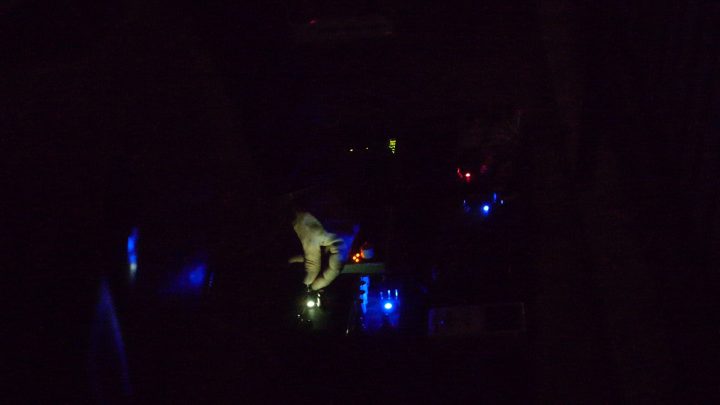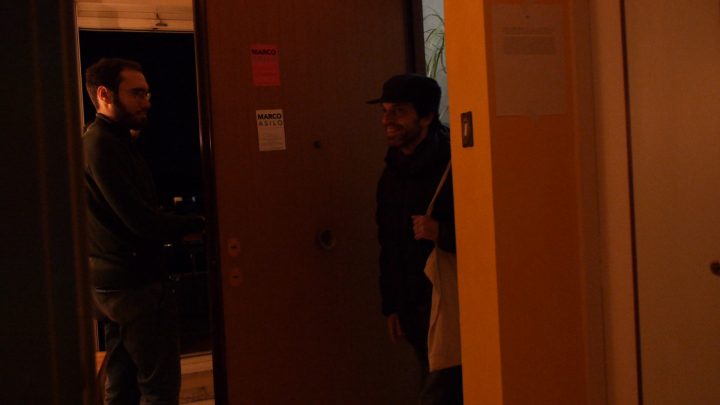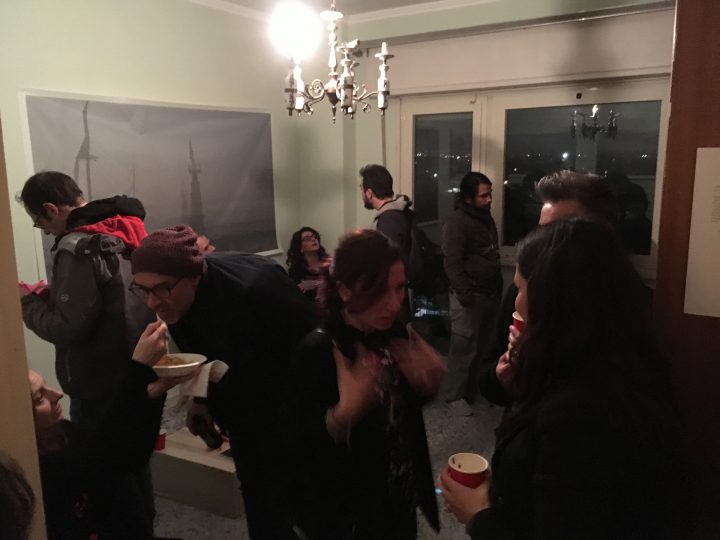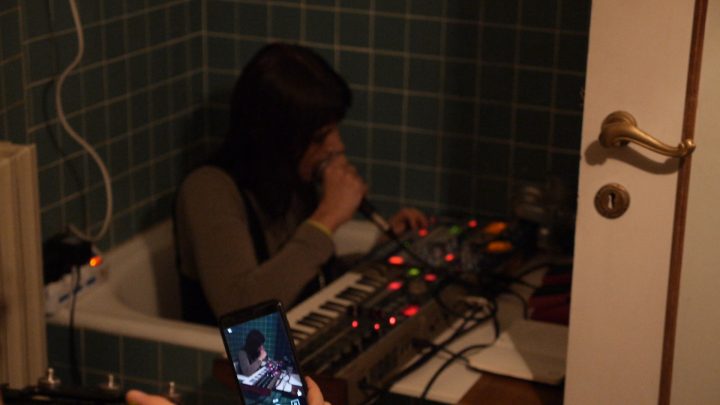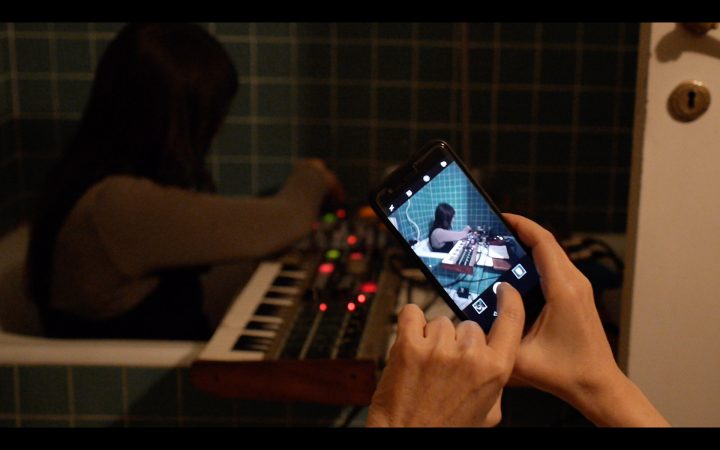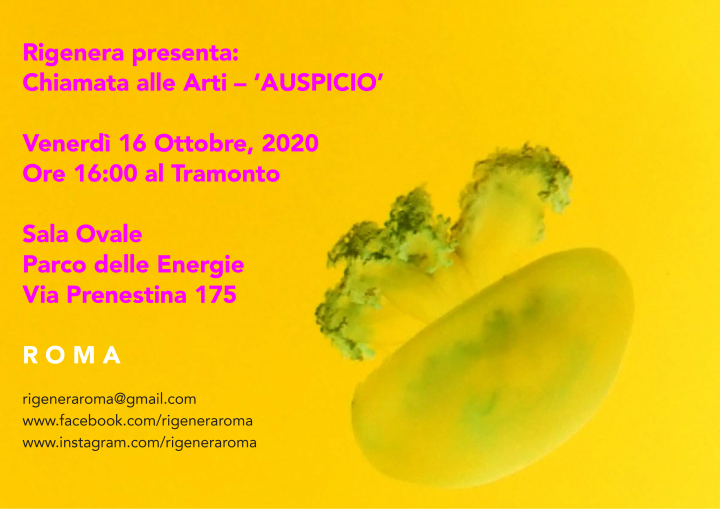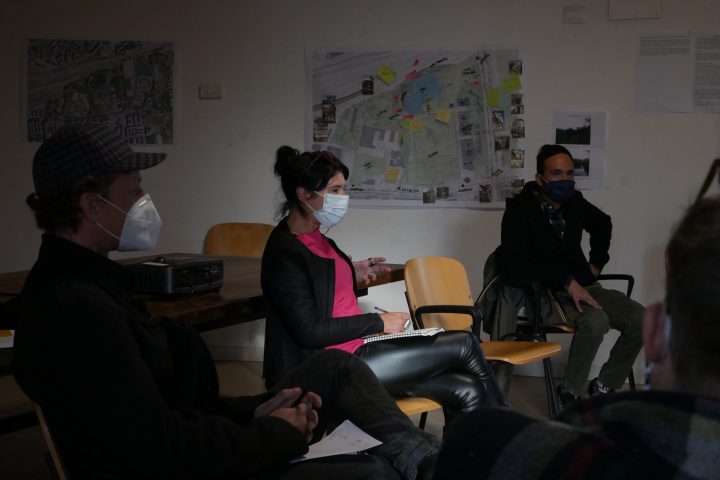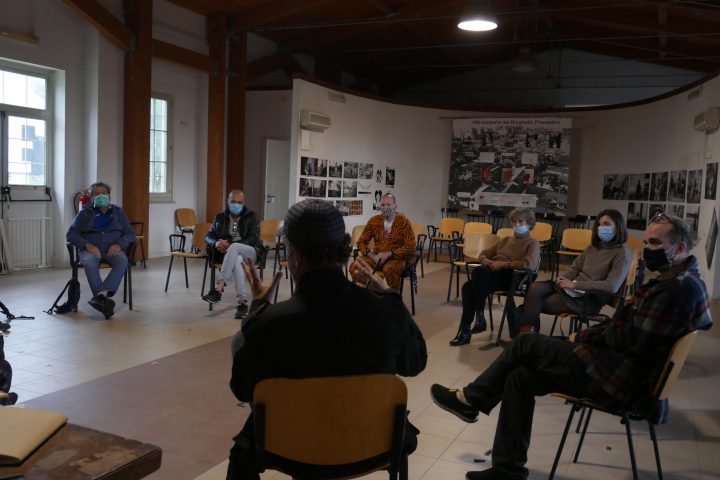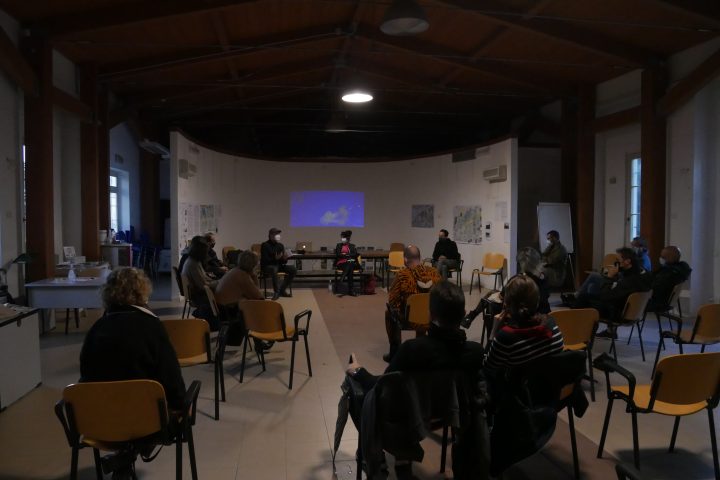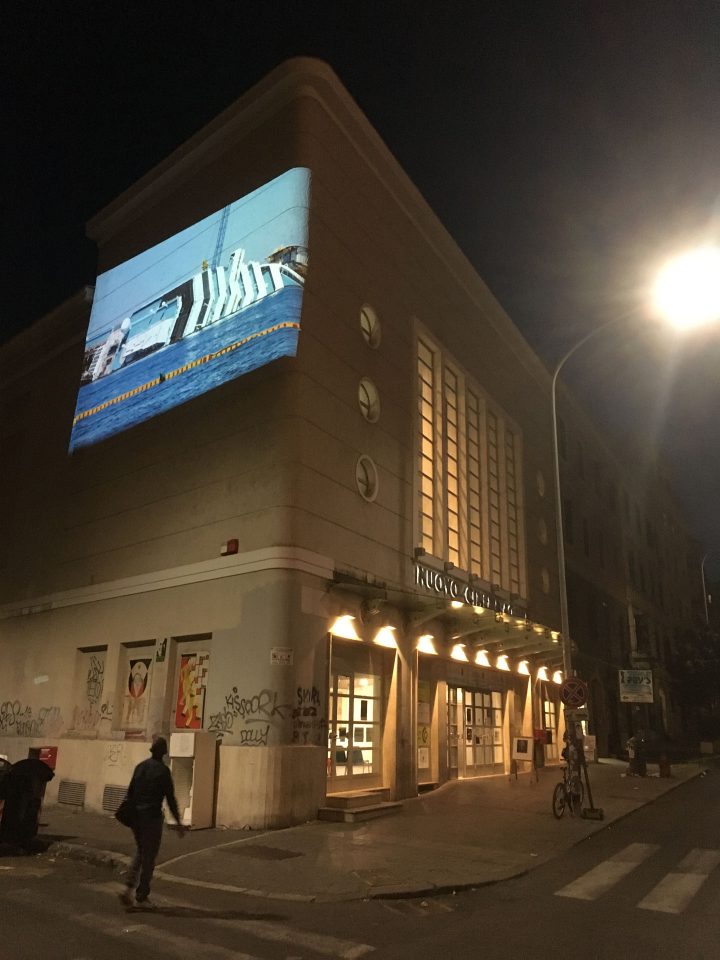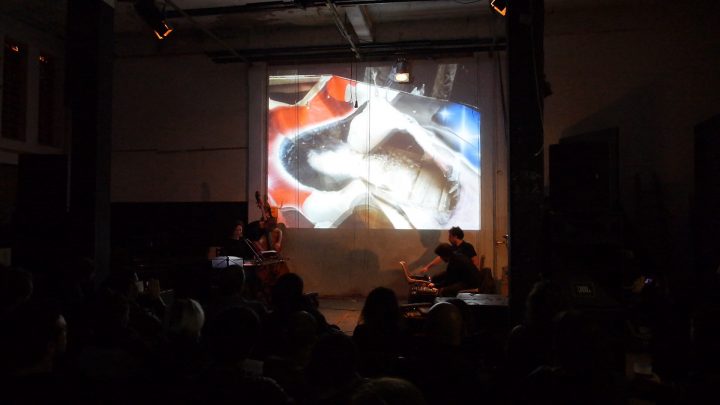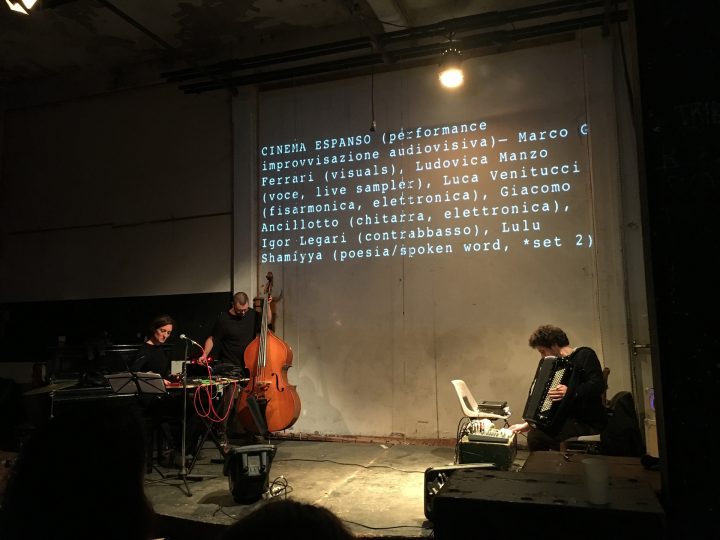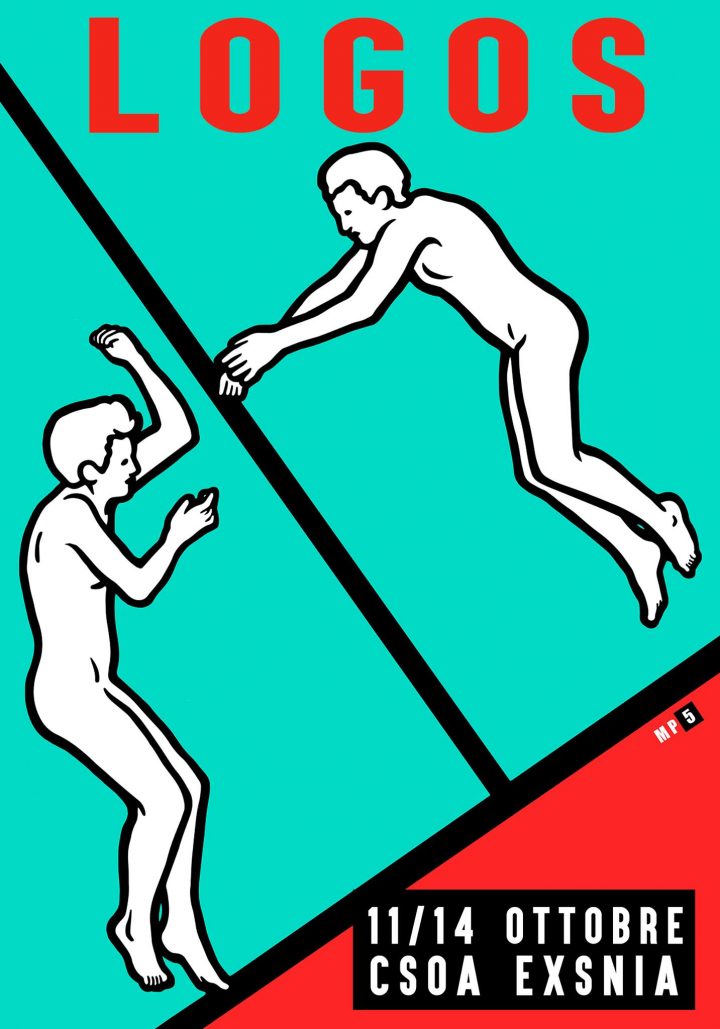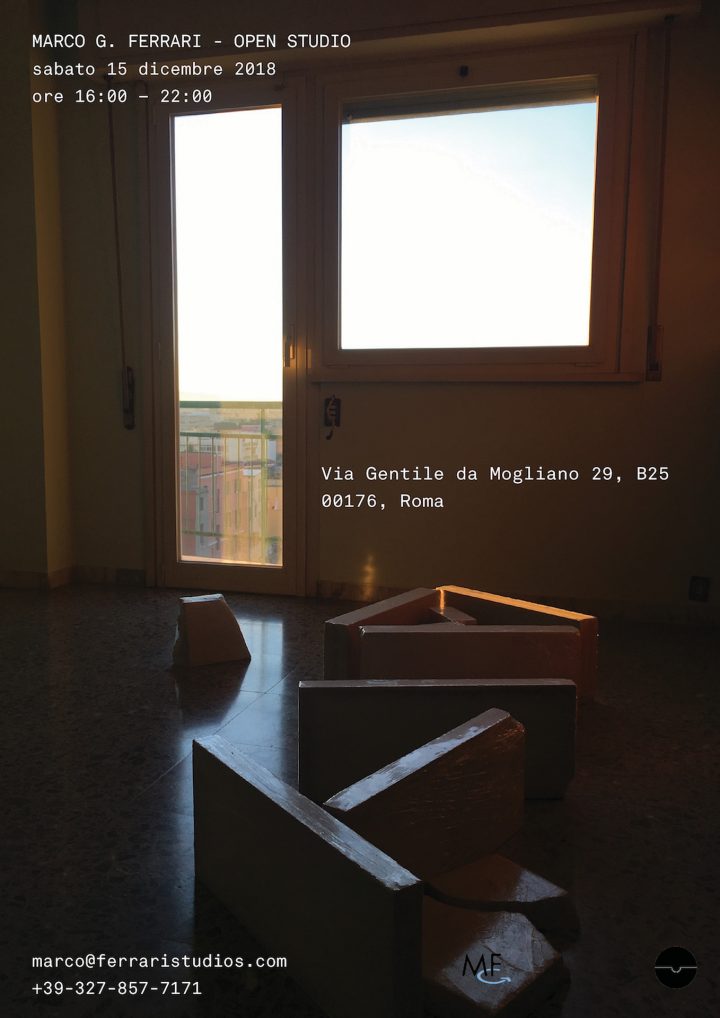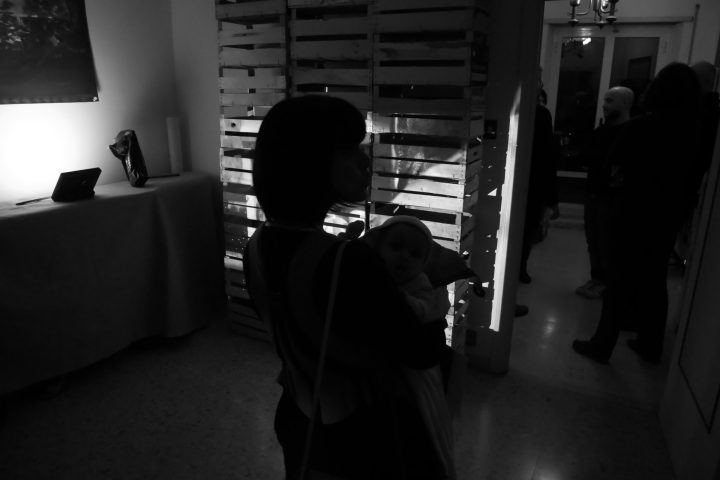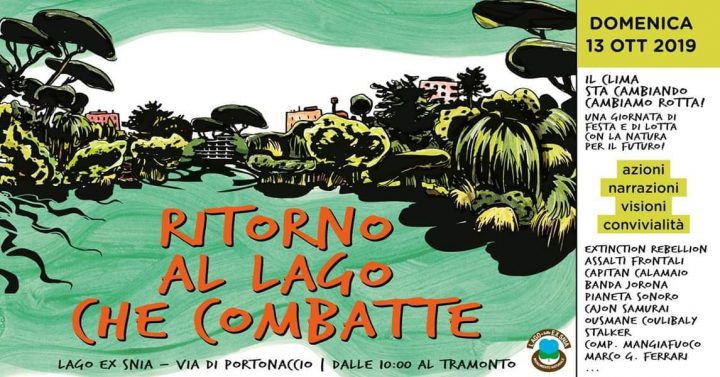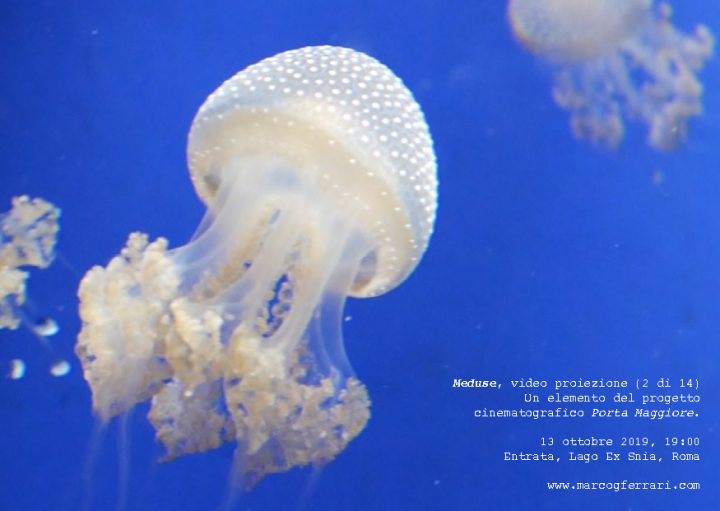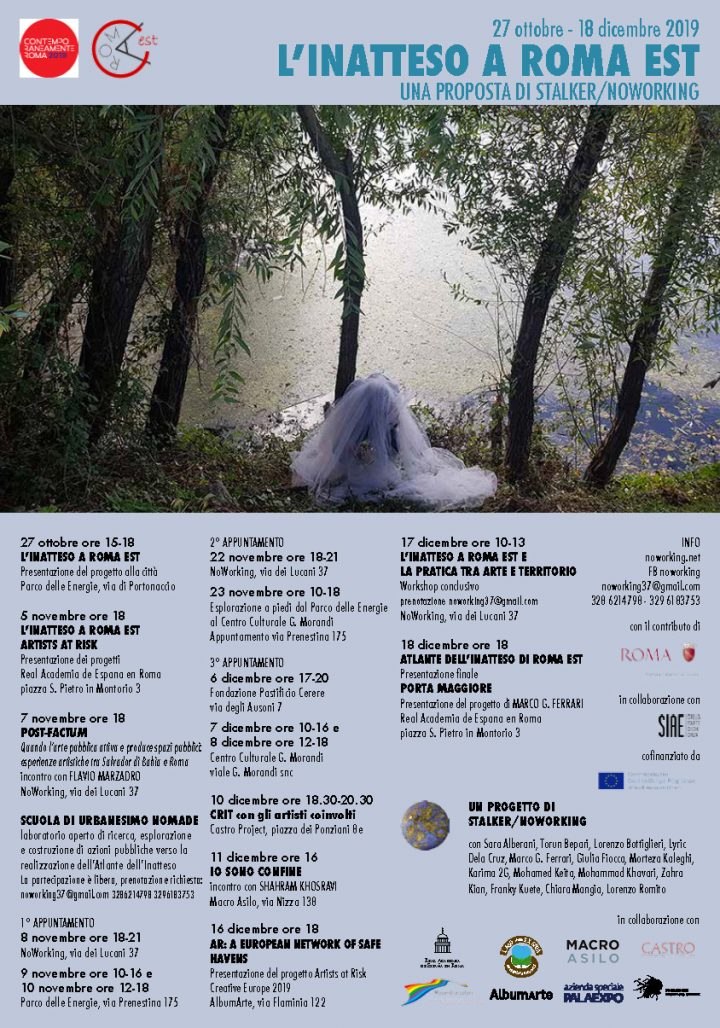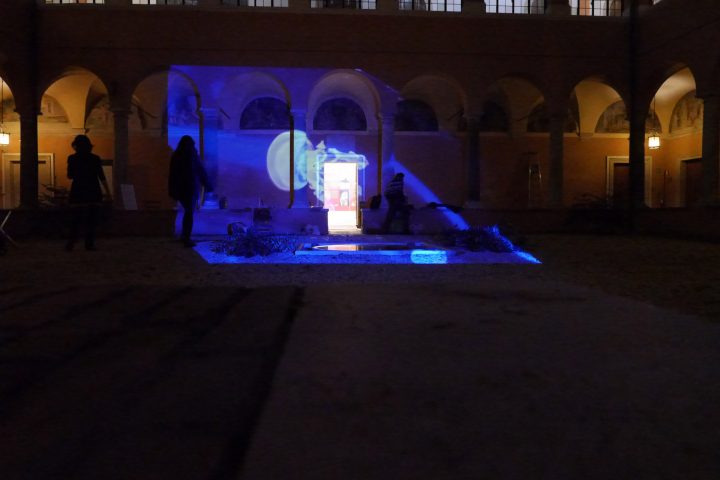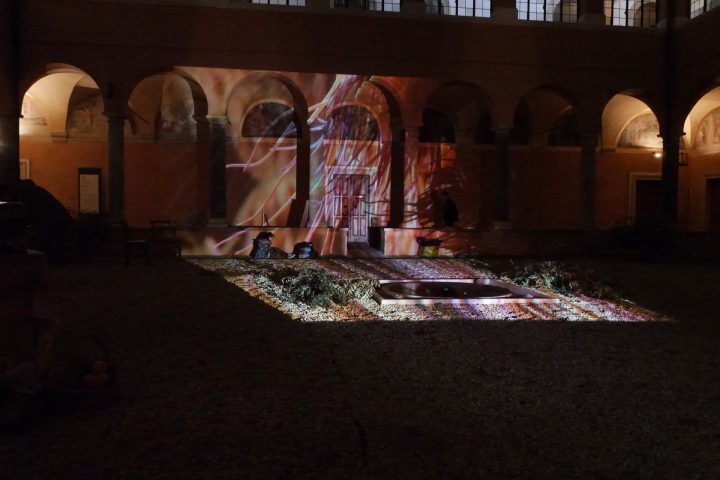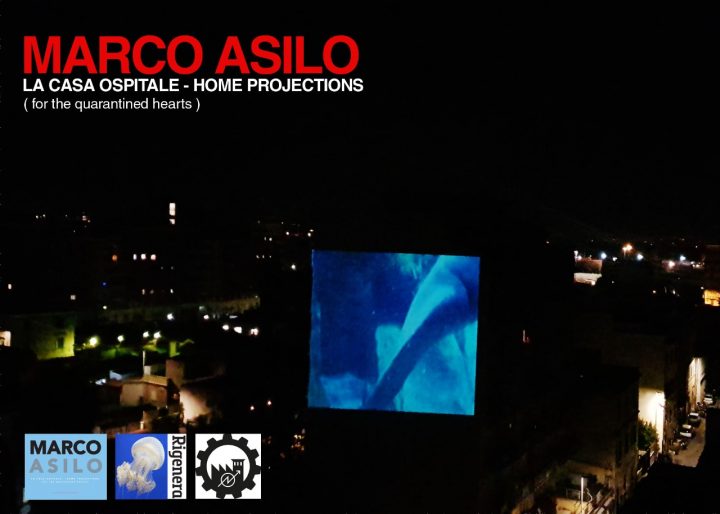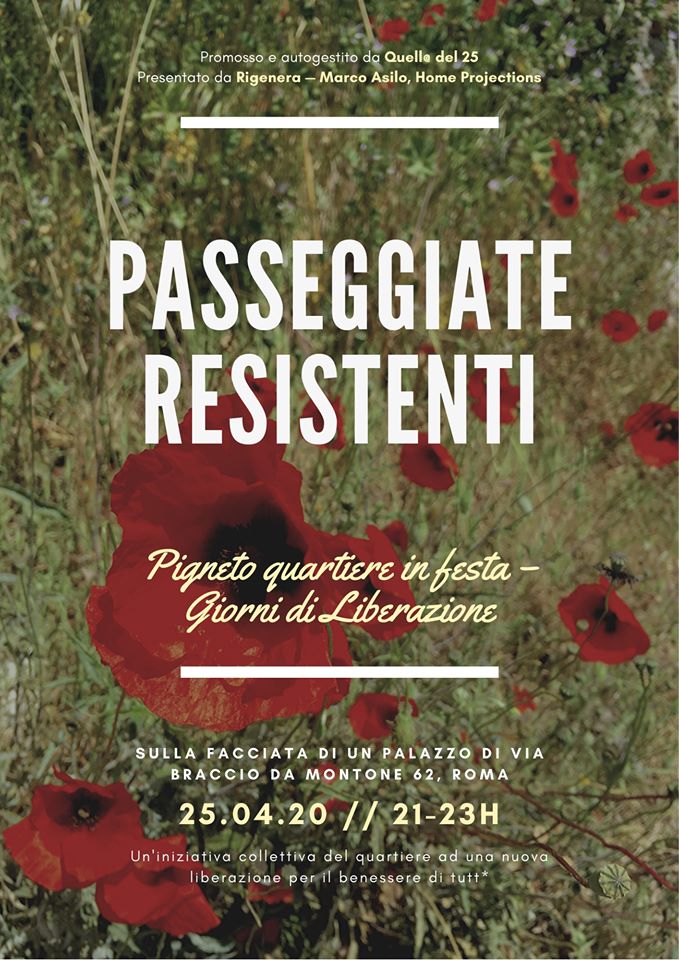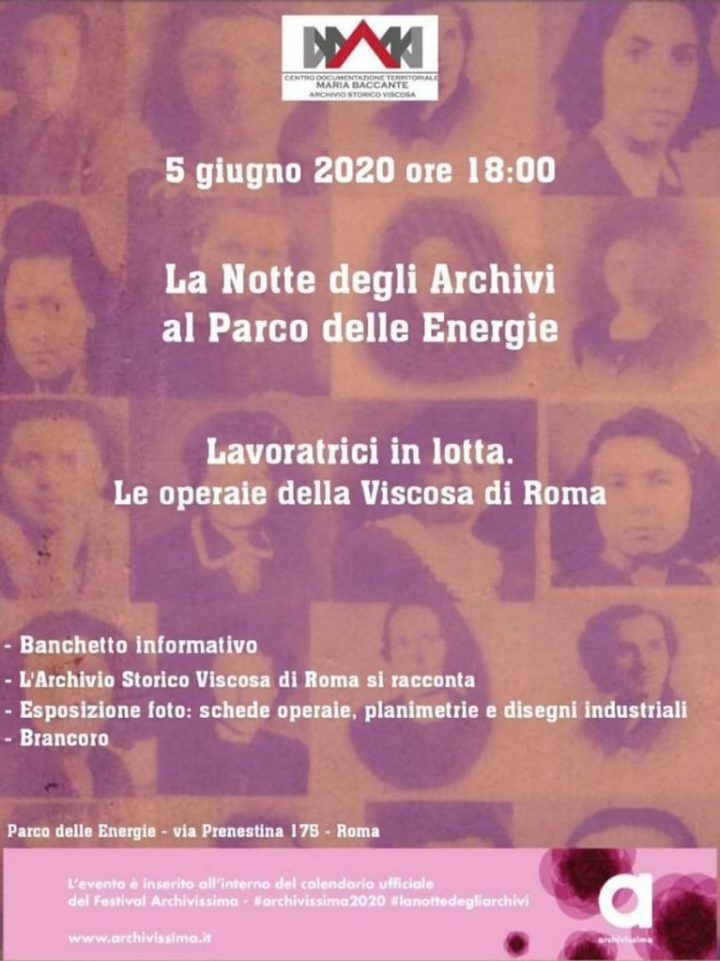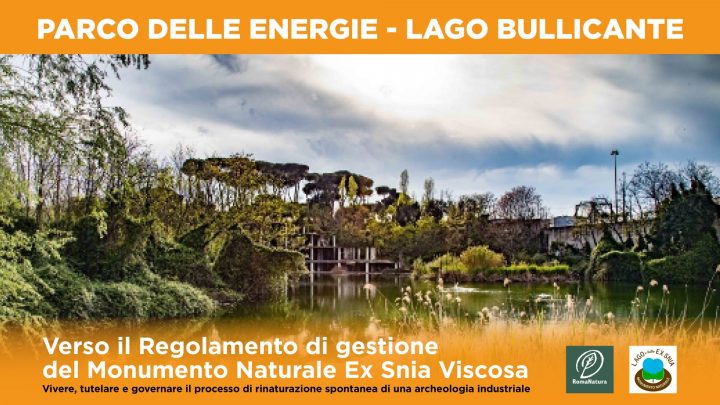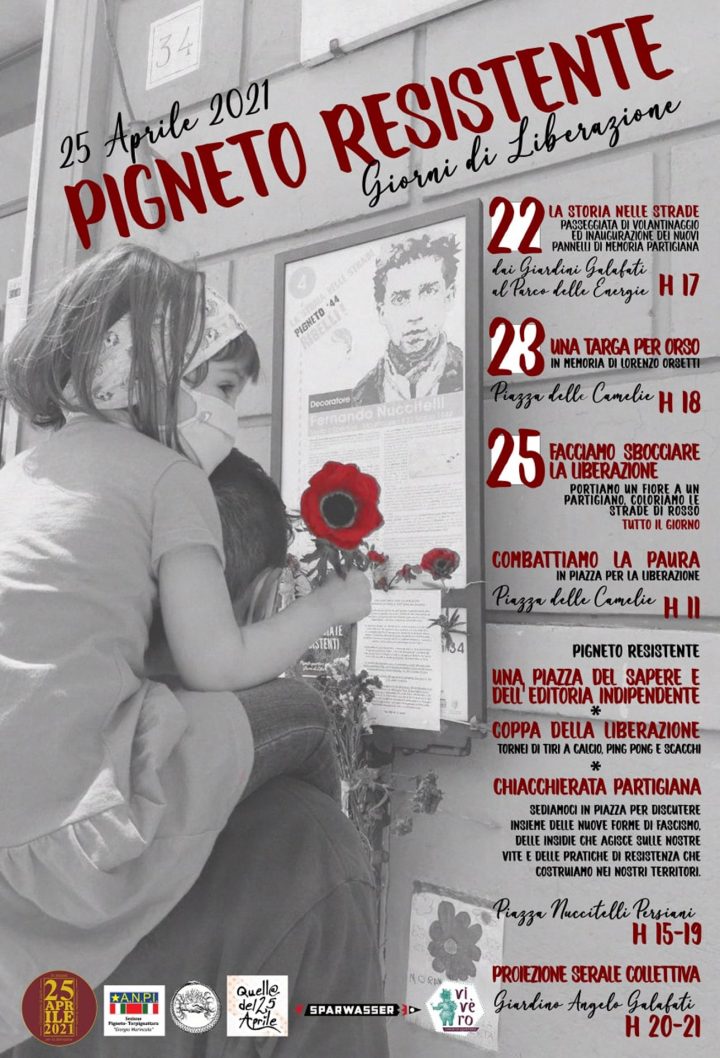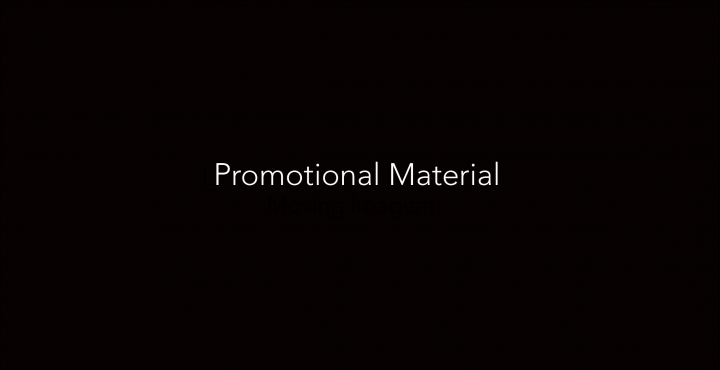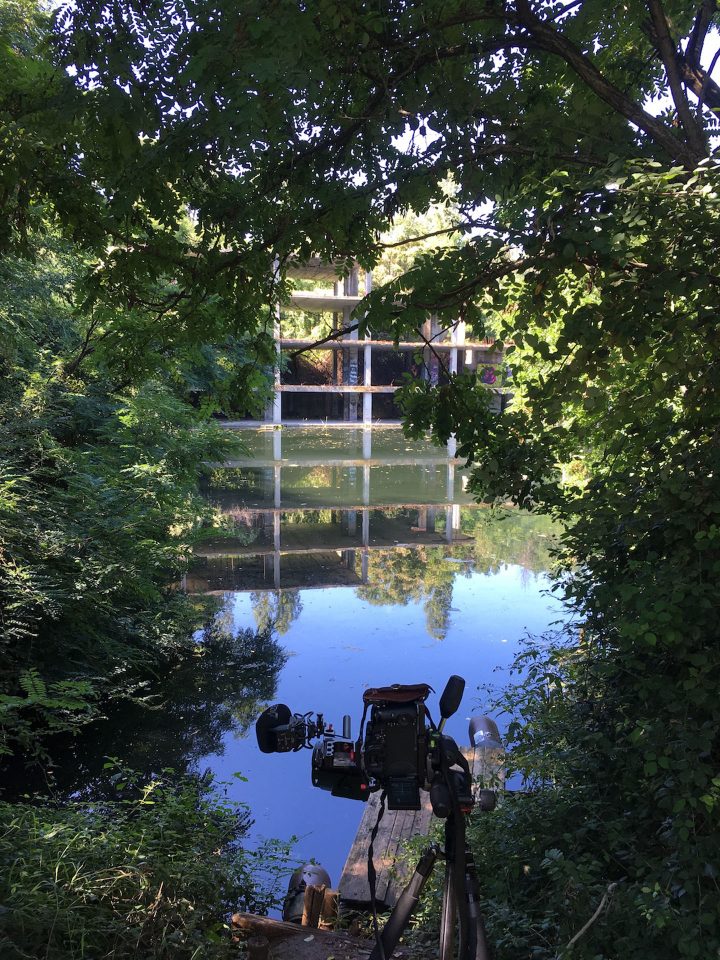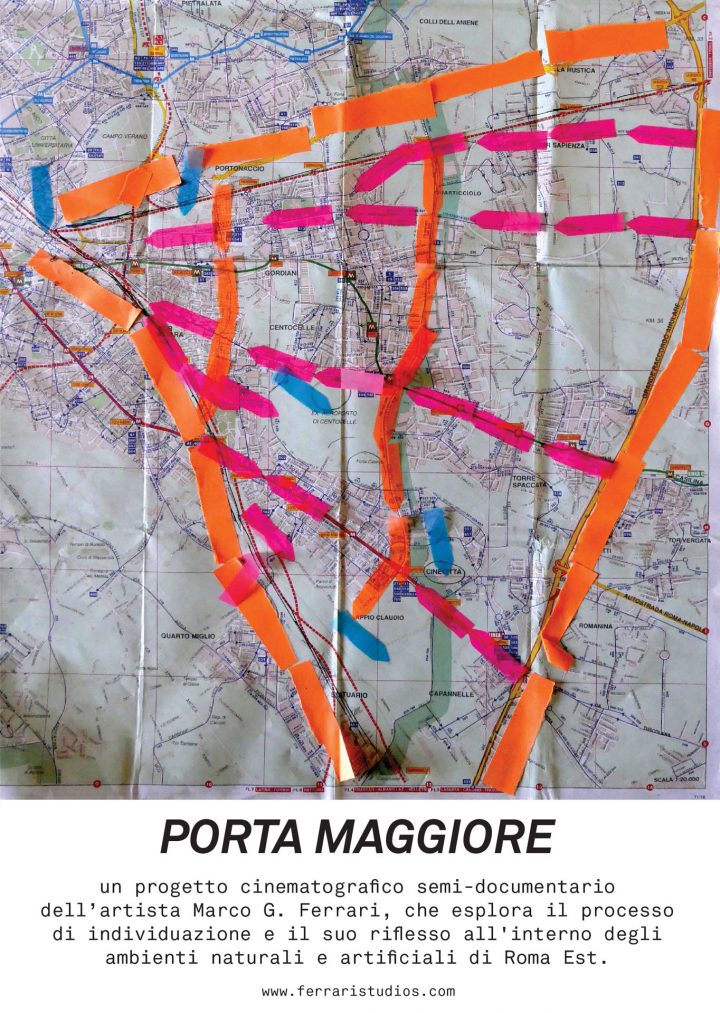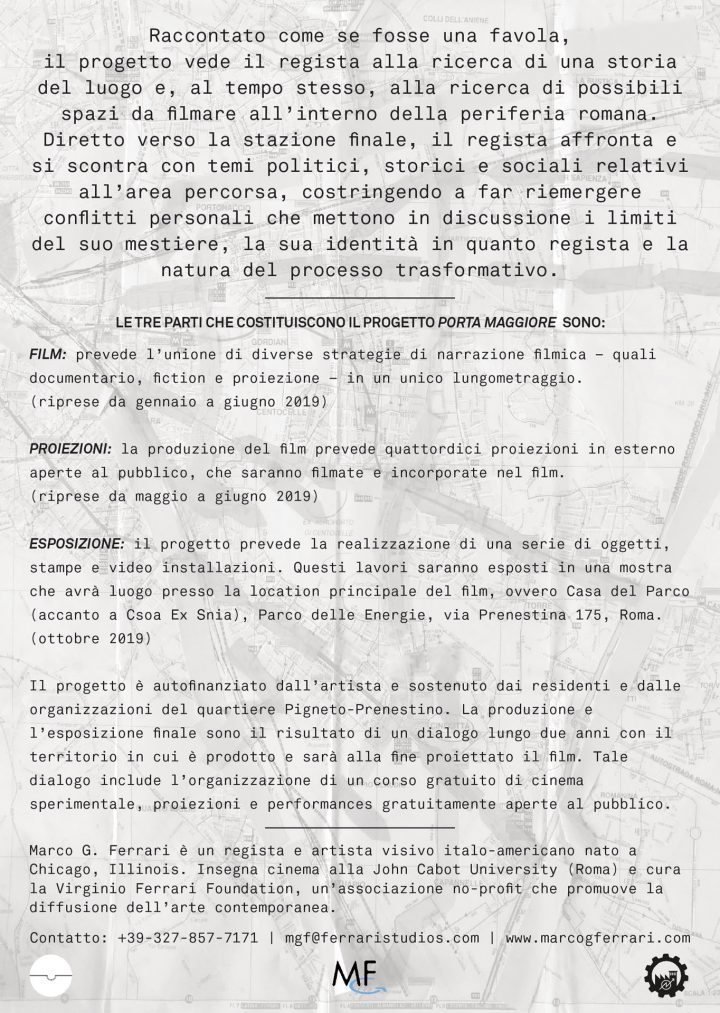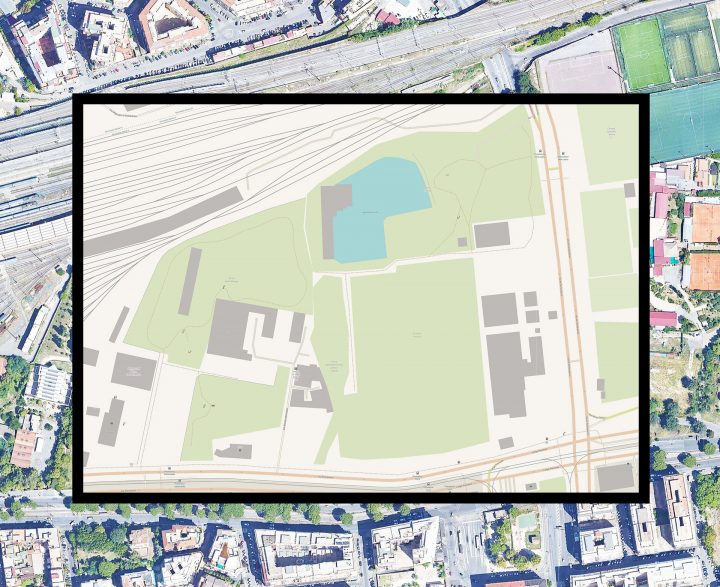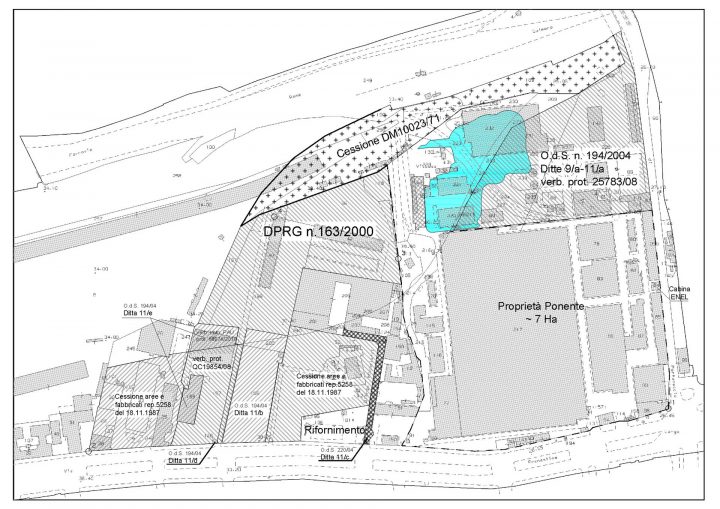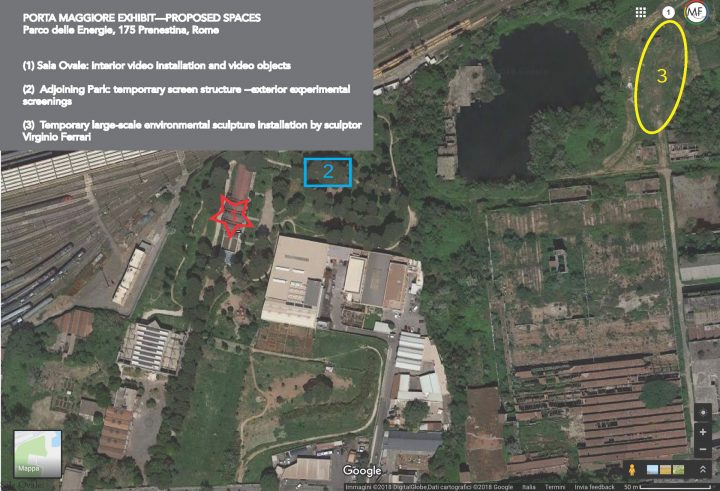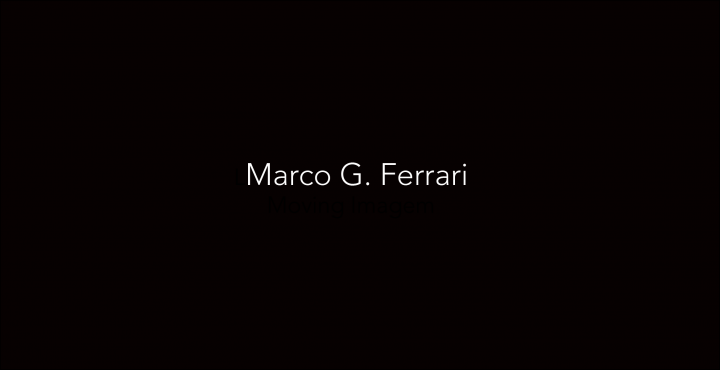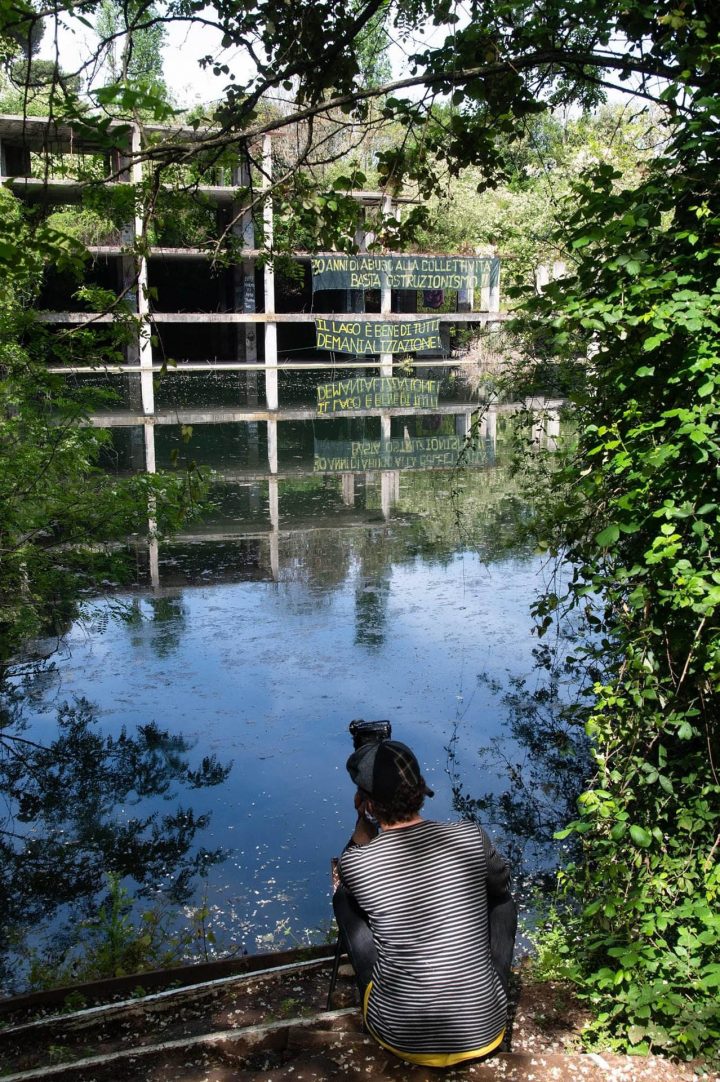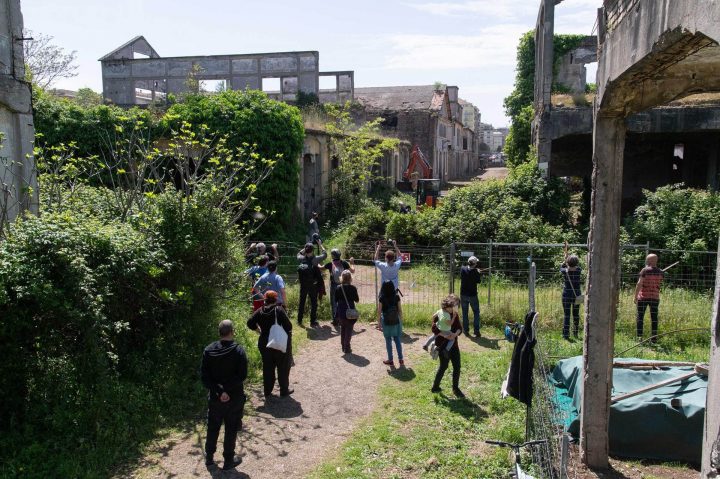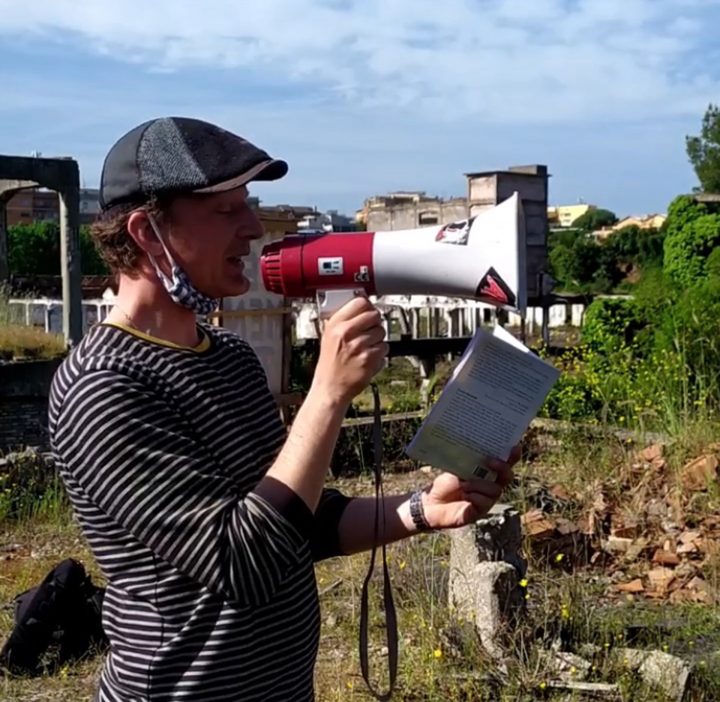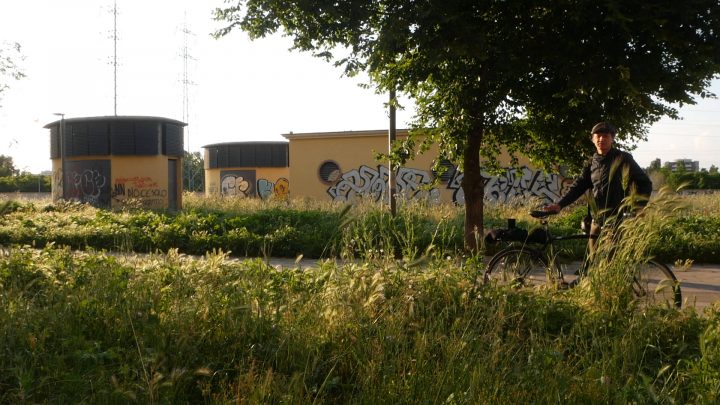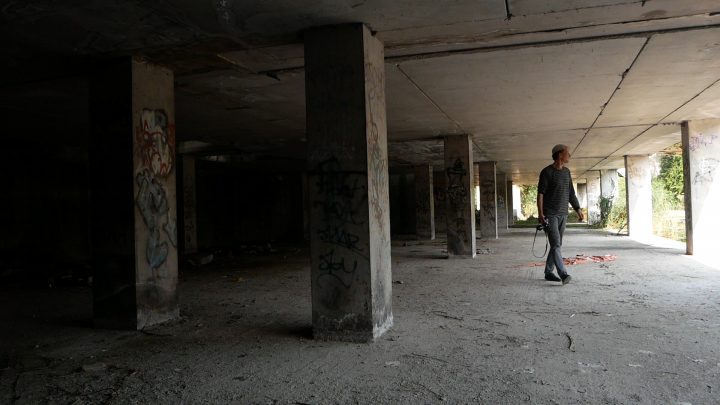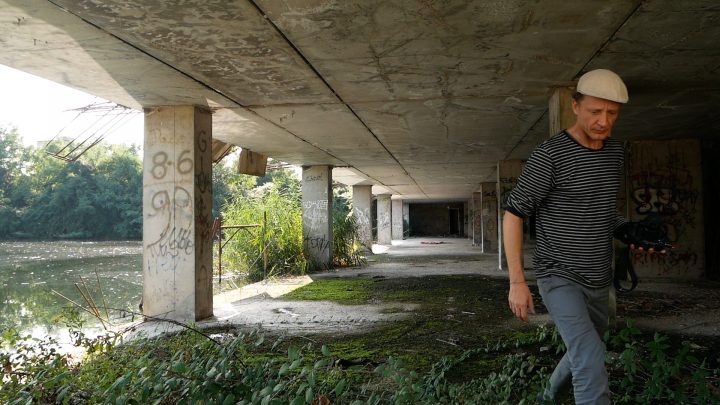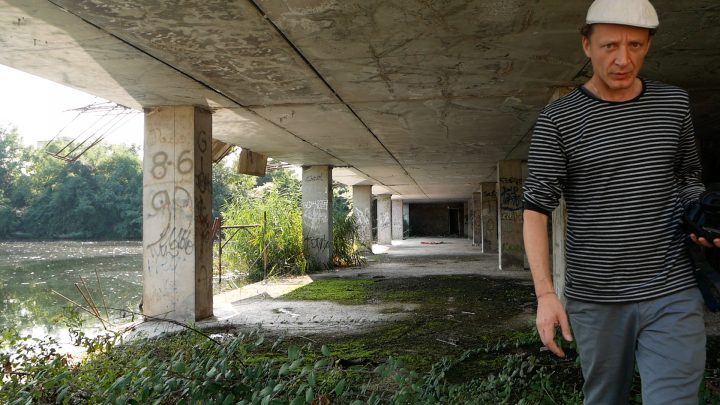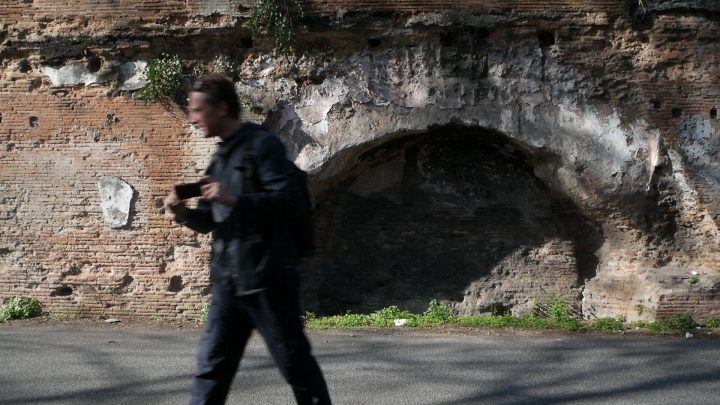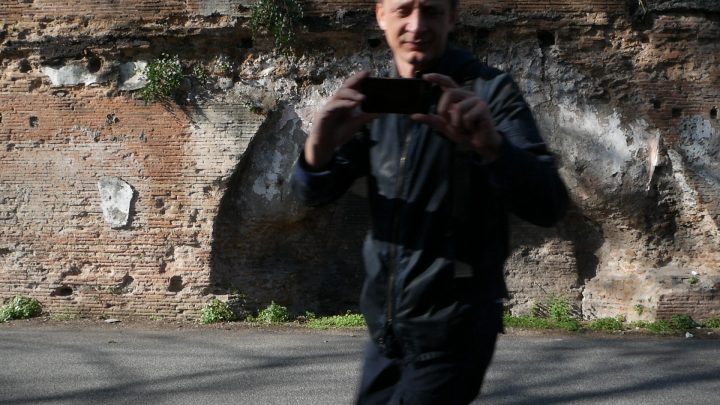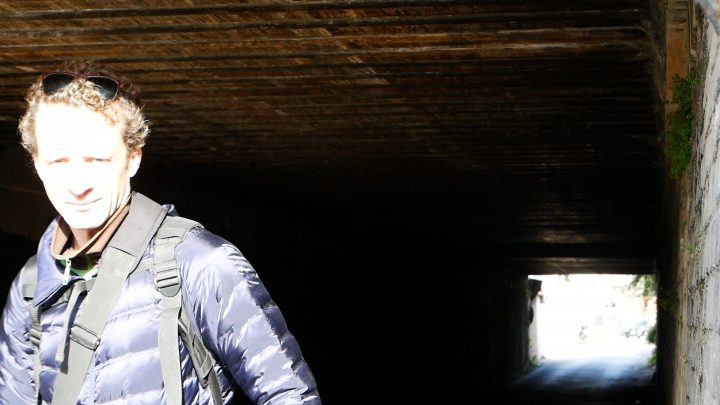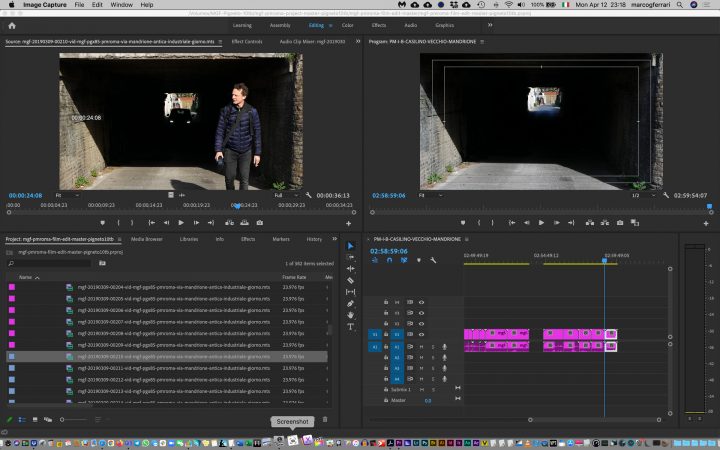(per la traduzione italiana clicca qui)
INTRODUCTION
The city of Rome has the privilege of being able to share over two thousand years of history with the public, yet today faces complex challenges of building on such a past as it struggles in resolving social, political and environmental conflicts that encompass the city. The relationship between built and natural environments within the city can be seen as stages to view these tensions, where situations between the individual and collective, resistance and acceptance, and development and neglect confront themselves often revealing a sense of alienation from each other and from nature. And the further from the city center one moves the more these tensions are heightened. Yet within the peripheries there are markers of change that go against this cycle of division.
Porta Maggiore is a five-part interdisciplinary art project, generated by the production of a film that explores the relationship between the built and natural environments of the eastern periphery of the Roman suburbs, known as Roma Est. The work is informed by a series of interrelated enquiries including an attempt to link the spectacle of filmmaking to the process of individuation; a search for liminal spaces of the periphery and the sense of alienation behind them; to question the forms of resistance and acceptance within the process of change; and the desire to find unity between the individual and collective in a supposed ‘post-fascist’ culture.
The five parts to the project are: Film Course, Film, Nocturnal Projections, Community Action, and Solo Exhibit.
– Film Course: I taught a free experimental film class at the Ex Snia social center entitled Self and Otherness. The course brought together over 20 interested filmmakers from across Rome of various levels of production experience and age groups (March-May 2018). John Cabot University student internships have also taken place throughout the entire project covering aspects of production and curation.
- L’io e L’alterità: Corso di Cinema, 2018. https://marcogferrari.com/project/lio-e-lalterita-corso-di-cinema/
– Film: The story of a film director as he travels through the Roman periphery in search of a story, joining documentary, fiction and projection modes of filmmaking into one feature-length film. (filming: March 2017-June 2023, final edit slated for 2024).
– Nocturnal Projections: Within the production of the film there are 14 public projections, which will be recorded and treated as scenes in the film. (October 2018 to April 2021).
- n. 1. Le api del lago Bullicante Ex Snia (per una scena di Porta Maggiore): Proiezione notturna estranea n. 1; Palazzina della Csoa Ex Snia, 2018. https://marcogferrari.com/work/le-api-del-lago-bullicante-ex-snia-per-una-scena-di-porta-maggiore-proiezione-notturna-estranea-n-1-palazzina-della-csoa-ex-snia/
- n. 2. Meduse (per una scena di Porta Maggiore): Proiezione notturna estranea n. 2; Nella prateria del Lago Bullicante Ex Snia, 2019. https://marcogferrari.com/work/meduse-per-una-scena-di-porta-maggiore-proiezione-notturna-estranea-n-2-nella-prateria-del-lago-bullicante-ex-snia/
- n. 3. Delfini (per una scena di Porta Maggiore): Proiezione notturna estranea n. 3; Sull’Acquedotto Felice, via del Mandrione, 2019. https://marcogferrari.com/work/delfini-per-una-scena-di-porta-maggiore-proiezione-notturna-estranea-n-3-sullacquedotto-felice-via-del-mandrione/
- n. 4. Stella, polipo, anemone and pagliaccio (per una scena di Porta Maggiore): Proiezione notturna estranea n. 4; Nella ‘stecca’ centrale del complesso di case popolari IACP (ora ATER) di Viale Giorgio Morandi, Tor Sapienza, 2019. https://marcogferrari.com/work/stella-polipo-anemone-and-pagliaccio-per-una-scena-di-porta-maggiore-proiezione-notturna-estranea-n-4-nella-stecca-centrale-del-complesso-di-case-popolari-iacp-ora-ater-di-viale-gi/
- n. 5. Sirenii (per una scena di Porta Maggiore): Proiezione notturna estranea n. 5; lato del palazzo di via Braccio da Montone 62, Roma, con musicisti Igor Legari (contrabbasso) e Giacomo Ancillotto (chitarra elettrica), 2020. https://marcogferrari.com/work/sirenii-per-una-scena-di-porta-maggiore-proiezione-notturna-estranea-n-5-lato-del-palazzo-di-via-braccio-da-montone-62-roma-featuring-musicians-igor-legari-acoustic-bass-and-giacomo-ancillott/
- n. 6. Le operaie della Viscosa di Roma—omaggio a un Monumento Naturale (per una scena di Porta Maggiore): Proiezione notturna estranea n. 6; Sulla struttura di cemento (mostro) nel Lago Bullicante Ex Snia, 2020. https://marcogferrari.com/work/le-operaie-della-viscosa-di-roma-omaggio-a-un-monumento-naturale-per-una-scena-di-porta-maggiore-proiezione-notturna-estranea-n-6-sulla-struttura-di-cemento-mostro-nel-lago-bullicante-e/
- n. 7-13. Marco Asilo: La Casa Ospitale – Home Projections (for the quarantined hearts), 2020. https://marcogferrari.com/project/marco-asilo-la-casa-ospitale-home-projections-for-the-quarantined-hearts/
- n.14. Proiezione Collettiva, 2021. https://marcogferrari.com/work/roiezione-collettiva-pigneto-resistente-quartiere-in-festa-giorni-di-liberazione/
– Community Activism: The project is self-funded and supported by the assistance of neighborhood residents and organizations of Pigneto-Prenestino. Its production and eventual exhibition is inspired by a four yearlong dialog with the area in which it is being produced and will be eventually shown. This dialog includes helping organize community film screenings and events, the production of video works and the participation in community meetings and protests (February 2017-June 2023).
Cinematographic Works:
- Vogliamo Il Lago e L’Ex Snia Monumento Naturale! – Global Climate Strike For Future, 2019. https://marcogferrari.com/work/vogliamo-il-lago-e-lex-snia-monumento-naturale-global-climate-strike-for-future/
- Riflessioni – Ritorno al lago che combatte, 2019. https://marcogferrari.com/work/riflessioni-ritorno-al-lago-che-combatte/
- Il Lago che Combatte va sotto la Regione Lazio, 2019. https://marcogferrari.com/work/il-lago-che-combatte-va-sotto-la-regione-lazio/
- Misurazione Lago Bullicante ExSnia, 2019. https://marcogferrari.com/work/misurazione-lago-bullicante-exsnia/
- Lavoratrici in lotta: Le operaie della Viscosa di Roma, 2020. https://marcogferrari.com/work/lavoratrici-in-lotta-le-operaie-della-viscosa-di-roma/
- Centro di Documentazione Territoriale Maria Baccante: Un’esperienza collettiva di recupero e conservazione, 2020. https://marcogferrari.com/work/centro-di-documentazione-territoriale-maria-baccante-unesperienza-collettiva-di-recupero-e-conservazione/
- Fermiamo Le Ruspe: Scuola Pisacane al Lago Bullicante Ex Snia; Il Maggio dei Libri 2021, 2021. https://marcogferrari.com/work/fermiamo-le-ruspe-scuola-pisacane-al-lago-bullicante-ex-snia-il-maggio-dei-libri-2021/
Curatorial Projects:
- CineForum ExSnia, 2019—(in progress). https://marcogferrari.com/project/cineforum-exsnia/
- Marco Asilo: La Casa Ospitale – Home Performances (for the broken hearts), 2020. https://marcogferrari.com/project/marco-asilo-la-casa-ospitale-home-performances-for-the-broken-hearts/
- Marco Asilo: La Casa Ospitale – Home Projections (for the quarantined hearts), 2020. https://marcogferrari.com/project/marco-asilo-la-casa-ospitale-home-projections-for-the-quarantined-hearts/
- Chiamata alle Arti – ‘Auspicio’, 2020. https://marcogferrari.com/project/chiamata-alle-arti-auspicio/
- Verso il Regolamento di gestione del Monumento Naturale Ex Snia Viscosa: Vivere, tutelare e governare il processo di rinaturazione spontanea di una archeologia industriale, 2021. https://marcogferrari.com/project/verso-il-regolamento-di-gestione-del-monumento-naturale-ex-snia-viscosa-vivere-tutelare-e-governare-il-processo-di-rinaturazione-spontanea-di-una-archeologia-industriale/
– Solo Exhibition: From this one film, a series of objects, prints and a video installations will also be built. These works will be exhibited as a solo art show on view at the central location of the film in Roma Est––Casa del Parco, Parco delle Energie, an independently run community center associated with Ex Snia social center (June 2024).
Preliminary Exhibitions:
- L’alterità e il paesaggio: i film sperimentali di Marco G. Ferrari, 2017, solo screenings. https://marcogferrari.com/exhibition/lalterita-e-il-paesaggio-i-film-sperimentali-di-marco-g-ferrari/
- Logos – Festa della Parola 2017: Rivoluzione, group exhibit. https://marcogferrari.com/exhibition/logos-festa-della-parola-2017-rivoluzione/
- Logos – Festa della Parola 2018: Limite, group exhibit. https://marcogferrari.com/exhibition/logos-festa-della-parola-ed-2018/
- Marco G. Ferrari – Open Studio, 2018, solo exhibit. https://marcogferrari.com/exhibition/marco-g-ferrari-open-studio/
- Ritorno al lago che combatte, 2019, group festival. https://marcogferrari.com/exhibition/ritorno-al-lago-che-combatte/
- Presentazione Finale “Atlante Dell’inatteso A Roma Est”, 2019, group exhibit. https://marcogferrari.com/exhibition/presentazione-finale-atlante-dellinatteso-a-roma-est/
- Marco Asilo: La Casa Ospitale – Home Performances (for the broken hearts), 2020. https://marcogferrari.com/project/marco-asilo-la-casa-ospitale-home-performances-for-the-broken-hearts/
- Marco Asilo: La Casa Ospitale – Home Projections (for the quarantined hearts), 2020. https://marcogferrari.com/project/marco-asilo-la-casa-ospitale-home-projections-for-the-quarantined-hearts/
- Passeggiate resistenti: Pigneto quartiere in festa – Giorni di Liberazione, 2020. https://marcogferrari.com/exhibition/passeggiate-resistenti-pigneto-quartiere-in-festa-giorni-di-liberazione-proiezione-di-immagini-dei-partigiani-di-oggi-e-di-ieri/
- Archivissima il Festival degli Archivi: La Notte degli Archivi, 2020, group exhibit. https://marcogferrari.com/exhibition/archivissima-il-festival-degli-archivi-la-notte-degli-archivi/
- Verso il Regolamento di gestione del Monumento Naturale Ex Snia Viscosa: Vivere, tutelare e governare il processo di rinaturazione spontanea di una archeologia industriale, 2021, group conference. https://marcogferrari.com/project/verso-il-regolamento-di-gestione-del-monumento-naturale-ex-snia-viscosa-vivere-tutelare-e-governare-il-processo-di-rinaturazione-spontanea-di-una-archeologia-industriale/
- Pigneto Resistente: Quartiere in festa – Giorni di Liberazione, 2021, group festival. https://marcogferrari.com/exhibition/pigneto-resistente-quartiere-in-festa-giorni-di-liberazione/
FILM PROPOSAL
Story (within a circle a triangle attempts to break free from a square): Told through the lens of a fable, the semi-documentary film follows a director’s search for a story while he scouts exterior film locations in the suburban landscapes of Roma Est. His journey begins near Cinecittà, a once popular commercial film studio on the eastern edge of the city, and moves towards the eastern entrance to the city, Porta Maggiore, an ancient Roman gate formed by two meeting aqueducts. As he travels cyclically exploring the potential locations, political, environmental and social situations in the form of stories are revealed, stirring personal struggles in the form of dreams to come to the surface. Anchoring the journey is the discovery of the central location of the film––Lago Ex Snia, a recent naturally formed lake and ecosystem created through accidental and illegal human intervention, located within an abandoned viscose factory complex. This encounter and the interaction with the community that tries to preserve the lake ultimately changes the filmmaker’s course, putting into question the limits of his craft, his identity as director and the nature of transformation.
Method: Rooted in observation, fiction and performance the process of attempting the production of the film will become the story of the director’s journey, creating a collection of interconnected narratives that will be assembled in a feature-length film and video installation.
From January 2017 to June 2023 three methods of film production—documentary, fiction and projection––will be applied within each of the 14 locations that director is scouting in Roma Est. These locations will be use be used in two ways: as characters that will inform the central idea to a specific scene, combining the use of scripted dialogs, improvisation and documentary footage; and as public stages, where the act of filming and projecting will be treated as temporary installations and be open to the public’s interaction.
Mirroring these three methods of film production is Active Imagination––a Jungian meditative technique used in the process of individuation that brings the personal and collective unconsciousness into consciousness, creating the possibility of a psychological shift. This is achieved through three levels or perspectives: 1) observational––recognizing a feeling; 2) fantasy/dream––going into the feeling and facing it; and 3) expanded–– abstracting and dissolving the feeling by becoming familiar with it. Through this familiarity, the unknown qualities of the feeling becomes known and loses its power over the individual, allowing one to look at the images connected to that feeling and feel it with an expanded view.
The mirroring between the film production methods and the Jungian technique is explored in the following ways:
– Documentary based stories will represent the director’s research––reflecting the observation of a feeling.
– Fictional scenes will represent the director’s dreams and fantasies––reflecting the idea of going into a feeling.
– Nocturnal public projection installations will represent the meeting of the two modes of production, forming the third expanded view for the director. Where parts of the documentary stories and fictional scenes of that specific location will be projected onto an exterior structure of that location—reflecting a familiarity with the feeling, dissolving it and seeing it within a different perspective. The public projections will be treated as ‘location shoots’, which are normally closed off from the public, but in this production, are open, allowing for public interaction. Here interviews will be conducted with the public and/or a choreographed performance will take place in front of the projection. The entire event will be documented to then be included in the film, creating a form of mise-en-abyme.
EXHIBITION PROPOSAL
June 2024, Casa del Parco, Sala Ovale, Parco delle Energie, 175 Prenestina, Rome (an independently run community center associated with Ex Snia social center located within the same complex.
– The interior space of the community center will contain a large-scale video installation and a series of video objects.
– A series of discussions and workshops with the possibility of collaborations with other artists and scholars in connection with the project will be organized throughout the month.
– Ex Snia Logos Festival della Parola: To maximize greater viewership and collaboration the above-mentioned events will work in conjunction with Logos Festival della Parola organized by Ex Snia.
– Nuovo Cinema Aquila: screening of a theatrical version of the film at the local city run neighborhood cinema theater can be organized.
– Printed Catalog: production of a 36-page, color catalog containing images of the exhibit, video frames, film stills, sketches and texts by the artist. Brunella Antomarini, PhD, who teaches aesthetics and phenomenology at John Cabot University; Peter Saram, PhD; Assistant Professor of Media and Communication Studies at John Cabot University; and Federico Petrolati, PhD, who teaches philosophy and is a Pigneto neighborhood resident will provide introductions.
PROJECT TIMELINE
– January–May 2017: Marco arrives in Rome to teach at John Cabot University. Resides in Pigneto and begins to document the occupation of Nuovo Cinema Aquila and negotiations between community residents and the local municipality. Introduces work to the community screening a series of works and projecting onto the exterior on the theater on May 30, the last screening before it is handed back to the municipality (theater re-opens in the fall).
– September 2017–September 2018: research, preliminary filming and documentation of neighborhood resident meetings and their manifestations.
– October 2017: Marco participates in the Logos Festival organized by Ex-Snia with a performance entitled Cinema Espanso.
– March-May 2018: Marco teaches Self & Otherness a free weekly film class at Ex-Snia.
– June-October 2018: film pre-production and development.
– October 2018–June 2023: filming of locations––documentary, fiction and public projection performances, with first Public Projection Scene at Logos Festival, using it to test concept and production.
– July 2021–December 2022: logging.
– January 2023–May 2024: editing.
– June 2024: exhibition and catalog production.
– August–December 2024: Chicago screenings and international festival submissions.
BACKGROUND INFORMATION
The Periphery of Roma Est: Roma Est is a triangular shaped eastern suburban territory of the city of Rome. It contains densely populated residential areas mixed with industrial factories, local shops and shopping malls. It was once the open country side of the ancient Roman empire containing its major Aqueducts leading to the city center, wealthy Roman villas and pagan catacombs remnants of which are all still visible today embedded within the many residential communities.
Within a short period of time from the beginning of the 20th century, Fascist industrial and residential projects, post-war reconstruction efforts, and modern urbanization have all led to a great transformation of the once open landscape, generating phases of poverty, development, over-development and also neglect. Italian film directors such as Rossellini and Pasolini picked up on these tensions and histories of the area and used the neighborhoods and/or its inhabitants as characters in their films commenting on the struggles of classism, wartime revolution and socialist ideals. These productions along with other local folklore reinforced its identity as an area that embraces resistance against fascist thought and an acceptance of diversity.
In recent years though this identity of inclusion is being challenged as it is faces economical, cultural and urban tensions as a new influx of African, Asian, Rom immigrants try to live with the local residents; as pockets of gentrification that capitalizes on the area’s decadence becomes more commonplace; as consumption and entertainment replaces traditional cultural forms; and as the loss of natural environments and its benefits becomes more and more apparent.
Lago Ex Snia- the lake that fights back: Rising against these trends are pockets of communities anchored by residential committees and independent social centers that through sustaining traditional customs, cultural programming and political protest resist the tensions that face their neighborhoods and try to provide a sense of inclusion for all residents. Pigneto-Prenestino contains a network of these groups, which also protect Lake Ex Snia, a recent naturally formed lake and ecosystem created through accidental and illegal human intervention, located within an abandoned viscose factory complex in that area.
The lake is the only “natural” lake in Rome and was produced after a developer was building a shopping center illegally within the large factory complex and tapped an underground spring. A body of water then formed around the half-built structure of what would have been a shopping mall. Since the lake was within a closed off area to the public an eco-system formed during the many years the developer was on trial for his crimes. The local community then upon discovery of the lake and to prevent further illegal building occupied the lake and since that time have maintained its current state while trying to officially protect it by submitting the lake’s status as a natural monument to the local and regional governments, which have yet to conclude on the lake’s final state.
Jung’s Psychology: Carl Jung’s teachings are based on the idea that our purpose in life is to reach a conscious state of being that is whole and complete. This wholeness is achieved through Individuation––the process by which a person integrates unconscious contents into consciousness, thereby becoming a psychologically whole individual. This in turn is Self-Realization, which is the release from persona and identification with the collective unconscious––an ongoing dialog between ego and Self in which the ego is relativized.
Individuation can only unfold in the context of a relationship with others. In life’s first half, individuation takes the form of adaptation to culture; in the second half, the ego turns inward and confronts the archetypal ground behind it. Individuation is the human expression of life’s inborn urge toward growth, expansion, and development of innate capacities. It is therefore both a synthesis and an entelechy of the self, a creation of the new and expression of something already present in germinal form. Individuation is not a road, it’s a spiral around the Self. Individuation begins with guilt and need for expiation due to splitting with conformity, for which the person must give some equivalent: values that help the community.
Expanded Cinema: Cinema has oscillated between traditional forms of story telling towards experimental approaches to narrative and its exhibition. Past Roman based filmmakers such as Pasolini, Fellini and Antonioni pushed the idea of film through their methods of production and subject matter. These works though were fixed to the projection in a dark theater, removing the ability for a direct dialog with the artist. The use of the projector outside of theater with installation and video art is not a new method and it was artists in the 60s who re-established the idea of expanded cinema, treating film as a material rather than just as means. Giving importance to the dialog with the spectator, often asking them to move within and around the work. Throughout the years though, this approach has been institutionalized with video installations living now mostly in museums for a specific audience. Lastly, live cinema, vj’ing and projection mapping have become popular forms of expression and have pushed the form of cinema and the place it is seen through affordable projection technology. Yet many of these audiovisual experiences remain tied to the idea of entertainment and avoid establishing a relationship with the place in which they are projected onto or produced in.
All forms of art are in constant change, but more than others cinema fluctuates as it balances industry on one side and artistic expression on the other. I am interested in bridging, removing and exposing some of these constraints to create new personal methods of production––building on traditional elements of storytelling, experimental techniques in narrative, documentary forms of participation and available projection technology.
SUPPORT
People: (the production crew is continuously evolving and is composed of Roma Est community members, John Cabot University students/professors and friends made along the way.)
Benedetta Annecchini—curatorial and production assistance (jcu internship); Brancoro—music; Brunella Antomarini—consultation; Clara A.—production assistance; Sabrina Baldacci—consultation; Francesco Carlesi—camera assistance (jcu internship); Andrea Cincotti—camera and pr assistance (jcu internship); Enzo De Martino—production assistance; Liryc Dela Cruz—camera and curatorial assistance; Donatella Della Ratta—consultation and curatorial assistance—Vicenzo Della Ratta—translation support; Lorenzo Esposito—consultation; Massimo Eternauta—production support; Chiara Feliciani—production assistance; Giulia Fiocca—production and research assistance; Peggy Firestone/Cxas/3W—support and consultation; Matilde Fracassi—archival assistance; Lavinia Giardina—camera and editing assistance; Barbera Greco—production, curatorial and camera assistance (jcu internship); Valentina Iaco—coordination and canoe trips; Sabrina Italia—pr assistance (jcu internship); Igor Legari—music; Maria Lepre—archive assistance; Ludovica Manzo—music; Massimiliano Micheli—production assistance; Manuela Paravani—camera assistance; Maurizio Pastano—lake assistance; Federico Petrolati—consultation; Lorenzo Romito—production and research assistance; Roberto Ronzulli—drone recording; Elena Ruggiero—post-production assistance (jcu internship); Marco Salerosso—organizational assistance; Francesca Sapio—camera assistance (jcu internship); Spairo Sapiranio—production assistance; Yva Stanisic—music; Alessandra Valentinelli—research; Massimo Vattani—projection assistance.
Organizations:
– Centro di Documentazione Territoriale Maria Baccante. http://www.archivioviscosa.org
– Comitato del Quartiere Pigneto Prenestino. https://www.facebook.com/ComitatodiQuartierePignetoPrenestino
– Csoa Ex Snia. https://www.facebook.com/csoaexsnia
– Forum Territoriale Permanente del Parco delle Energie. forumenergie@inventati.org
– John Cabot University, Department of Communications. https://www.johncabot.edu/communications/
– Lago Bullicante Ex Snia. https://lagoexsnia.wordpress.com; https://www.facebook.com/lagoexsnia
– Logos—Festa della Parola. http://www.logosfest.org
– Orizzontale. http://www.orizzontale.org/en/
– Rigenera. https://www.facebook.com/rigeneraroma/
– Spazio Comune Cinema Aquila (SCCA). https://riapriamoilcinemaaquila.wordpress.com
– Stalker/NoWorking Collective. https://www.facebook.com/StalkerNoworking
– Virginio Ferrari Foundation. https://virginioferrarifoundation.org
MISCELLANEOUS
Porta Maggiore Film Press:
– 03/20/2020. «Marco Asilo», proiezioni per i cuori in quarantena, Il Manifesto. PDF. https://ilmanifesto.it/marco-asilo-proiezioni-per-i-cuori-in-quarantena/
– 03/20/2020. Life under lockdown: Art for the quarantined heart, Kay Wallace, La Republica. PDF. https://the-view-from-rome.blogautore.repubblica.it/2020/03/20/life-under-lockdown-art-for-the-quarantined-heart/
– 03/20/2020. Il cinema proiettato sulle case – In diretta da Roma, ANSA. https://www.ansa.it/sito/notizie/cultura/cinema/2020/03/20/il-cinema-proiettato-sulle-case-in-diretta-da-roma_cdcbc9ba-ef5b-4c97-900d-8057538a504f.html
– 03/31/2020. ‘Iedereen klaar om te klikken? 3, 2, 1… Dan mag je nu de film starten’ – NRC. PDF. https://www.nrc.nl/nieuws/2020/03/31/alsof-iemand-door-het-raam-naar-je-zwaait-a3995436
– 03/31/2020. JCU Communications Department Participates in Home Projections (for the Quarantined Hearts) by Elisa Aceri, March 31, 2020. PDF. https://news.johncabot.edu/2020/03/home-projections-for-quarantined-hearts/
– 04/25/2020. «Passeggiate partigiane» per festeggiare la liberazione. Eventi. L’iniziativa di «Marco Asilo – La casa ospitale» e Quell@ del 25 aprile, Il Manifesto. PDF. https://ilmanifesto.it/passeggiate-partigiane-per-festeggiare-la-liberazione/
– 04/2020. Internationale Kurzfilmtage, Oberhausen, Germany. April, 2020, Dana Linssen in conversation with Marco G. Ferrari: Rigenera Roma. https://vimeo.com/405768250
– 06/01/2020. Helena Magon Pedreira de Cerqueira, “Horizons and fireflies (and the present time)” pp. 75-97 in “v8-n8 2020-Revista ARA 8 Outono-Inverno 2020 Imagem Deslocamento” (published 06/01/2020, Universidade de São Paulo. Faculdade de Arquitetura e Urbanismo, ISSN: 2525-8354). PDF. https://www.revistas.usp.br/revistaara/issue/view/11498. Article abstract: Starting from the firefly metaphor suggested by Pier Paolo Pasolini, then further discussed by G. Didi-Huberman in Survival of the fireflies, this essay also reflects themes illuminated by Walter Benjamin. In brief dialogue with other authors, the study takes a look at experiences of perception, apprehension and creation of images that may erupt a flash of blindness in the contemporary world.
– 06/16/2021. rome-accidental-lake-is-an-urban-refuge-and-catalyst-for-activism_06-16-2021_lidija-pisker_atlas-obscura. PDF. https://www.atlasobscura.com/articles/rome-lake-ex-snia
Porta Maggiore Film Auxiliary Texts:
– mgf_rigenera-statement_02-14-2020: PDF
– mgf_porta-maggiore-exhibit-proposal-to-forum-parco-energie_01-2020_marco-g-ferrari: PDF
Lago Bullicante Exsnia Reference Texts:
– paradoxical-environmental-conservation-failure-of-an-unplanned-urban-development-as-a-driver-of-passive-ecological-restoration_2017_battisit-dodarof-anelli_enviornmental-development-transdisciplinary-journal-of-scope. PDF (english original). PDF (italian translation) https://www.sciencedirect.com/science/article/abs/pii/S2211464517300593?via%3Dihub
– the-archive-and-the-lake-labor-toxicity-and-the-making-of-cosmopolitical-commons-rome-italy_05-2019_miriam-tola_envioromental-humanities. PDF
– a-construction-mistake-in-rome-that-created-a lake-and-united-a-neighborhood_2020_francesco-pasta_failed-architexture. PDF
– stai-dalla-parte-giusta!-l’appello-alla-sindaca-raggi-per-difendere-area-ex-snia_05-06-2021_alessandra-valentinelli_roma-ricerca-roma. PDF


